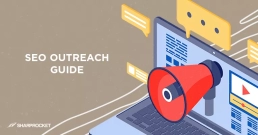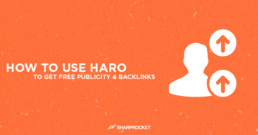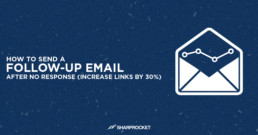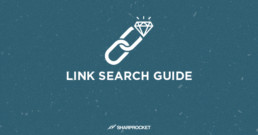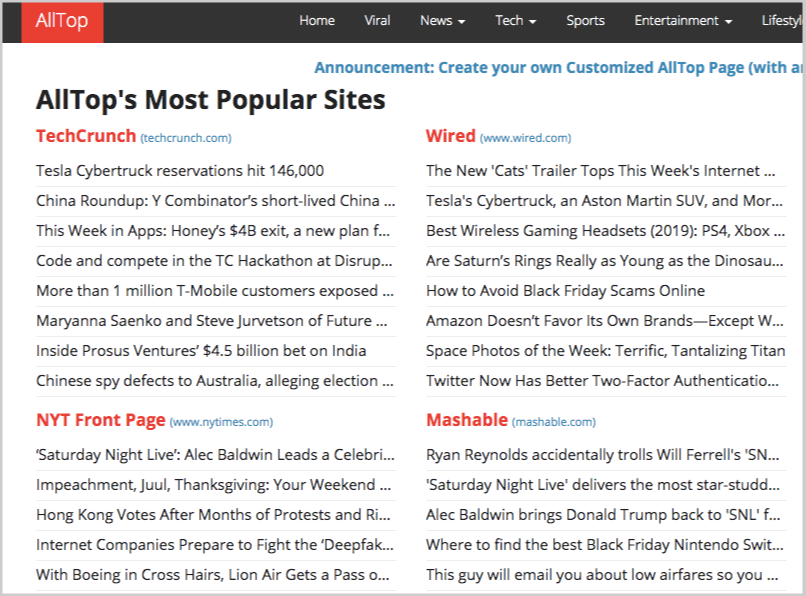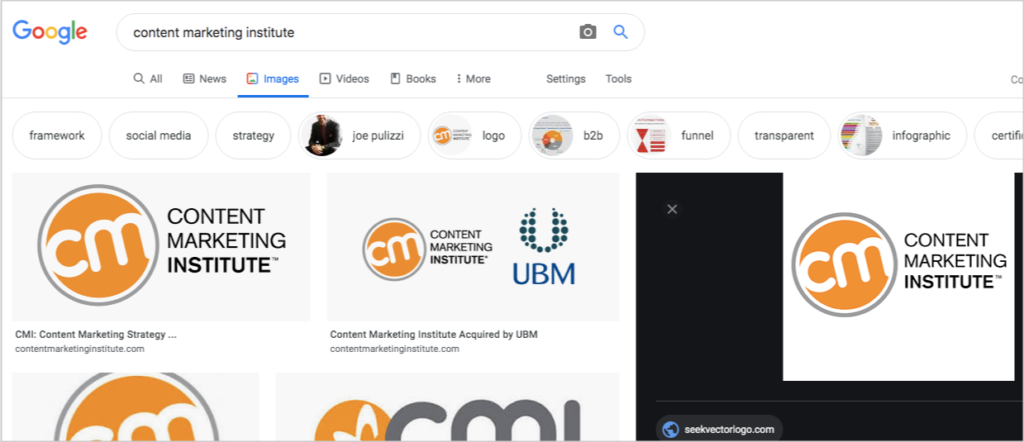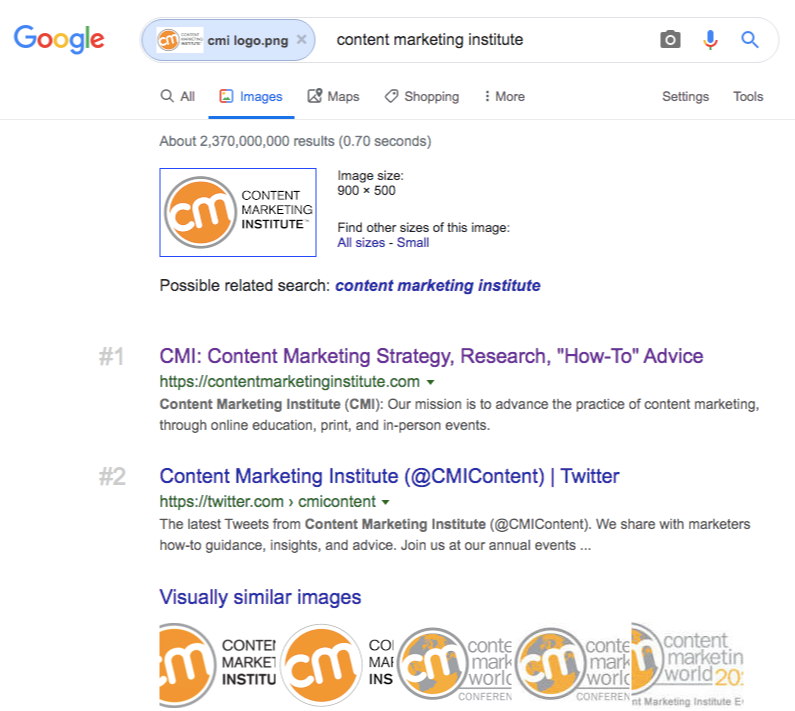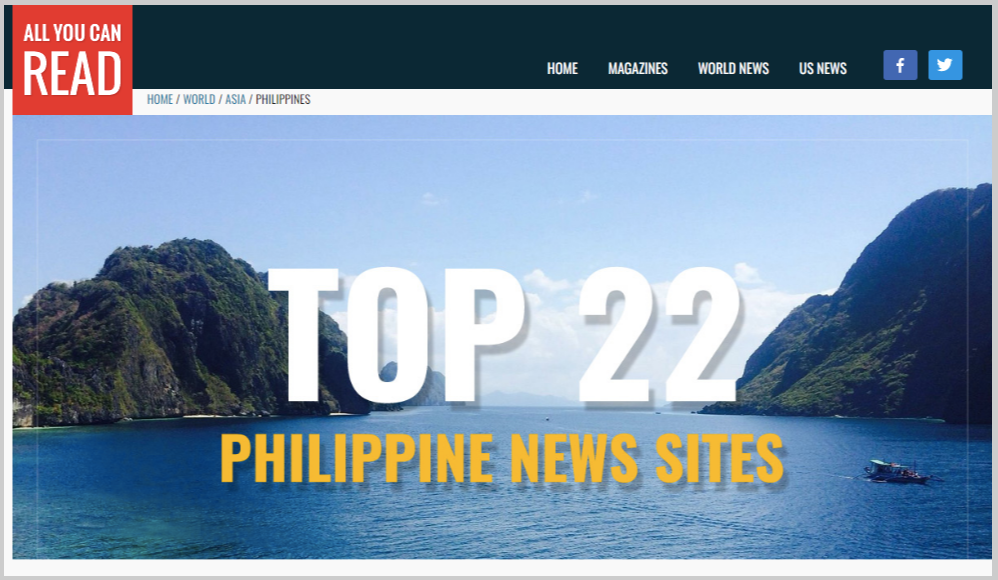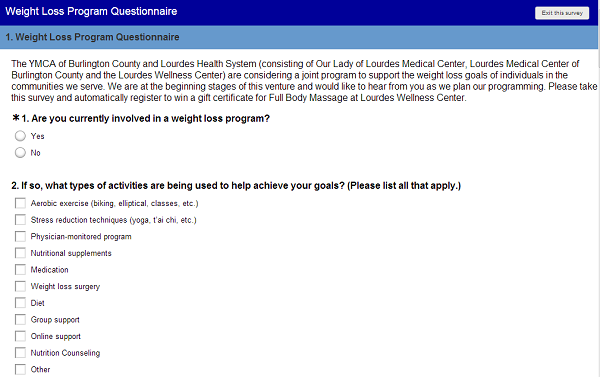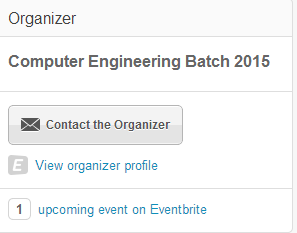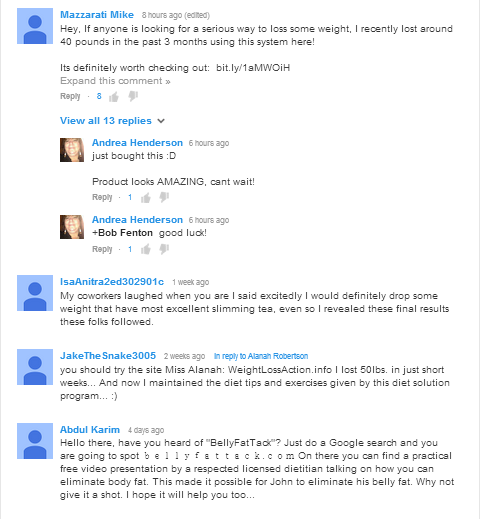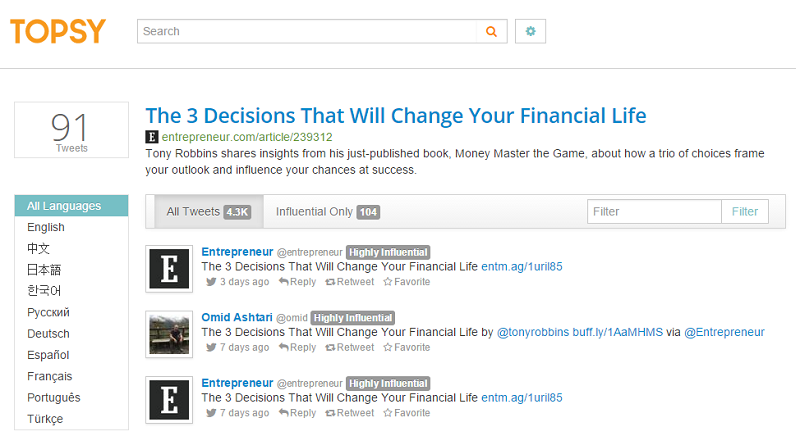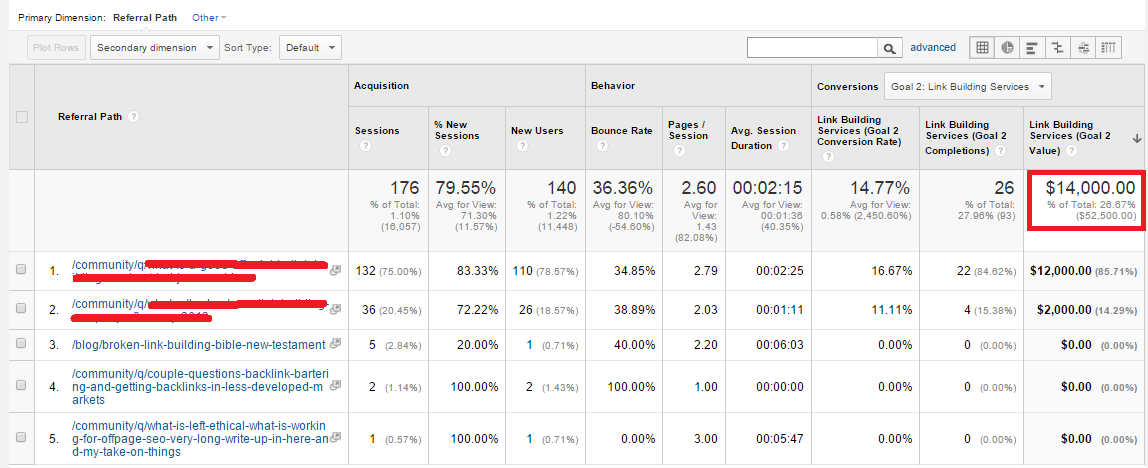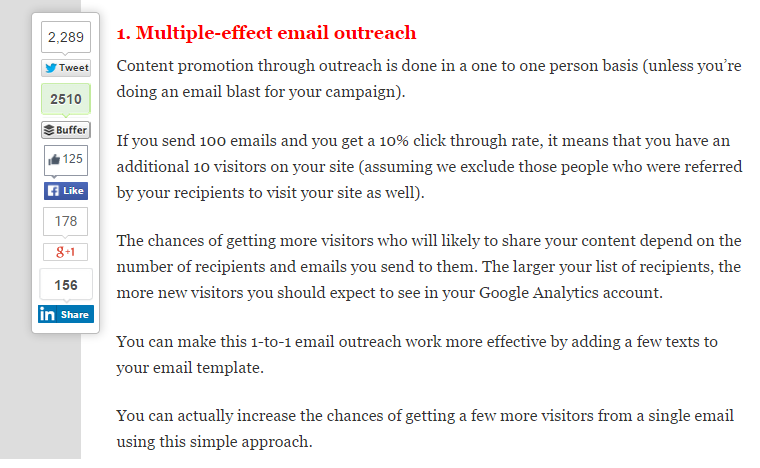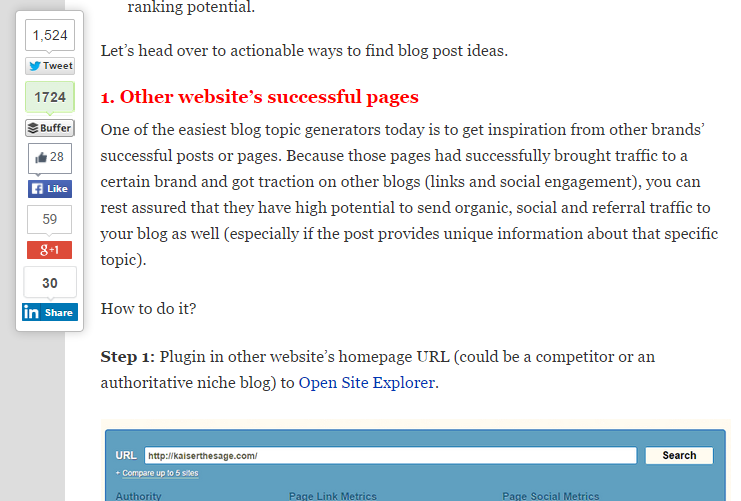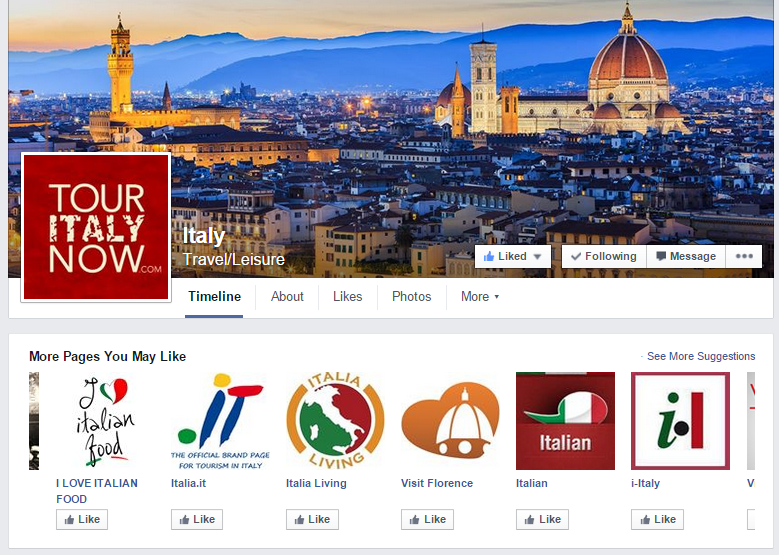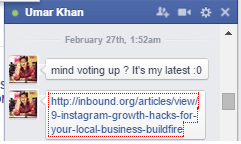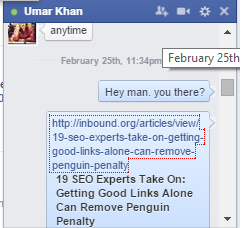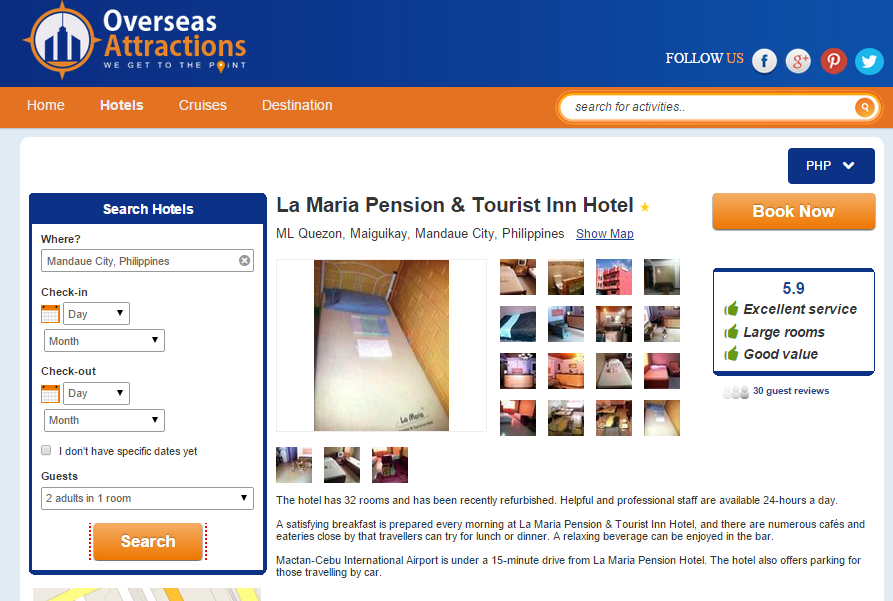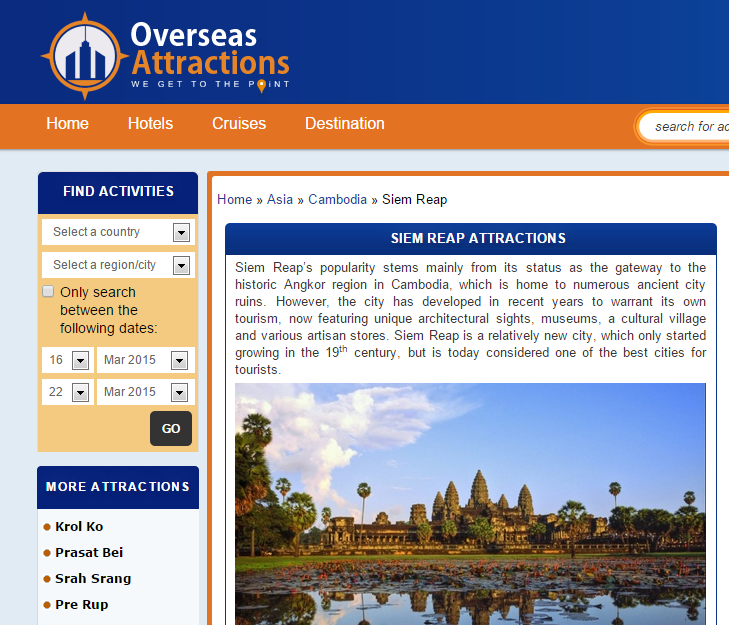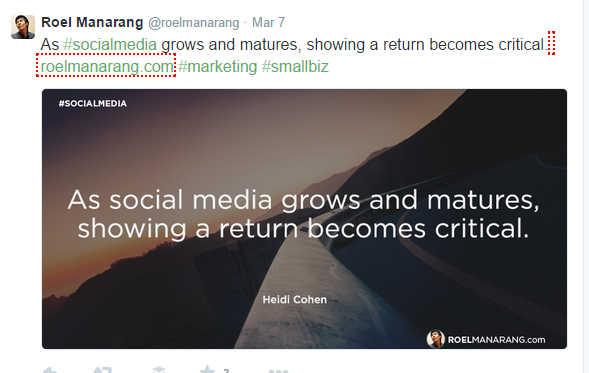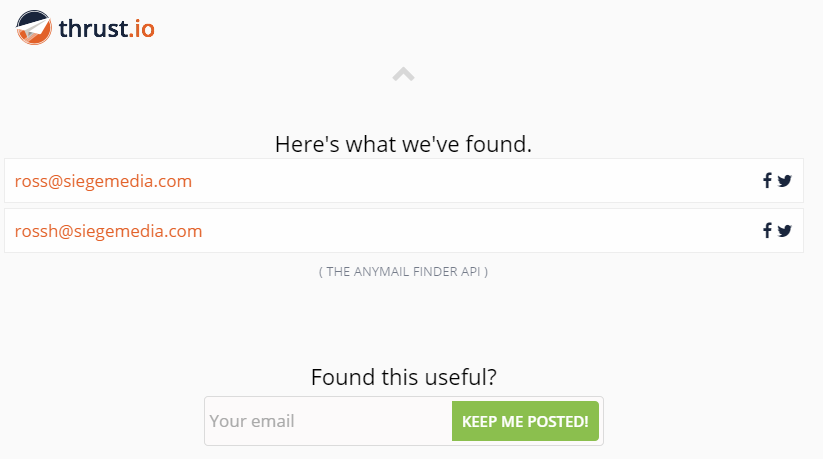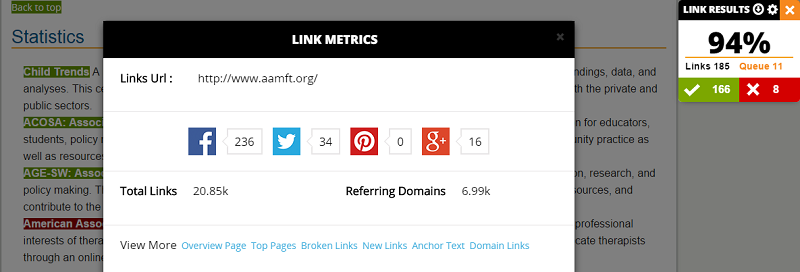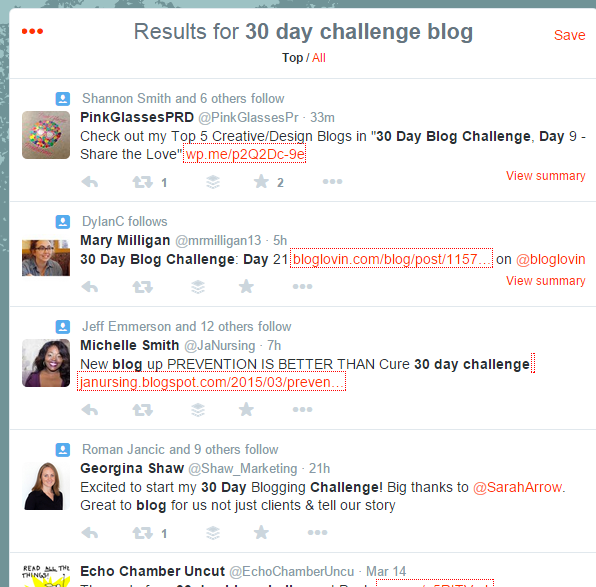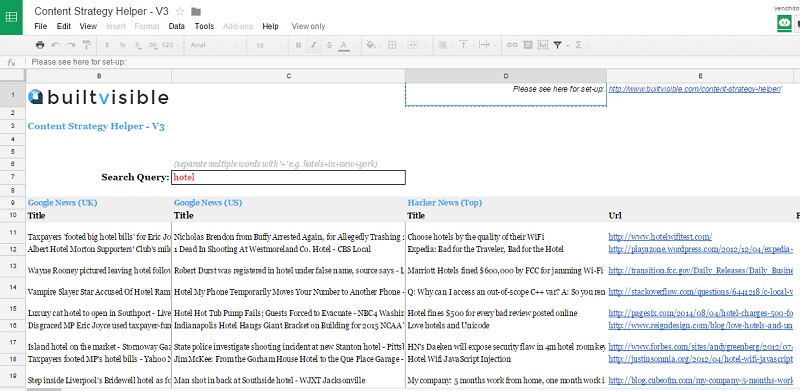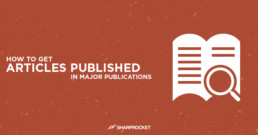SEO Outreach Guide
What is SEO Outreach?
SEO Outreach is the process of reaching out to content publishers and asking them to link to your content to improve your page’s visibility and rankings on search engine results pages (SERPs). Done with the intent to benefit both parties mutually, SEO outreach becomes a strong source of relationships and partnerships for the outreach specialist reaching out to potential link targets.
While anyone can send email pitches to any content publisher they’re eyeing, starting by identifying objectives for your SEO outreach campaign is much easier, more efficient, and more effective.
SEO Outreach Objectives
An effective SEO outreach campaign starts by having the right objective. Without a goal in mind, your SEO outreach will feel pointless, leading to zero to average results in link placement.
The key is to identify what specific goals you want for each of your SEO outreach campaigns.
Here are some critical key factors to consider as your main objectives for a link acquisition campaign.
Topical Authority
Topical authority refers to the credibility of your website about a given topic theme. By publishing more informative and comprehensive blog content about a niche topic, search engines, and search users see you as a subject matter expert.
This helps you to easily rank for informational and landing pages, as Google trusts you as a topical authority within the niche.
When sending SEO outreach emails, you think of establishing your topical authority. You suggest specialized topics when guest posting to build topical expertise on external websites. This sends off-site signals to Google that you’re a go-to personality in your niche through topically relevant content, author info, and other pertinent E-E-A-T factors.
Rankings
One of the main objectives of SEO outreach is to improve your website's online rankings by accumulating backlinks to your target pages. By sending valuable outreach emails, you can get a backlink that passes link authority and equity to its destination (your target page).
And through these links acquired, you increase the likelihood of your target page (informational or money page) dominating the top spot in search engine results pages (SERPs).
Having this main objective gives you the right mindset of providing value to the email recipient (your potential linker) in exchange for a backlink.
Brand Strengthening
Rankings as the primary reason for SEO specialists today when doing SEO outreach. It could also be the downfall for many who only do it for links.
Another perspective is your outreach team’s ability to strengthen your brand by getting backlinks from entities you’d like your brand to associate with.
Through brand strengthening, you make your website the top-of-mind in your industry when discussing certain topics or subject themes. This allows you to generate more branded searches, which helps in improving your site’s online rankings.
Brand strengthening also helps you earn natural links constantly from content publishers who see you as a topical authority in the niche. Most often than not, they link to your resources from their content as they trust your brand as a go-to source of information for every topic available in your industry.
By achieving that, you’re likely to earn links from sites that don’t need to do any SEO outreach.
Sales Perspective
Search engine optimization is not only to drive any traffic but to attract search traffic that has value for the business. From a business and sales perspective, SEO is one of the main drivers for online revenue.
Thinking of this mindset can change your game in SEO outreach.
You'll pick the right backlink prospects by thinking of entities, content publishers, journalists, and brands that can help drive additional conversions to your site.
You’ll see every content publisher you’re reaching out to has the potential to drive direct and online revenue to your brand.
How to Do Link Prospecting For SEO Outreach?
Link prospecting is the first initiative in SEO outreach. It is finding the right websites suited to your link building campaign. And by being the right fit, it completely depends on the situation.
For instance, some SEO professionals prefer to target high Domain Rating (or Domain Authority) websites, as these can immensely pass link authority to your site. Others want low domain rating sites for their local client, leaning towards topical local relevance, much more than authority-level metrics by link intelligence tools.
In link prospecting, you can make a manual approach or scrape outreach lists through SEO tools.
You can do a Google search for manual link prospecting, combining advanced search operators and topics on Google and other search engines.
How to Scrape SEO Outreach Targets?
The easier path to scrape SEO outreach targets is via link intelligence tools like Ahrefs.
Let’s say you want to target pages linking to your competitors. You can reverse engineer their links by plugging their domain into Ahrefs’ Site Explorer. Then quickly go Backlinks report to see all websites linking to their brand.
Filter the results based on your link metrics. For instance, choose only websites with Domain Rating 20+, in-content, and have passed do-follow links to your competitor.
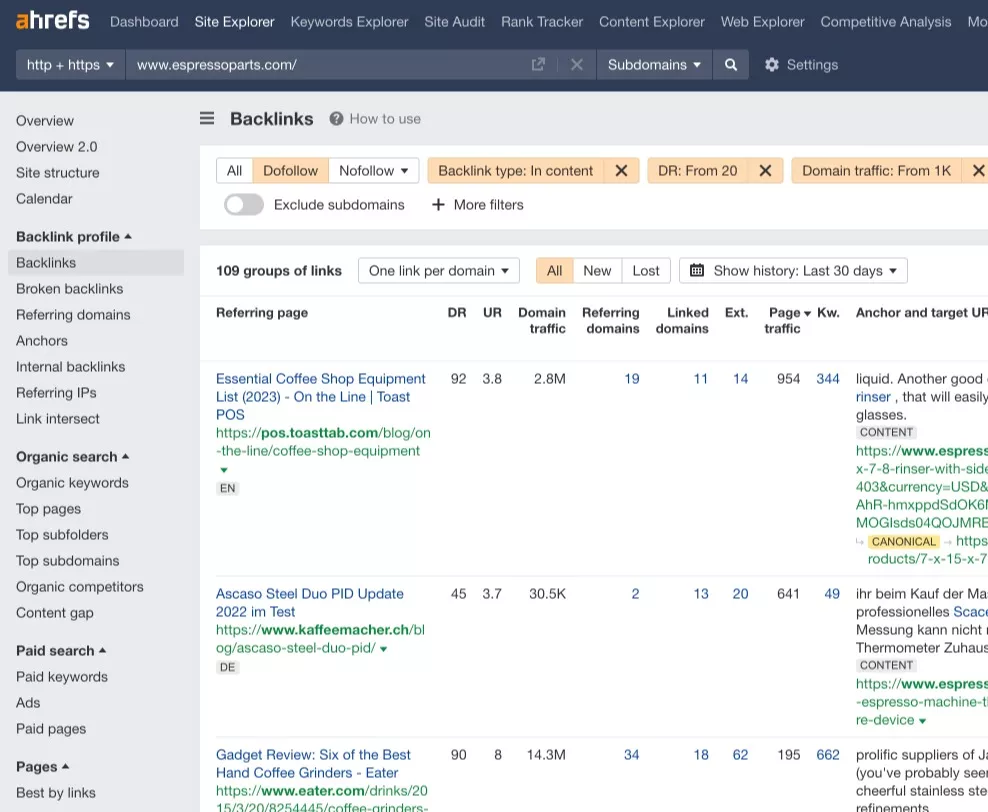
You can scrape these outreach targets by exporting the backlink report directly from Ahrefs.
How to Qualify Link Prospects?
The last result you want to see is getting your website hit by penalties stemming from aggressive link building strategies and being associated with spammy, low-quality sites.
Setting your own criteria to qualify SEO outreach prospects is integral to link prospecting.
Topical Relevance
The basic yet underscore factor of backlink qualification is knowing when a website is topically relevant to your website.
This guide by Glen Dimaandal of SearchWorks shows you the degrees of relevance, and you can incorporate them into your link acquisition campaign.
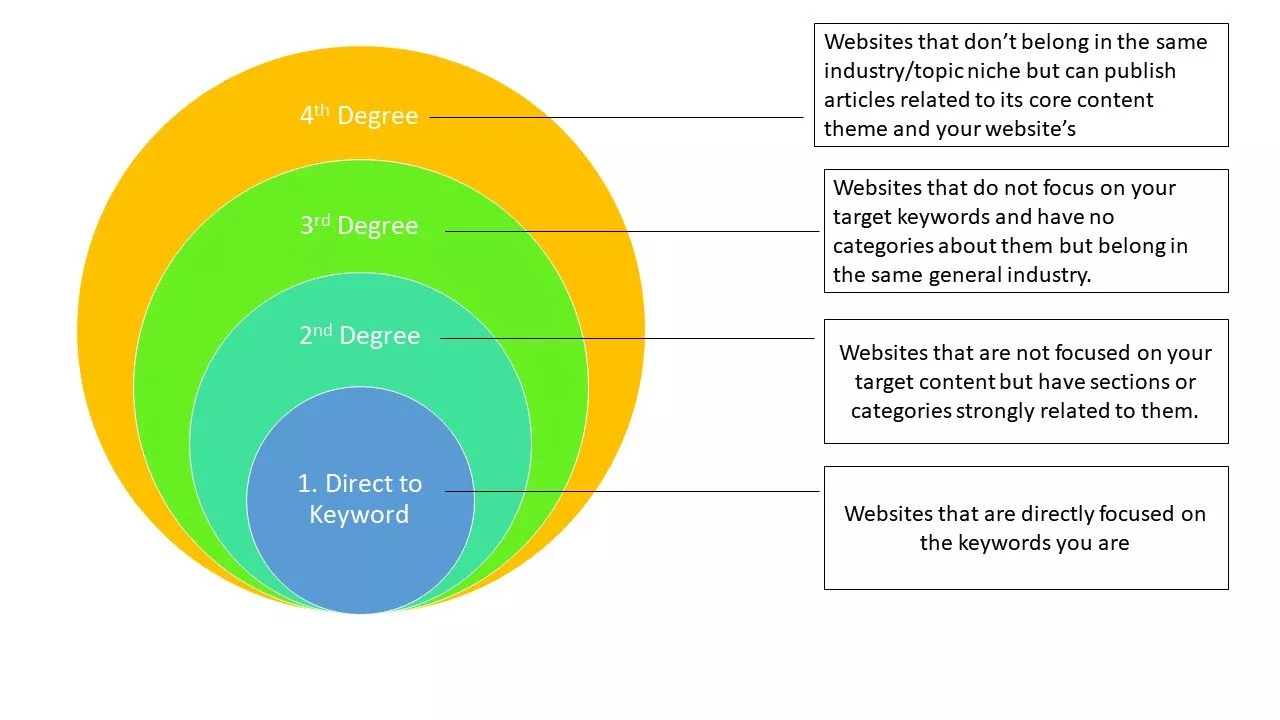
I recommend going after websites directly focused on the keywords you’re trying to rank for. Initially, try to get most of your first degree links before jumping into 2nd, 3rd, or 4th.
For instance, if you’re doing guest posting for a retailer of espresso machines, go for niche websites that especially talk about espresso (first degree) or from coffee websites with espresso or coffee articles (second degree).
As you get limited link prospects, you can find food blogs (third degree) and home and lifestyle blogs with coffee-related articles (fourth degree).
The last thing you want to do is to get high-quality links from completely irrelevant domains. You’ll be investing tons of resources, leading you to nowhere.
Authority and Trust Metrics
Link intelligence tools like Ahrefs and SEMRush give you a quick number of the site’s authority based on these tools’ metrics. With Ahrefs, there are Domain Rating (domain-level) and URL Rating (page-level) metrics to check the site’s authority from a scale of 1 to 100.
The higher the DR of the SEO outreach prospect, the more potent link authority it can pass to your website.
You can use Majestic SEO”s Trust Flow and Spam Score to check the website’s trustworthiness for trust qualifiers. Their trust metric is based on how closely related your site is to their own set of seed-trusted sites. Their team curates and manually reviews these seed-trusted sites for anyone to manipulate their ranking score.
Potential Organic Traffic
In your SEO prospecting, you can come across domains with high Domain Authority (e.g., DR50+) but with less than a thousand organic traffic.
This is a loophole for many SEO professionals not considering the site’s organic traffic.
One main factor you must consider when vetting SEO outreach prospects is the site’s ability to drive referral traffic to your pages through the links you’ll get from them.
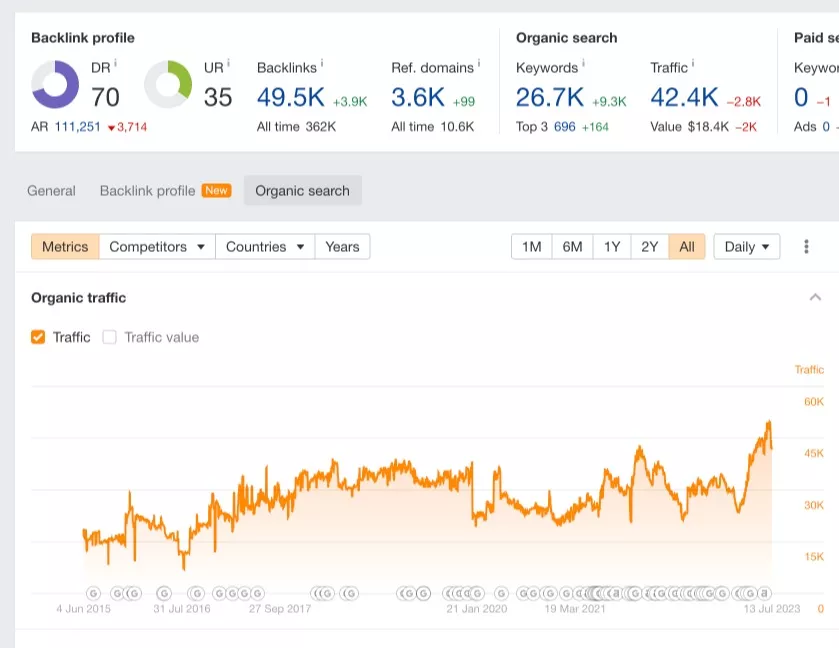
With Ahrefs, you can see how much traffic a specific page gets organically from search engines. Adding this to your metric toolbox can help maximize the value of links you’ll acquire for your site.
Link Obtainability
Can you get a link from the page/website? What types of resources are needed to acquire the link? Is there a need for new content (guest post or destination content hosted on your site)?
Most SEO professionals focus on relevance, authority, and trust-based metrics when checking if the site fits them, but not link obtainability.
Link obtainability is the ability of the website to provide a backlink to your site voluntarily.
For instance, ask yourself if you’re getting a link from your eCommerce store's “where to buy” page. “Do you have products you’re authorized to sell so you can be included in the manufacturer’s where to buy page?
If you’re writing a guest post for a high DR publisher, do you have writers in your team who have expertise on the subject and can craft high-caliber content?
All these things must be considered before doing your SEO outreach campaign, especially during the outreach stage, where you negotiate or request a link from your link prospect.
SEO Outreach Strategies
Different approaches to acquiring links from your link prospects constitute different link building strategies that fit your website.
Initially, you want to know what link acquisition strategy you can use to get inbound links.
While this list isn’t massive, you’ll find new techniques to capture an audience and get a link without being too aggressive with your SEO outreach campaign. Let’s dive into each SEO outreach strategy.
Choose highly specialized topics when guest blogging.
If you’re unfamiliar with guest blogging, guest blogging refers to writing a new piece of content on other people’s content publishing site that adds value to their readers while having a contextual link to your website.
These days, you’ll see in your inbox “crappy guest posting pitches” with a generic list of topics they have sent to multiple blogs already. Without considering the blog’s traffic, intended audience, and other pertinent success factors to ensure they’ll provide value to your readers.
You may receive one of these email pitches that starts with “I’m a big fan…” or “I’ve read your blog..”, which are awful, inauthentic outreach templates.
Choosing highly specialized topics is one of the best things to stand out in guest blogging.
If you’re targeting a high domain authority website, you’ll find they have a list of topics they want their outside authors to cover when writing a guest post. This means they have strict guidelines for the editorial piece regarding word count, content theme, and links you can only use as references.
All these correspond well whether or not you’ll have the opportunity to land a guest post on their blogs.
By choosing highly specialized topics, you’re writing about topics they don’t normally publish on their blogs, as they haven’t incurred enough expertise on the subject. Thus, most of their topics only cover ones they know about.
By being different with your chosen topics, your SEO outreach campaign stands out, leading to a more positive response and, eventually, a guest post you wish to have.
For instance, in the SEO space, most digital marketing agencies and bloggers pitch topics about link building and content marketing. However, only sometimes do you see guest posts on analytics and UX.
By going after these highly specialized topics that require extensive experience to develop actionable content that provides value to readers, you stand the chance of being a few of the authors these high authority sites accept in your industry.
Reverse SEO outreach
Reverse SEO outreach is building content assets that other content publishers want to get links from (not only building links to).
Instead of requesting linkers for backlinks to your content, you let them come to you and ask if they can be included in your content.
How’s that possible?
You use link roundups to get outreach emails from brands wanting to be included in your post. Brands want to be on your “list posts” where there’s likely an opportunity to get referral links and sales through clicks.

So, instead of using link roundup as a value proposition to approve link requests from other content publishers, you use it to bait brands and content creators to send you outreach emails. This way, you got more leverage than when you reach out to these people for link requests.
The best way to initiate this is to come up with a solid idea of what entities, brands, and content publishers you want to curate that are relevant to your site and has the potential to attract outreach emails after it ranked for their keyword.
Establish Thought Leadership in Outreach Emails
The missing values in most SEO outreach emails are authenticity and credibility. When people see you as an authentic person, writer, or expert, you increase the trustworthiness of your email.
One way to increase response and link placement rates in your SEO outreach emails is to position yourself as an authority in your industry.
Include a corporate signature if you’re sending from a digital agency or in-house SEO team.
Mention authority sites you’ve written for, especially ones that have been top-of-mind in your space. Entities you’ve been associated with that can be useful as social proof to be perceived as a thought leader.
You may also choose topics their site is missing to write about that can help increase their site’s organic traffic via ranking. Use Ahrefs to plug in the domain and see what topics could be useful for the site to bring additional organic traffic. Tap into Ahrefs' Content Gap Analysis and see what their competitors are currently ranking that your content publisher isn't yet.
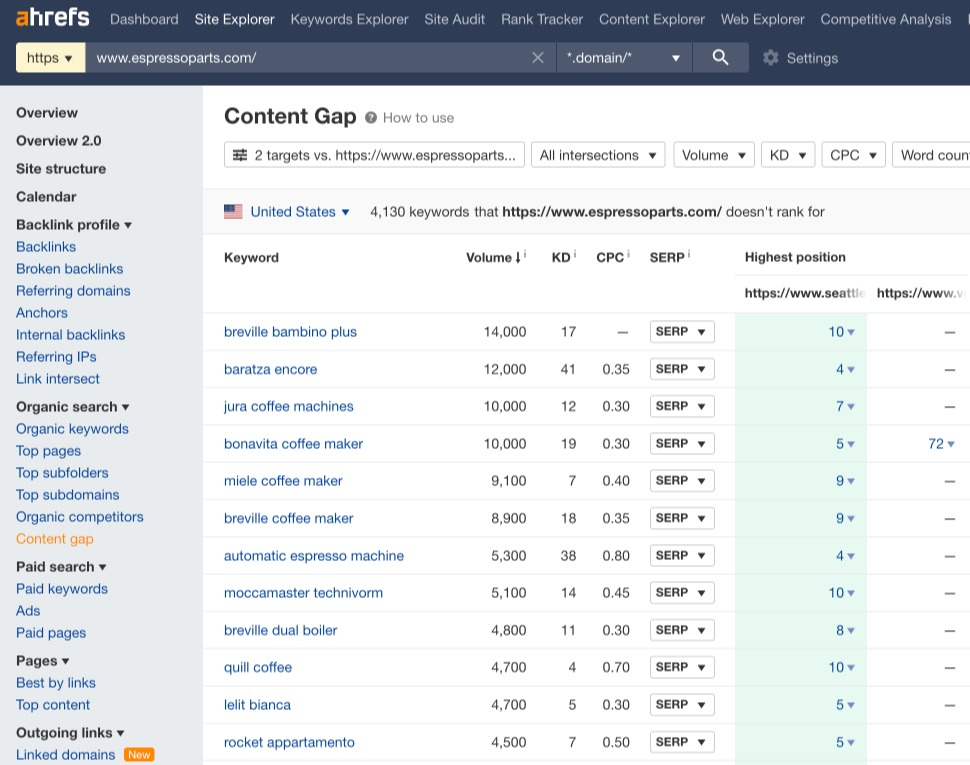
Relationship Building
Sustainable link acquisition requires building stronger relationships with other content creators.
By focusing on a few yet highly valued content publishing sites, you leverage resources, which include creating new regular content pieces - allowing for a steady number of links for your site.
Build relationships with active guest bloggers in your industry. You can use Ahrefs’ Content Explorer to find these authors quickly.
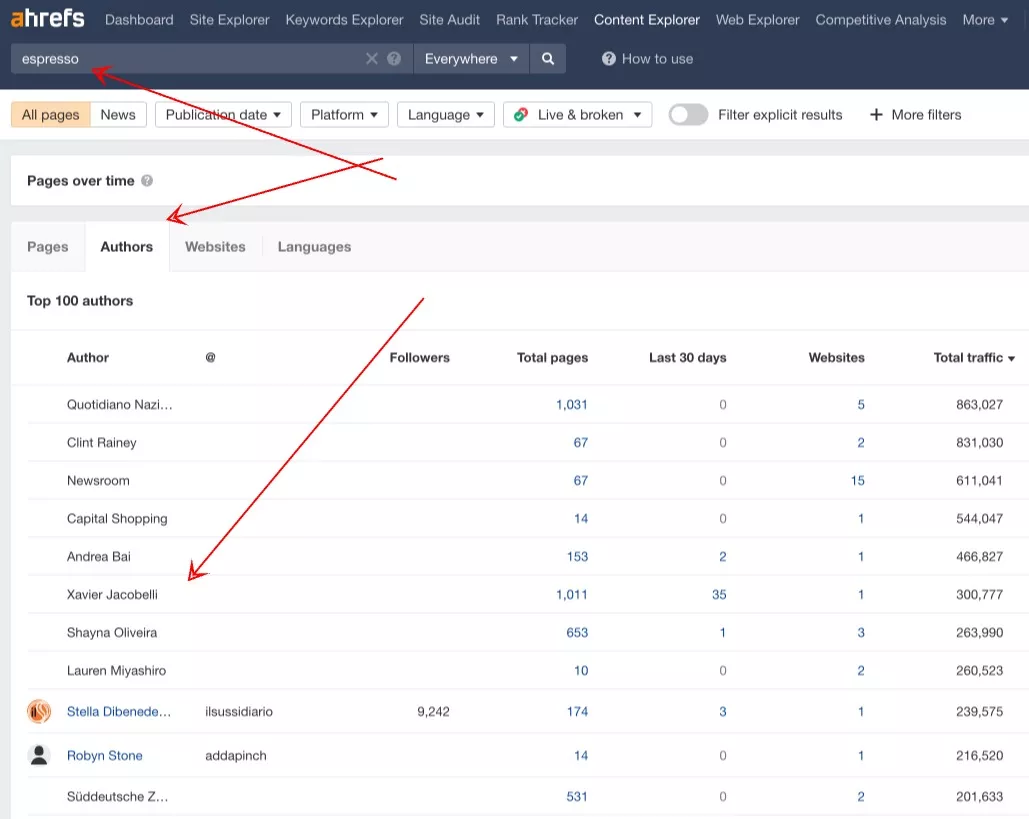
Check their website to see if they write guest posts for their clients or their own websites.
Reach out to them and offer links to your future guest posts, pointing to one of their articles. And in return, ask if they can also provide links to your site from their future guest posts.
Peer Review
I got This SEO outreach strategy from Jason Acidre’s talk on advanced link building.
This link building strategy aims to get niche experts to review your content asset, ask for feedback, and improve it based on their recommendations.
By doing so, you improve the quality of content by allowing thought leaders in your space to add more points, include some data, or have them review your content.

You can include them as peer reviewers at the bottom of your article to increase the trustworthiness of your content asset (which is a big factor in today’s Google E-E-A-T).
A peer review strategy is also a way to initiate connections with thought leaders you want to associate with your brand without being aggressive or using traditional techniques, such as interview requests.
Semi-Personalization at the Initial Outreach Stage
The SEO outreach campaign is tedious work. Most link builders give up after their first few attempts.
One of the hurdles in link acquisition is the scalability issues, as it would consume hours to send individual personalized emails to your link prospects.
In our link building agency, we send semi-personalized emails at the initial outreach stage. This saves hours from highly personalizing emails when some of which may not incur responses.
Include the name of your contact person, a quick overview of your content, or your offer. Then once there’s a positive response, you can write a lengthier email about your offer/content details.
By doing so, you scale your SEO outreach campaign by focusing on link prospects that are obtainable for link requests.
Use Creative Approaches in SEO Outreach
Test new SEO outreach strategies for fresh new links and double down on these efforts when there are tangible results.
The key is to keep traditional SEO outreach strategies from boring you. Look at other industries, see what they’re actively doing, and have gotten positive results with it. Replicate their effective strategies and make them worthwhile for your context.
SEO Outreach FAQs:
What is SEO outreach?
SEO outreach is a strategic approach to building high-quality backlinks through research, valuable content creation, and effective management. Businesses can enhance their online visibility and improve search engine rankings by identifying and placing relevant links on external websites. A well-defined process for selecting and monitoring link performance is crucial for successful SEO outreach.
What does an SEO outreach specialist do?
An SEO Outreach Specialist researches link building opportunities on quality websites manually and with SEO tools. They conduct outreach campaigns, monitor progress, and build relationships with partners, webmasters, and influencers.
What are the outreach techniques for SEO?
To enhance your SEO outreach, produce high-quality content, and generate interest. Identify key influencers in your industry and engage them. Participate in online communities and leverage social media to promote your content. Keep an eye on your competitors and use tools for link prospecting. Contact journalists and bloggers for additional exposure.
What is an SEO outreach manager?
An SEO outreach manager is responsible for identifying and securing client link-building opportunities. Their main task is to convert brand mentions into links, which helps improve the client's website visibility and search engine rankings.
How to Use HARO For Backlinks
What is HARO?
Help a Reporter Out (known as HARO) is a free service that connects journalists and publishers to content contributors with the aim of securing valuable media coverage for brands and individuals.
If you are a brand looking for publicity, don't look further than HARO. It has a lot of benefits that you could never imagine only spending 30 minutes to 1 hour a day.
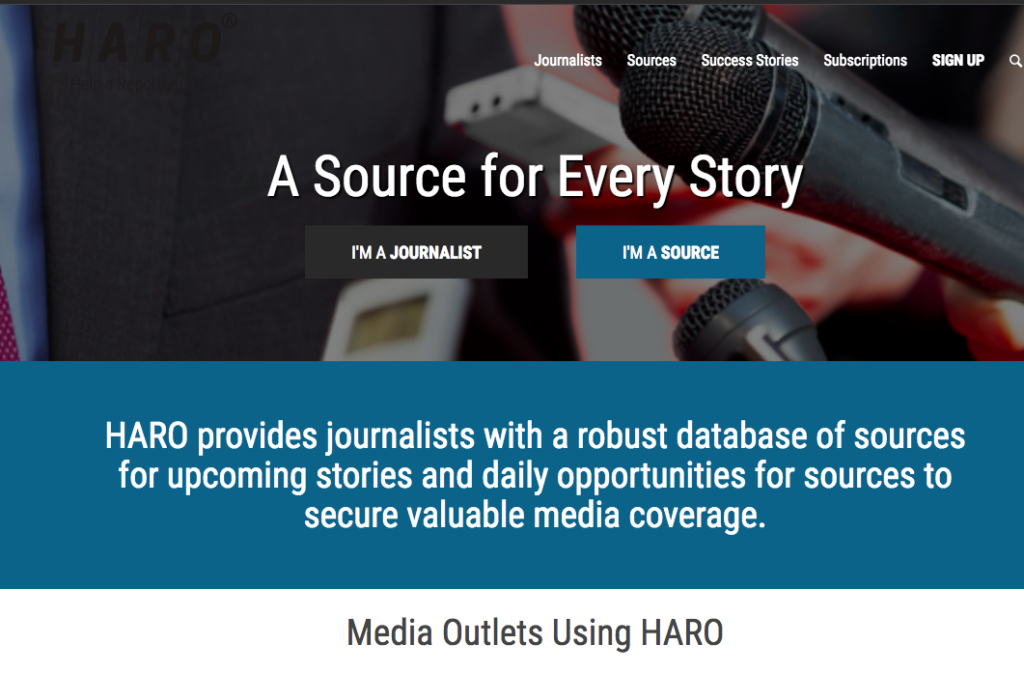
Benefits of Using HARO
1. Free service
HARO is a must-try for you if you're looking for ways to promote your brand without spending much on high-priced tools.
Its premium features allow more filtering and offer more opportunities to maximize your strategy of using it, but HARO's free service is a good start for new and established brands.
2. Easy to respond
Many available platforms connect you to publishers and journalists, but most will require you to participate inside the platform.
There's nothing wrong with it, especially if you're trying to put all campaigns in one place. However, if you're only working on one site, you want the flexibility of communicating with the publishers at your own pace.
HARO can easily send story requests straight to your emails. You can reply to them either you're on desktop or mobile.
3. Personal branding and thought leadership
Personal brand, as originally coined by Tom Peters in a Fast Company article, "The Brand Called You", are figuring out how to transcend the narrow boundaries of their categories and become a brand surrounded by buzz. He forecasted that human beings would think of themselves as a unique product.
If you can personally put your brand ahead by showcasing your expertise on a subject matter, HARO gives you a way to do that.
Knowing the subject matter and being known for it are two different things. Through journalists' requests for questions to be answered, you are hitting two birds with one stone: getting more exposure and targeting an audience your brand can offer (servicing their needs).
4. Social proof
Getting featured in top publications in your vertical can be used as social proof on your website. Whether it's a logo you can include on the most visible sections of your homepage or use it as additional credibility to your guest posting portfolio, both give leverage to push your brand further out there.
How Does HARO Work?
Sign up as a source.
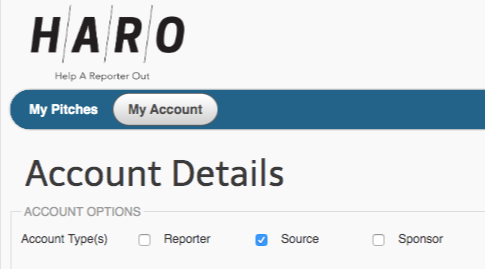

After you sign up, you'll get three emails a day — scheduled at 5:35 a.m., 12:35 p.m., and 5:35 p.m., ET from Monday to Friday.
Those emails come from journalists requesting additional content contributions, interviews, and even quotes for stories they are working on.
You, as a source, respond to their requests, and these journalists will respond to you if they find your response fits their needs.
Finally, you get featured in their publications.
How to Use HARO For Backlinks?
Many people overcomplicate the process to use, but the reality is that it’s not that hard.
Here’s how to use HARO in four simple steps:
- Choose relevant topics.
- Set up emails through filters.
- Set up IFTTT for important requests.
- Choose relevant HARO inquiries.
Choose relevant topics
To maximize the use of HARO, choose topics only relevant to your brand. Don't waste time trying to pursue topics you don't have expertise in.
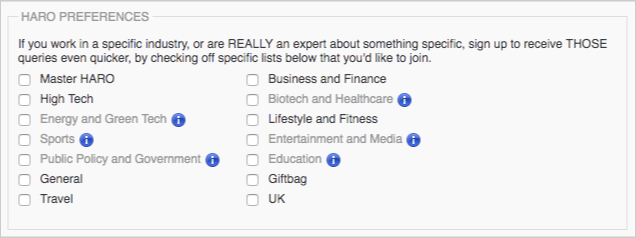

Checkboxes of industries where you can highly participate in content contribution. You may be tempted to check all, but it will only add clutter to your HARO emails.
I highly recommend only choosing one or two that best fit your site. If you're an agency, it's no doubt you choose all for your clients — and only filter the emails based on categories and expertise once they arrive.
Setup emails through filters
Once you properly set up your emails, you'll receive emails listing journalist HARO queries connected to your topics.
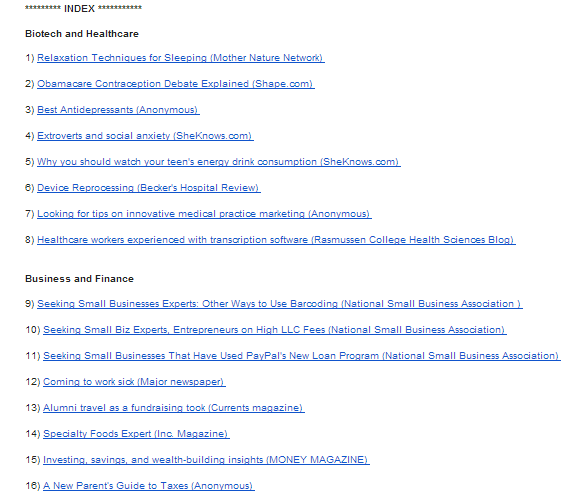

Furthermore, create filters for all emails ‘from:haro@helpareporter.com’ inside your inbox. Here are the filter options you can use:
- Apply the label — label a category to HARO emails as soon as they arrive, so you can quickly prioritize them at times (particularly if you're getting hundreds or thousands of emails).
- Never send it to spam - it prevents any HARO email from getting caught in your spam filter.
- Categorize as Primary — to quickly transfer those HARO emails to your inbox's Primary Tab.
Setup IFTTT for important requests
To ensure you can respond to important requests, you can set up IFTTT (If This Then That) to update you quickly whenever there are new HARO requests.
The advantage of doing so is that you can respond immediately to email requests while on mobile. It works best for people outside the US/UK timezone, as you can do the HARO strategy even while away from the office.
If you want to use more of the technique, here are some IFTTT tricks to help you with semi-automation activities.
- Create an Applet to get an SMS sent to your cell phone whenever you receive an email from a HARO inquiry focused on a specific topic.
- Craft a draft email response in your notes so that when you receive an SMS alert of a new HARO inquiry, you can simply replace a few fields in your response template and send it to the journalist as quickly as possible.
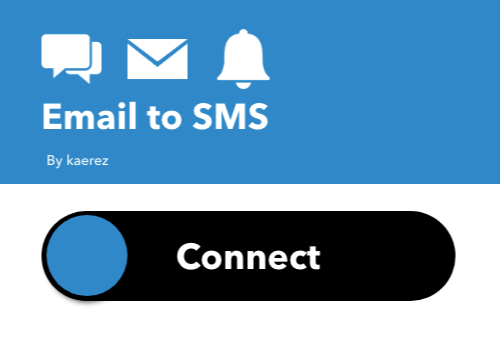

Those IFTTT initiatives can help you to stay on top of PR requests.
Choose relevant HARO inquiries
Scan your HARO emails quickly. Choose inquiries that are most relevant to your small businesses. Look at categories such as Business and Finance.
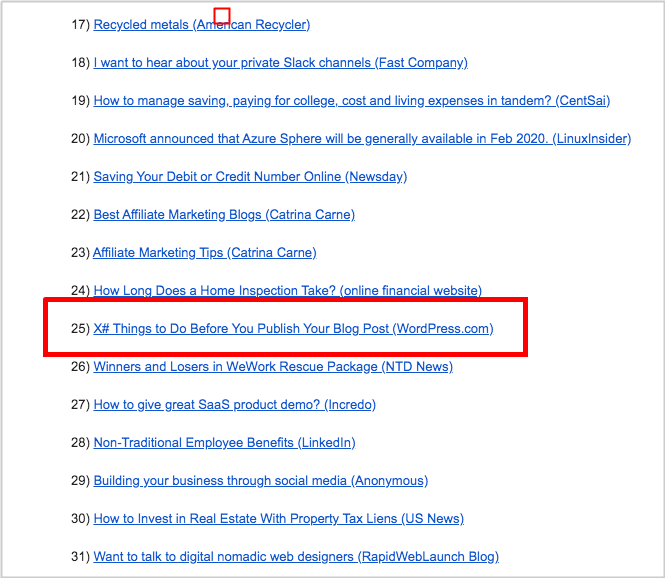



That's why it's important to identify your (or your brand's) expertise, given that it'll be easy to make choices when reading HARO emails.
Next, the most difficult part of this HARO strategy is writing pitches that work.
How to Write a HARO Pitch That Works
Needless to say, journalists receive several responses for HARO pitches.
Like you, brands, agencies, and individuals are ready to send their replies as soon as they can.
But you can't simply send quick emails without thinking about your content properly. You may end up pitching tens of emails daily without getting much return from the strategy (i.e. contextual links).
You can't shortcut our response to an inquiry.
Here are some tips for writing a HARO pitch that works effectively:
- Get in early.
- Read the instructions carefully.
- Make subject lines relevant and clear.
- Write a concise email.
- Send appropriate attachments, quick bio, and headshot
- Build a mutually-beneficial relationship
- Seek out freelance journalists
1. Get in early
This tip should be first in line.
You can craft a highly effective HARO pitch, but if it's done 24 hours after you receive the HARO email pitch, you won't get much success with it.
Timing is important. Respond as quickly as possible to HARO emails. Your response time should be as 30 minutes as possible.
However, make sure you deliver a good-quality response. It won't cut if it's just an early response yet a crappy contribution.
2. Read the instructions carefully
In most cases, journalists or publishers, whether from big publications like Mashable, Wall Street, or New York Times or from a niche authority publisher, provide explicit instructions to follow. These include what type of content they need you to submit, what they're actually looking for in a contributor, and even what not to do.
It's important to read those instructions before jumping to write your email.
3. Make subject lines relevant and clear
For example, if a HARO lead is a journalist writing a blog post about "personal kanban productivity", your email subject should be as straightforward as this one: HARO: Personal Kanban Productivity.
You want to make sure your email subject line is 100% relevant. This will cut through the noise of other responses to that same HARO inquiry. The same principle applies to every other outreach campaign, like blogger outreach.
4. Write a concise email
The last thing you want to do is to craft an email that's worth 10 minutes of time to read.
The key to writing a HARO pitch that works is to keep it short.
First, do not promote yourself in the email - you can add it later. But don't start your email with a full background of yourself and what you do.
And don't ask for links very quickly. I'll discuss later how you'd ensure links from your quoted contribution. But for now, focus on the value of your contribution.
The simplest way to concise your email is to write 2 to 3 bullet points with data that would help the journalist on the article he/she is writing.
Focus on the goal of being quoted as a source in the article. Publishers and journalists don't come into HARO and ask for an entire article — remember. They're looking for a tip, data, or a short-form text for the content piece they're creating.
Here is an email template from ____ that you can play around with—split test repeatedly depending on your needs.
Hi [Journalist's Name],
My name is [Your Name], [short bio]. Here is _____________________:
1-2 sentences.
1-2 sentences.
1-2 sentences.
I'd love to talk more and help you with your article. Just drop me a line at [your email] or [mobile number].
- [Your Name]
Keys to success:
- No overpromotion in the first contact. By offering much help in the first place, you can instantly build a rapport and get returns in the long run (more on this later in the relationship-building part).
- A quick introduction is important, like any kind of email.
- Send a succinct content contribution to a HARO inquiry. Write exactly how you want it to appear in the article.
- A contact end line at the end of the email address helps the publisher to contact you immediately if there's any revision he/she needs in your quote and wants more of you to discuss what you contributed.
5. Send appropriate attachments, a quick bio, and a headshot
This is the moment you can't be aggressive with follow-ups.
Remember, HARO journalists get a gazillion requests for including short content all the time. It may take a while before they respond to your HARO pitch.
But once you receive a response from them, they may ask you for any appropriate attachment, a quick bio of yours/your brand, a headshot, and additional contact information to the content you've contributed.
A good recommendation is to upload your headshot to your website or Imgur and simply send them a link in your HARO response instead of attaching it to the email.
6. Build a mutually-beneficial relationship
Achieving success with your HARO pitches can be repeated as long as you can deliver good content to the same journalist.
Build relationships with publishers. Ask them gently to get back to you if there's another opportunity to work together.
Tell them you are open to working with them and providing all the details they need.
Don't just contact them when you want something — find something useful first relevant to what they want to write about and send it to them.
Build trust more than just getting a link.
You can check out this guide on the best email outreach tips to further enhance your relationships with publishers.
7. Seek out freelance journalists
You would find journalists doing freelance work — these are the ones who write for several different publications simultaneously. They have ongoing relationships with different publishing sites and have a huge network of content creators they partner with.
If you can connect to these people, you'll have a chance to acquire more inbound links from their connected sites.
One good way to leverage this strategy is to set up alerts for any new articles written by freelance journalists you've engaged with.
Start sharing their latest articles on social media and comment on their content as soon as it is published. This initiative would help you put it on their radar and increase the chances of getting more HARO opportunities.
You may sometimes share new content ideas with them via email or add additional input. This is a perfect way to follow up with them and potentially acquire editorial link or a social share.
What do you do next when you don't get a response from your HARO lead?
Monitor your HARO placement.
How to Monitor Your HARO Placement
You won't always get a response from your HARO journalist — so the best way to stay on top and identify if you get a mention or your quote gets cited in an article is to monitor your link placements.
You can use Google Alerts or Ahrefs alerts to keep track of the quoted person/brand you've included in your HARO pitch. It's important to remember what you've included in your contribution as a contributor — that will be the element you'll be monitoring.
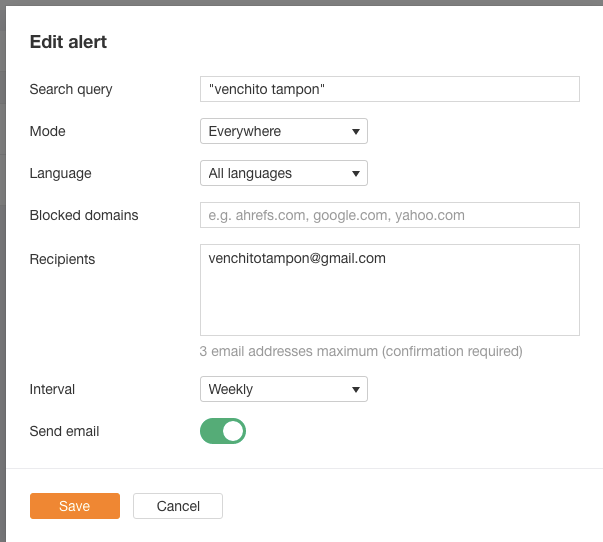
HARO Link Building In Action
This guide will not end without a short case study of how I do it as part of our digital PR services.
The process I've shared is exactly the same workflow I followed to get a contextual link from Inc. Asia:
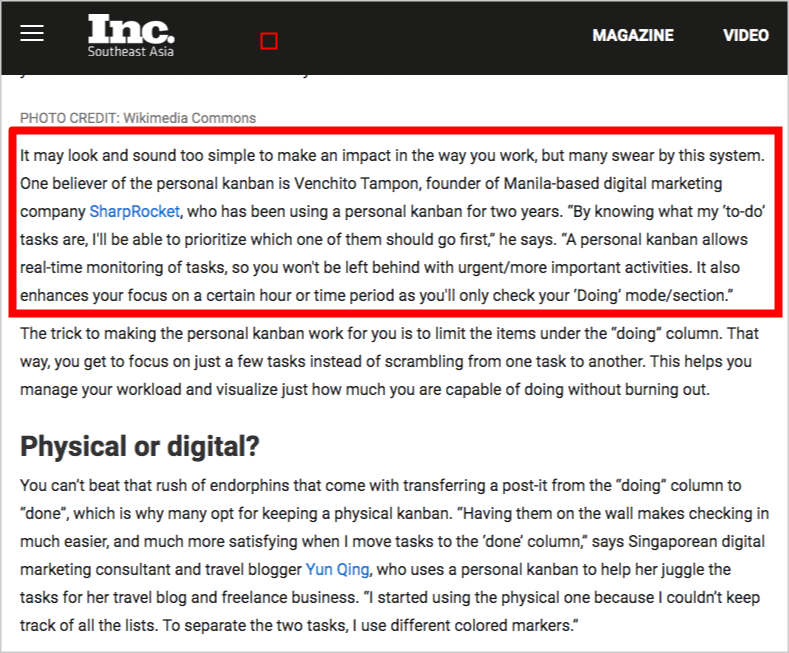
So here's how it started.
I signed up for HARO, chose preferred topics that I'd like to contribute to HARO requests, and scanned daily emails.
Then I stumbled upon this HARO inquiry. It perfectly fits my background - an ASEAN entrepreneur and someone who loves productivity at best.
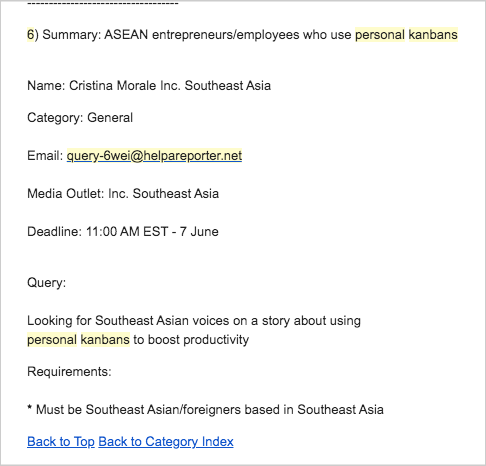

I respond quickly with a short and concise response. As you can see below, there aren't any bullet points yet, as there is no instruction or direct questions from the inquiry. So this is an exemption to the rule of adding bullet points. Always check the instructions if these are included in the HARO inquiry.


Then I received a response from the journalist - asking me questions.
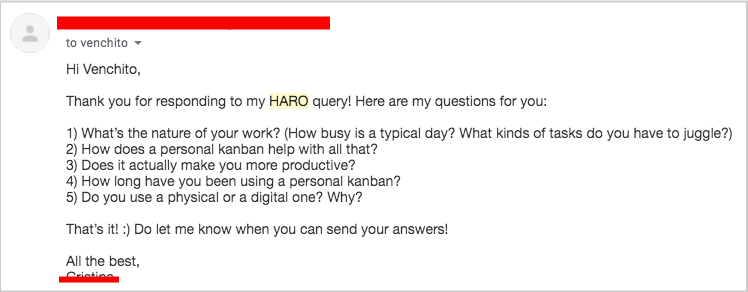

Without a doubt, I submitted my response - quite lengthy as it answers 5 questions.
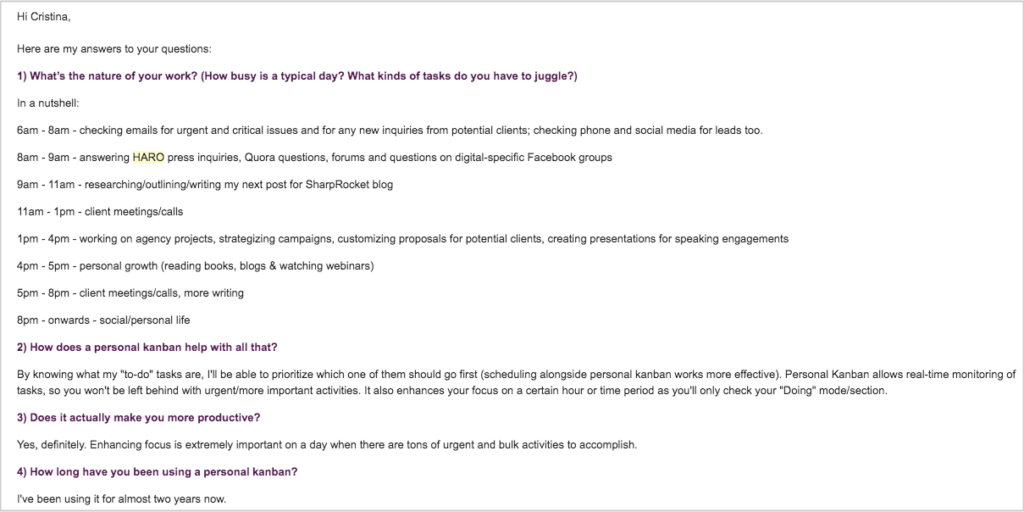
Here's where I'll stop for a moment.
I got the link already, but there's another opportunity for another backlink. You may also want to set up a Google alert to monitor your mentions.


To make the long story short, I submitted another response to her next questions and got another link.
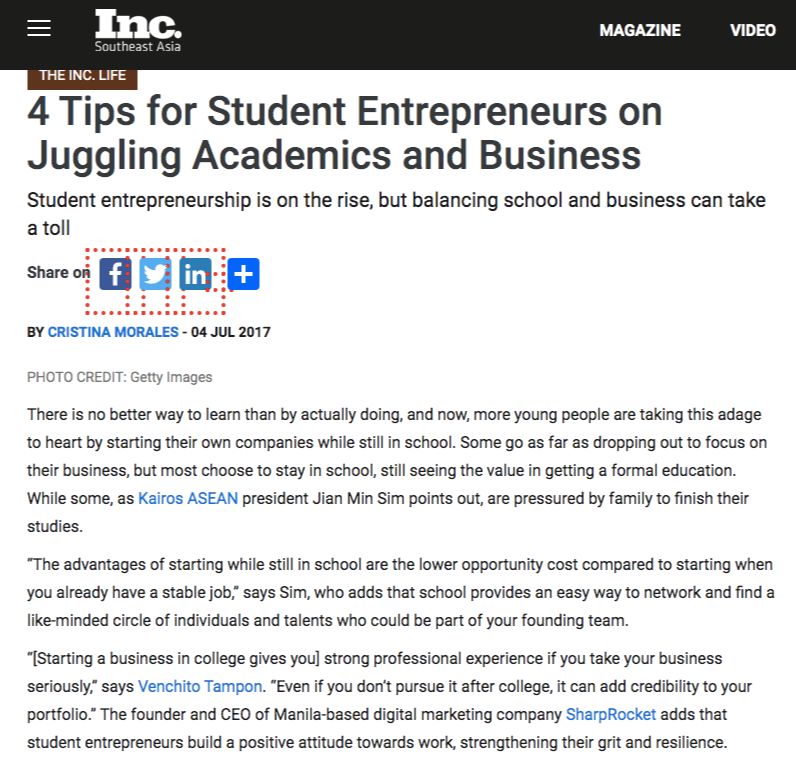
Keys to success:
- Respond quickly as as you can.
- Be straightforward to send your response.
- Build relationships with the journalist/s - you might get another feature in his/her story.
Advanced HARO Tips
We've covered how to write a HARO pitch that works. You'll have to start from there and test it by changing elements to keep it short yet adding more value to the journalist you're pitching to.
There are techniques you can test out yourself that will add incremental success to your HARO strategy.
Here are some advanced HARO tips you can apply directly to your campaign.
Request for homepage links
If you get a link in your mention for your contribution, you are extremely happy with it, especially if it's from a high publication site.
You get a contextual link, but having a link to your homepage isn't amazing.
There is one way to do that: request a homepage link.
It may be easy as it sounds, but you have to look at what types of content you have suggested to be included in your HARO pitch. You need to have a good reason for a link to a homepage.
If contextual fits, such as group interviews, quotable mentions, and the like, getting a link to a homepage link isn't much to ask. Looking at it from a reader or user perspective is more natural. If they want to know more about the brand or who quotes the tip, then they would simply click on the homepage link and see more details.
Respond via Twitter
There are times when there is an instruction in a HARO inquiry to connect via Twitter.
If you choose to respond via Twitter, email them so they can contact you directly, or you can offer to DM their details.
This kind of initiative speeds up the back-and-forth process of communication.
Send content that requires less editing
When responding to HARO inquiries, always be mindful of your journalist.
You want him/her to spend less time editing your content. Do the content legwork for him or her. He or she should easily plug what you've contributed to their articles.
Given that, if your short-form content piece isn't quite fit, it could be a lost opportunity.
Use a compelling angle in the introduction
Many HARO pitches will have a templated introduction of what they do or what their company does.
While that may work if it's the right fit for what the journalist is looking for, I suggest you find a compelling angle relatable to their current inquiry.
This way, you're telling the journalist you deserve the quote, as you know about it. Don't mention links at all
Most journalists are irritated with people asking for links when they haven't contributed much value to their HARO pitches.
Don't worry. You can ask for a link after your short-form content has been approved.
But during the engagement, stay focused on the value of your HARO pitch.
What You Get With HARO Paid Accounts
The first advantage of subscribing to a paid account in HARO is that you can set up your own profile or bio — which can be included in your pitches.
Though you can do it quickly with your free account, your bio that includes your website URL and your social media profiles, when easily plugged in straight to your pitch, can lessen the time adding it to your email every time you respond to inquiries. This saves you enough time for crafting emails.
Another good thing with HARO paid account is that you can add details related to the specific areas of your expertise and any previous publications in which your brand has been featured.
Moreover, with a paid subscription, you can set up alerts for HARO requests that match the specific keywords you prefer. You may even get SMS alerts if you're in the US.
Many extra features with paid HARO accounts can help you secure more media mentions for your brand.
Passive Way of Acquiring Links
Using HARO may not always give you what you want, such as links from mentions, but if you're doing link building, the strategy is worth the investment of your time.
All it takes is for you to respond to 4 to 5 targeted leads a day to get press. You spend only 15 to 30 minutes crafting a relevant and value-adding message for each HARO inquiry.
Have you succeeded in using HARO as one of your techniques to secure media outlet mentions? Share some tips that work for you in the comment section below.
How to Use HARO For Backlinks FAQs
Is HARO good for link building?
Yes, HARO is a powerful link building tool, especially for beginners. Despite lower conversion rates, the provided backlinks offer significant traffic and link equity benefits, fueling long-term business growth.
What is a HARO backlink?
A HARO backlink refers to a backlink obtained through the platform Help a Reporter Out (HARO). It is a valuable source for connecting with authoritative websites, gaining quality links, and organic referral traffic. HARO offers a safe, trustworthy, and cost-effective (free) method for building natural backlinks.
How do you use HARO as a source?
To use HARO as a source, sign up for the service and regularly browse the queries from journalists. Respond to relevant queries with thoughtful and concise pitches, showcasing your expertise and providing valuable insights. If your response is chosen, you'll receive media coverage and potential backlinks to your website. Stay active, consistent, and focused in your responses to increase your chances of success with HARO.
What is HARO technique for SEO?
The HARO technique for SEO, also known as Help A Reporter Out, is a service that connects journalists and bloggers with subject matter experts. Journalists and bloggers submit queries, and subject matter experts provide input. This technique helps increase visibility and credibility by being featured in media outlets and gaining backlinks. It improves SEO by enhancing website authority and driving organic traffic.
How to work with HARO?
To work with HARO for PR link building in SEO, start by signing up for a free account on their website. Once registered, regularly check your email for HARO's daily queries from journalists and bloggers relevant to your expertise. Respond to these queries with valuable insights and include links to your website or blog for backlink opportunities. Consistency and relevancy are key to successful HARO link building.
How to be successful with HARO?
To be successful with HARO, follow these 10 tips:
- Research the reporter's previous work.
- Craft a concise and compelling pitch.
- Personalize your message.
- Provide valuable insights or data.
- Respond promptly.
- Be concise and clear.
- Include your credentials or expertise.
- Use bullet points or numbered lists.
- Follow up politely.
- Build relationships with reporters.
By implementing these strategies, you can increase your chances of success with HARO.
What is the purpose of HARO?
The purpose of HARO, or Help A Reporter Out, is to connect journalists and publishers with story sources. It is a platform where journalists can request subjects for their articles if they struggle to find suitable sources. HARO helps facilitate this connection, making it easier for journalists to find the information and subjects they need for their stories.
How do you respond to HARO?
When responding to HARO (Help a Reporter Out), make sure to personalize your pitch, be concise, and provide valuable insights. Highlight your expertise and provide specific examples to stand out. Furthermore, craft a catchy subject line and adhere to the journalist's deadline for a higher chance of getting featured in their article. Following these tips can increase your chances of success with HARO responses.
How to Send a Follow-Up Email After No Response (Increase Links by 30%)
You send an initial pitch. You open your inbox the next day. No new email.
Therefore, you want to send a follow-up email after no response.
Either you are hesitant to do it, or you lack the knowledge to write one.
Sending follow-up emails is extremely important — we can attest that our campaign's success rate increased by 30% just by following up once per link prospect.
If you don't how to write and send an initial or second follow-up email, this post is for you.
How to Send a Follow-Up Email After No Response
1. Check if your initial pitch was opened.
You can manually check every email you send for open rates.
If you have a tool, it's easy to identify which emails were unopened. Use an email tracking platform or outreach tools like Mailtrack, Buzzstream, Boomerang, or Right Inbox.
![]()
![]()
Some tools will give you insights into the number of opens per email. Was it opened once or multiple times?
The reason behind knowing that is to understand the behavior of your link prospect.
If the email is opened multiple times after several days it was sent, it may mean that the potential linker is likely to be interested in what you're offering (guest post, product review, link request, etc..).
If the email isn't opened yet, you may have to modify your email subject lines to entice an open.
The next step is to:
2. Write a follow-up email based on open rates.
Because you now know how many open an email receives, you write your initial follow-up based on the open rate.
It's a good metric to consider in the outreach campaign as it gives you the appropriate context for each email.
You don't simply blast your link prospects with generic follow-ups. Ensure that what you send corresponds to their behavior and what they're looking for.
If emails have no opens, your step is:
3. Modify subject lines if there are no opens.
Your subject line is critical to opening.
If emails have no opens, you have to modify the subject lines.
Your revision will be based on your original subject line.
Ask honestly this question yourself: if you open an email, will you open yours if that's your subject line?
Here are some more tips when sending follow-ups for emails with no opens:
- Use the template [Asset] for [Website] as your follow-up's subject line. It gives the right context both for the type of content you're offering and for addressing properly your link prospect.
- Include the original email in your initial follow-up. You can insert the copyright below your follow-up message. The reason is this: your link prospect doesn't have to bother finding your original follow-up — it gives more chances for your follow-up email to elicit a response.
- Another subject line you can use is this one: "Just in case you missed this.." or any lines with "Haven't heard..".
4. Use FWD as your subject lines for emails with one or multiple opens
Fortunately, when your email is opened once or multiple times, there is a clear indication of interest from the end of the link prospect.
With that, here are some tips you can apply for follow up emails with one or multiple opens:
- Use Fwd as your follow-up's subject line. Very short yet specifies an email has been forwarded and demands an open. It is also the subject line best for forwarded emails (email address given to you for the proper addressee).
- Include original emails. Like emails with no open, it is best to give them a short preview or message of what your original email looks like.
- Make variations or use them straight to your follow-up emails: "Just in case you missed this", "Is there anything you need", or "Re:followed by your original subject line".
How Often Should You Send Follow-up Emails?
Another question is, "How long you should wait before following up?."
As a link building agency that sends hundreds of follow up emails every week, here are three of our recommendations for sending follow-up emails.
First, follow up within 2-4 days (excluding weekends).
It is best to let your link prospects respond within a few days after your initial pitch. Also, it's a good idea to choose the best date and time for your follow up email sequence.
There are many reasons why people don't respond within 24 hours, especially busy link curators and publishers in your industry. Take 2 to 4 days off for that specific outreach campaign and send that time resource elsewhere.
Second follow-up 5-7 days after the first email
One follow-up email might not cut for receiving a response.
That's when you send another follow-up.
Send 1 to 2 follow up emails per pitch. Don't overdo it.
Put yourself in the link prospect's shoes. If you were in that situation, you also don't want to receive three or more follow-ups with the same angles of the pitch.
After previous follow up emails, if you wish to send another follow-up email after 2 or 3 times, it is best to send another angle of pitch or find any pain point.
If a pitch to become a guest contributor for a prospect's blog doesn't work, try pitching your resource guide or an interesting infographic you've recently published on your blog.
Lastly, do not send any follow-up cold emails to link prospects you've never pitched in the first place. Follow-ups are only given to email campaigns with initial pitches - sounds very basic, yet mostly overlooked.
Follow Up Email Template
Here's our sample follow up email template for a broken link building pitch.
Re: found a problem on your {{Resources}} page
Hi {{Name}},
I'm a 3rd-year student from WGU Missouri and I am currently researching for my new project about people with PTSD (post-traumatic stress disorder).
Just checking to see if you received my email regarding errors on one of your pages. If you have, my apologies!
I'm not sure if you're the one who handles the page. If not, would you be kind to let me know of the person in charge of that webpage?
Best,
[ Name ]
FURTHER RESOURCES ON FOLLOW UP EMAILS:
Don't Lose The Link Prospect Without A Follow-up
You've made an effort to discover your link prospects. Be sure to invest more efforts in the outreach process, particularly in following them up after no response.
A good link prospect deserves a non-aggressive, value-adding follow up email. With a proper call to action, the follow-up campaign can increase your overall response rate (law of average).
How to Send a Follow-Up Email After No Response FAQs:
How do you politely follow up after no response?
Craft a concise and friendly email to follow up after no response politely. Start with a brief reminder of the previous message and express your interest. Offer assistance and provide a clear call to action. Keep the tone professional and avoid sounding pushy. Sending a well-crafted follow-up can increase your chances of getting a response.
What do you write in a follow up email after no response?
In a follow-up email after no response, it's important to politely remind the recipient and ask for their review and prompt response. Showing an understanding of their busy schedule, establishing a deadline, and offering to call their office if necessary. Be concise yet polite in your message to increase the chances of getting a response.
How do you politely follow up on an unanswered email example?
To politely follow up on an unanswered email, consider sending a short and friendly reminder. You can ask if they had a chance to review the email and provide any additional details if needed. It's important to add value by highlighting the urgency or next steps. Remember to be polite and avoid accusing or pointing out the lack of response.
How can I politely tell someone that I m waiting for their response?
To politely let someone know you're waiting for their response, you can use alternatives such as "I'm eager to receive your feedback," "I await your reply," or "I look forward to hearing back from you." These phrases convey your anticipation while maintaining politeness.
How to Identify and Pursue Linkerati
What is linkerati?
Linkerati refers to Internet users who are highly likely to be targeted by a linkbait campaign. It is essentially a group of individuals who are known for being influential in the online community. By understanding and engaging with the linkerati, marketers can strategically create content that appeals to this specific audience.
Linkeratis (coined by Rand Fishkin), also known as linkers, genuinely link to content in two ways:
- Active - they constantly search for new references/resources to include on their resource page.
- Passive - they wait for other people’s suggestions of recently published linkable assets that might serve as additional citations for their content works.
In this post, I’ll be sharing actionable tips on how you can identify and find active and passive linkeratis (linkers), as well as how you can approach them effectively to build or earn links (with a few given examples).
How to Find Linkeratis?
1. Leverage Link Neighborhood
In scaling link prospecting, it should be a vital part of your process to constantly look for untapped sources of link opportunities regardless of the difficulty and depth level of the niche you’re working in.
If you make serious efforts to dig into new link sources, it will help speed up your collection of high-quality link targets in your industry - reducing the time you have to spend finding hundreds of link opportunities.
One way to scale link prospecting is by leveraging link neighborhoods.
Link neighborhoods are surrounding external links on a page where your primary link target has been found.
For example, in this resource page that I’ve prospected for a broken link building campaign for a finance client, I’ve seen a Payment Processing section that includes SaAs payment gateway/processing tools (Stripe, Braintree, Square, and NMI).
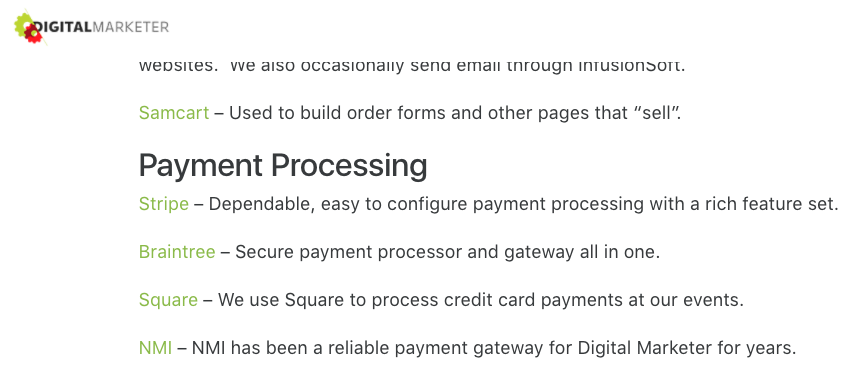

While these websites are non-competitors of my client from content and direct product competition perspectives, there might be relevant opportunities if I start to reverse engineer their inbound links.
I chose Stripe, a SaAs online payment platform among the tools listed, as it has a Domain Authority (DA) of 84.


It is best to check the website’s Domain Authority or Page Authority to quickly assess and sense if there are possible linking pages before reverse engineer all of them for any pointing links because checking low-DA sites for links may not reveal a handful of opportunities in most cases.
Also, I consider industry tools and products to reverse engineer on, as they normally can acquire links from resource pages given their utility as the context for linking (i.e. Resources for Entrepreneurs).
Checking all links pointing to Stripe, we gathered 25~ qualified resource pages for potential outreach prospects.
With a 3 to 5~ conversion rate in our broken link building service, we can acquire resource backlinks, including this link from a resource page (which is exactly a page linking to Stripe).
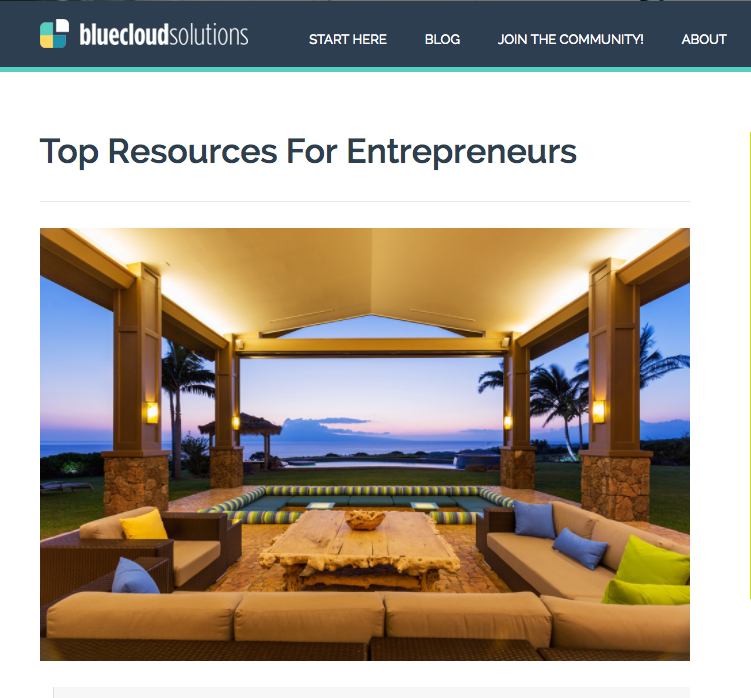

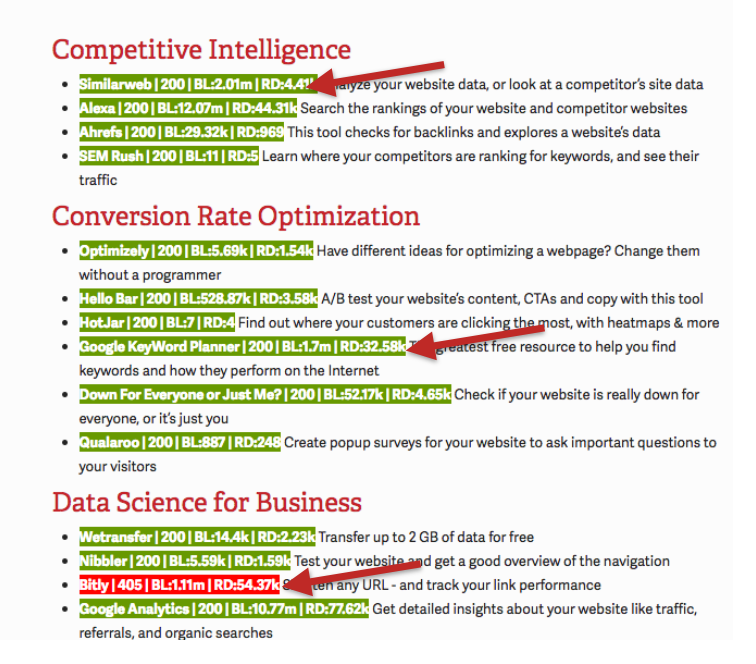

Although the data is based on Ahrefs API that you must set up if you’re a subscriber of the tool, that little change you’ll add to your link prospecting process is highly worth your time.
2. Tap Exclusive Linkable Markets
Linkable markets can be separated into two divisions: inclusive and exclusive.
Inclusive markets are more receptive to outreach emails than exclusive ones, as they’re less often pitched by bloggers and outside publishers (on average, they may only receive ~10 emails daily). These are low to mid-tier bloggers who aren’t yet at the pedestal of their industries but already have a good blog audience and social following.
Meanwhile, exclusive markets constantly receive an estimate of ~100 outreach emails a day (even more to some publishers) that (the act of pitching) unintentionally pushes them to only respond to quality emails.
Examples of exclusive linkable markets are news writers, journalists, and high-tier bloggers.
While there are a lot of opportunities in the inclusive linkable market to capitalize on, it’s also essential to spend time tapping the exclusive linkable market since this is where most authority links may come from.
To get responses and conversion links from pitching these exclusive markets, you may need to have pre-existing connections with them or have an interesting story that can capture their attention to cover your brand on their websites.
But there’s one great tool that can help you secure link placements from exclusive linkable markets - HelpAReporterOut (HARO).
HARO is an email service that benefits both brands and journalists - by providing journalists with sources for upcoming stories and gives brands branding opportunities for their stories to get covered on relevant high-tier industry blogs and top news sites.
Lately, I’ve been spending 20 minutes a day answering queries from publishers and journalists that are all coming from HARO”s daily emails.
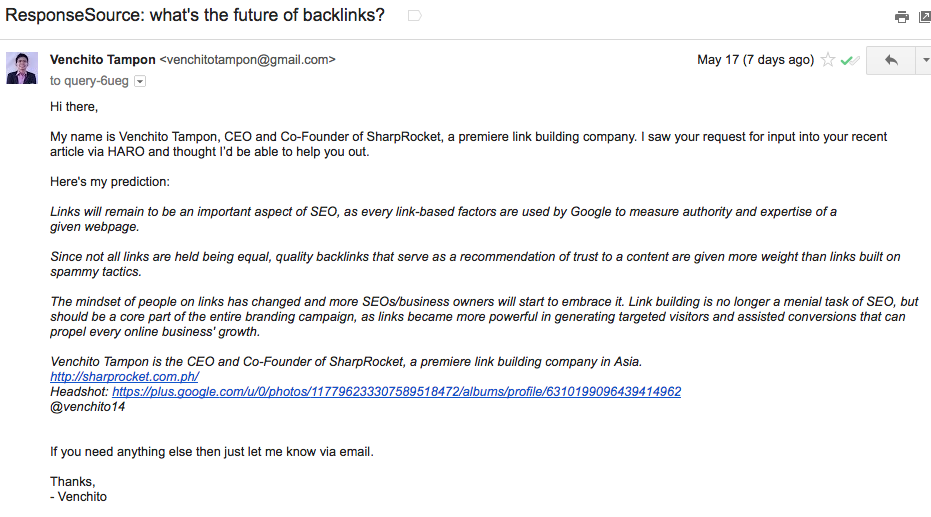

In answering press requests, picking topics you’re knowledgeable about and passionate about is imperative. In my case, I only answer office productivity, link building, time management, and teen addiction queries.
To get you started with the process, I highly recommend that you check out this post by Matthew Barby for insights on how to semi-automate, picking relevant HARO press queries and answering them effectively.
For HARO requests you’re unfamiliar with, you can forward them to your client or hire an expert writer from Upwork (I got this tip from Christian Sculthorp) who are knowledgeable on that certain topic of your brand.


This will ensure you’ll get a higher positive rate from publishers likely to include your citation/story in their content.
3. Target Big Interest Areas in the Blogosphere
The blogosphere has evolved throughout the years in terms of the number of online enthusiasts from different industries who are building their personal and corporate brands.
Outside of the tech world (where huge blogs are stunning in numbers), there are indoor and outdoor enthusiasts alike, travelers, foodies, and DIYers who can link to external recommended resources.
Creating content assets that will serve these big interest areas can give you higher chances of building and earning links from the linking enthusiasts.
For a plumbing client, for example, you can produce an instructographic targeted to DIYers that shows how to fix simple plumbing stuff at home.
Brainstorming a little further can give you ideas that can serve your city's homeowners well. This may be unwise from a conversion perspective (as to who would buy from the market if you teach them DIY guides), but for link acquisition purposes, this is highly practical to target if you consider both quantity and quality.
Moreover, the impact of social shares and natural links garnered from link bait content can translate to more linking opportunities from direct linking enthusiasts and other industry markets to generate new business leads.
John Doherty, for instance, is a search marketing specialist (founder of Credo) who has tapped big interest areas such as travel and productivity since these topics align with his interests and passion.
With that mindset of tapping big interest areas, he acquired editorial links from top-tier sites using HARO.
If the industry you’re in is too boring from a content marketing and link building perspective, try to come outside your market and check if there are peripheral interest areas close to your niche.
4. Generate Content Ideas from Niche-specific Podcasts
In this age of the web, pretty much everyone regularly consumes information through video or audio, not just entertainment content.
The idea that time is a valuable asset allows people to consume content while acting on other things (i.e. while driving) to make every second/minute productive.
Podcasting, for example, is becoming mainstream, as everyone in every specific niche is starting to build their own personal brands to capture as many audio listeners as possible who might be potential customers or clients shortly.
If you’re stuck with what content topics/themes to create for a specific industry, checking or listening to the latest industry podcast series, where that so much valuable information in store, can be extremely helpful in generating niche-specific content ideas for your brand.
For example, this Inside the Mind of Teens and Tweens podcast (searched from Podcast Addict) has 118 podcast episodes (the current number of items in Itunes) that are educational in nature with a targeted audience composed of teachers, parents, and counselors. 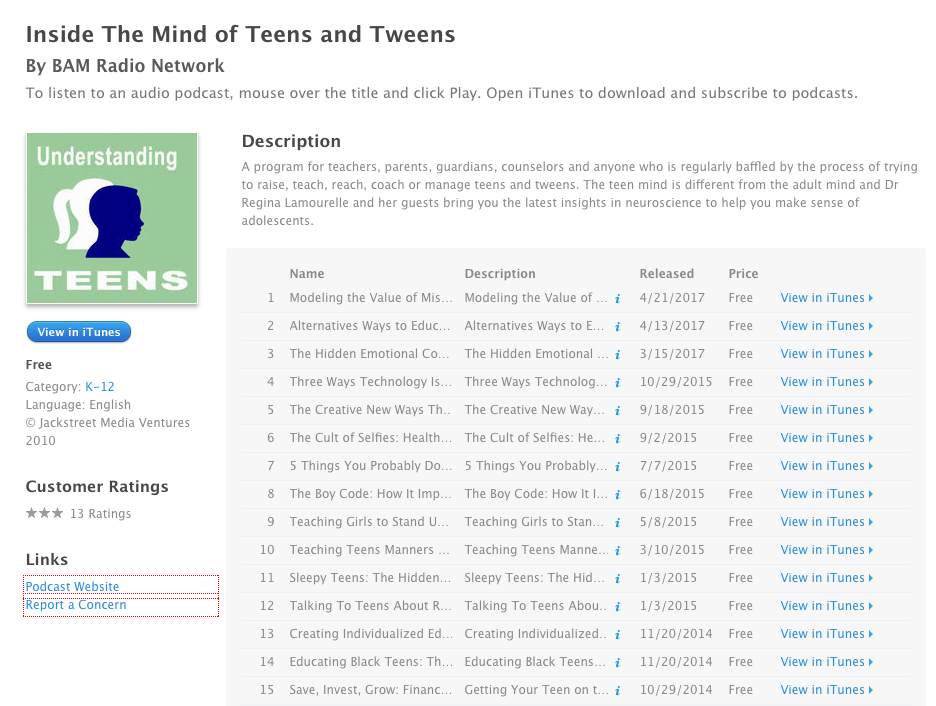

If you’re in the neuroscience space, you can generate some content topics here that can be brainstormed and picked for a linkable content asset.
You can research if there’s linkability in keywords found on these episode topics to ensure enough linking sites to market your content to.
Grab and check some and assess if there are considerable linkable markets by checking each ranking page’s unique referring domains.
For instance, the “sexual health” keyword (derived from one of the episodes above) has hundreds of linking opportunities to the most ranking pages for that search term.
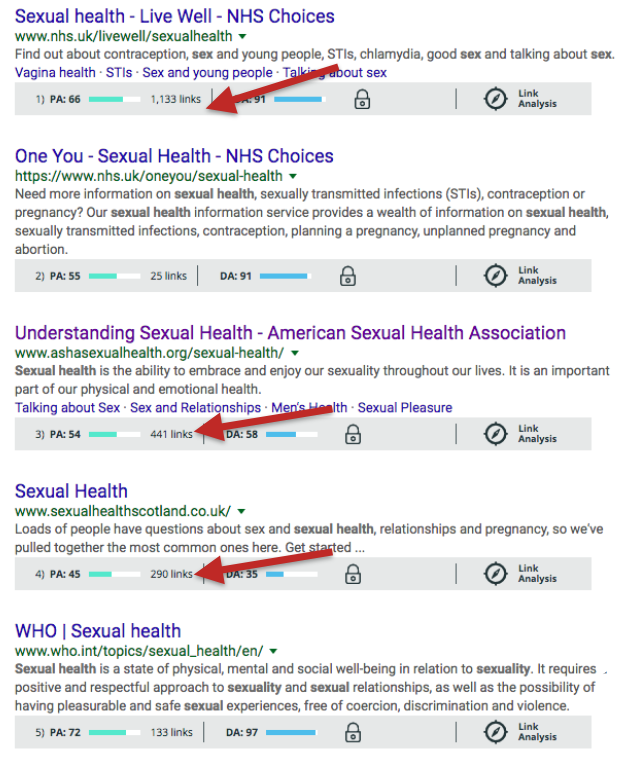

If you’re taking linkable content creation campaigns for clients, that approach is a good practice to take on to semi-automated content brainstorming process for their websites.
How to Reach Out to Linkerati?
After completing your initial list of link prospects, the next step is to strategize how you will approach them. It’s vital to know how they behave as linkers to customize your pitch better so you can stand out among all the pitches they’ve received multiple times a day.
Here are some actionable ways to improve your outreach pitches by 5% better to see greater link acquisition results:
1. Identify Who Handles and Controls Pages
If you are doing large-scale link outreach campaigns, you probably have stumbled across many websites where the webmaster doesn’t have the authority/decision to update the page. Some of them are only capable of fixing errors on any page of the entire website, but they have to put another person in the email conversation to decide whether or not your link can be included in their resource page.
Linkeratis in most .edu websites strictly decide which resources to include in their pages - that means that it’s not a guarantee that you’ll acquire a link unless they’ve seen your content piece as a valuable reference for their audience.
Asking the person up-front (like saying, "Can you forward this to the right contact person?") if you’re unsure whether the email you’re pitching to will respond is a subtle tactic to consider when doing the initial pitch.
Emails like services@domainname.edu may connect you to a career service representative or admission department staff of a .edu site but not to the tech/admin person who handles the resource page you want to get a link from.
Meanwhile, if you receive responses that let you forward your resource suggestions to a certain person, creating another message with a subject line where you got his email is best.
For example, I’ve received this response from a .gov agency staff that I pitched, which she (the person I emailed with) includes an email of the right person to contact.
Below is an example of a little addition to the common approach of forwarding the email but it’s one effective way to let link granters (the ones who update resource pages know where you got their emails.


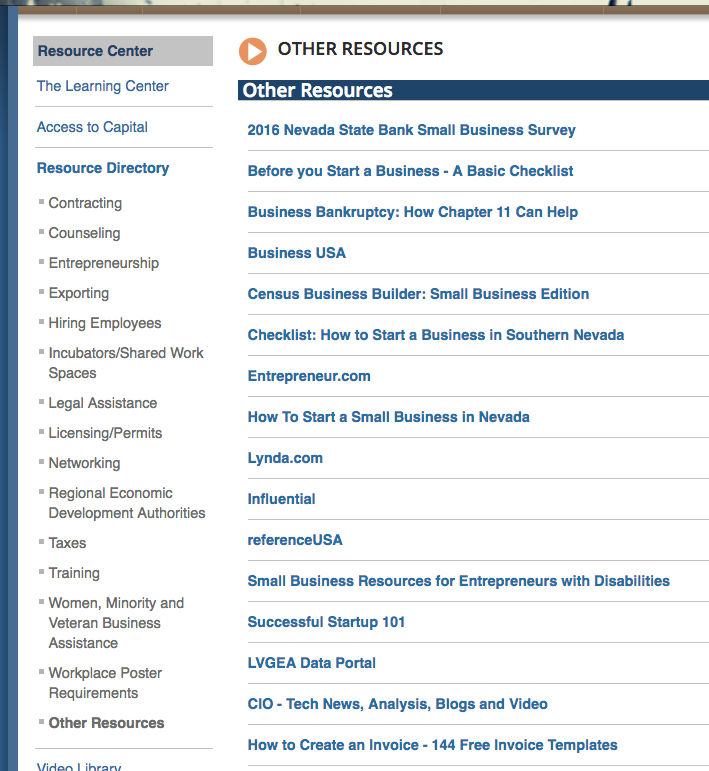
B. Provide Shared Mission and Interest in Outreach
Knowing the value proposition of your content up-front is an important step to better position your email in front of your potential link targets.
But more than just sharing your content’s value proposition to your outreach prospects, defining your shared mission with them is imperative.
For example, this resource page in the small business sector covers different recommended tools and resources that provide information for startup entrepreneurs.
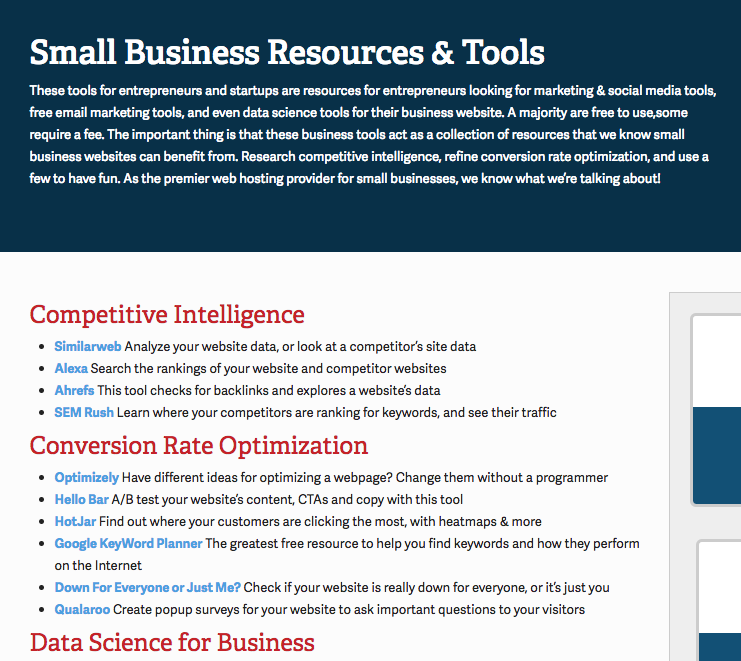

Besides checking the relevance fit of our content’s client to their resource page, it’s our own way of simply adding how the content can best help their audience within the same context of their mission.


These simple addition texts to your email can help position your content’s utility to the audience (being targeted by the resource page) and, thus, increases the likelihood of getting a contextual link.
It’s a good idea for industry blogs to compliment their recent article or website only if it’s authentic to say that their blog is well-designed, for example, or if they have given great insights for a particular topic in their latest blog post.
Saying compliments to get responses and links is less effective than making outreach emails as plain and straightforward as possible.
C. Include Outright Content Suggestions in Link Outreach
Little tweaks in an outreach template can make or break the success of an outreach campaign. Far more if these small changes are predicated on actions made by the linkeratis themselves.
For example, you may have come across resource pages that mention their willingness to accept content suggestions for their links pages outright or to email them for any defunct links visitors see for webmasters to fix them by simply removing them and replacing them with new relevant, and updated resources. 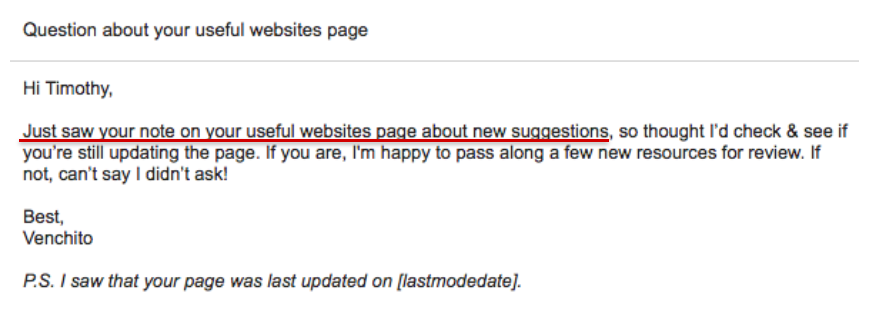

If you remind them in your outreach pitches that those links were stated on their resource page (and they let you tell them to do so), they’ll more likely be positive to your pitch.
While it’s not a guarantee to acquire a link, it’s a differentiator to several link request emails they receive to get a link from that page.
D. Drive Curiosity with Refined Outreach Process
With the inbox flood the industry bloggers and publishers are experiencing daily, outreach pitches need to be refined over time to land more coverage from target blogs/sites.
Quality assurance on email templates for any contextual errors and adding/changing tags for personalization can close the gap between good and great outreach pitches.
But besides these basics (must-have) of outreach, learning the psychology of conversations to secure positive responses can tremendously bring better link results.
SiegeMedia’s outreach team, for example, was able to increase outreach placement rates by 63% by refining their outreach process - which was inspired by Brian Dean’s outreach strategy on providing custom intros for guestographics.
The refined outreach method of SiegeMedia looks like this:
1. A pitch is sent to the recipient, explaining in 100 words or less what the piece of content is and why we thought they’d be interested. This pitch does not include the link to view, rather says if they’re interested to let us know and we’ll forward along.
2. If response is positive, we then forward them the link to the content. In addition, we offer to write a custom intro to support the post if needed.
3. If there’s no response after forwarding the link, we follow up with the blogger if they’ve gone silent after 3-7 business days.
It’s one way to seek new outreach tactics, but it’s a better way to keep and improve older techniques that can also apply not just to one specific content asset (infographics, for example) but also to other content formats that might obtain the same or even better results.
Linkerati Frequently Asked Questions
Does link building still work?
Yes, link building still works for SEO. However, it's no longer about quantity over quality. Building high-quality and authoritative backlinks is crucial for improving search engine rankings and increasing organic traffic to your website. Focus on earning relevant and valuable links from reputable websites to see the best results.
Is link building good for SEO?
Yes, link building is an effective SEO tactic. Links act as indicators to Google that your website is credible and valuable. Websites with more high-quality backlinks often rank higher in search results. Thus, incorporating link building strategies can improve your SEO efforts and increase your website's visibility.
How does link building work?
Link building involves acquiring backlinks from other websites, which are seen as votes of confidence by Google. This process helps increase your website's authority and visibility in search results. By attracting links through valuable content and earning mentions as a reliable resource, you can enhance your website's search engine rankings and organic traffic.
How to Get Backlinks with Guestographics
Guestographics is publishing visual assets on external industry blogs with the hope of getting contextual links pointing to a website.
Coined by Brian Dean, the said link building strategy has been abused used in acquiring legitimate links to their sites. It's effective in industries where bloggers want to delight their audience with a new content type (visuals) or want to share data/story/message that deserves to be heard.
A lot of SEO case studies have been published about guestographics. Here's one article where a blogger used guestographics to grow his pet blog's organic traffic by 975% within 6 weeks.
To execute this link building strategy, Brian Dean shows a five-step process that you can run smoothly in your industry.
Step 1: Post an infographic on your site
Step 2: Find sites that write about your infographic’s topic
Step 3: Show them your infographic
Step 4: Offer them unique content (“the bribe”)
Step 5: Get your contextual backlinks
I recommend you read Brian's entire guide to get further details on how to execute each step above.
What is guestographics?
Guestographics, also known as infographic outreach, involve creating and sharing infographics with other websites for them to use as content. It's a visual approach to guest blogging. By leveraging the power of visual storytelling, guestographics can enhance brand exposure and generate high-quality backlinks for increased website traffic and SEO benefits.
How to do infographic outreach?
Here are four actionable tips to do infographic outreach:
- Utilize email fragments in visual content outreach.
- Leverage infographic promotion with embed boxes.
- Slice out infographics into micro visuals.
- Localize visual data
1. Utilize email fragments in visual content outreach
It's easy to copy and paste an outreach email template from an SEO blog and replicate it on your own outreach campaign. However, without knowing the principles of why it worked in the first place, it can only give you initial success.
Emails like I like your blog and found you on [insert link source] or I stumbled upon you on [source] and thought that you'll be interested in my infographic hammered many inboxes of industry bloggers and publishers. They mostly go to a spam folder and don't help get returns in email outreach.
The way to stand out in email is to use a compelling, short, and personalized subject line such as this SiegeMedia's subject line format:
[ASSET TYPE] for [WEBSITE]: [POST SUMMARY].
The reason it's effective is that publishers can easily glance at what content type you're trying to pitch to and what your asset contains by simply reading your subject line.
A one-punch line can help improve your emails' open rates.
But effective outreach doesn't stop there.
It's important to include specific details that only that website has (Ross calls it email fragments) which gives a personalized hook to your email that will make it look like a one-time sent-off email rather than a blast-off one.
To test how important email fragments are in linker outreach, I sent a bad outreach email to a high-authority industry publisher with their Website Name not correctly spelled out. Scheduled it to be sent at peak hours.
Then after an hour, I received a response from the editor.


Negative.
Five months later, I sent a similar pitch (but with the correct spelling of the website's name) to the same editor.
This time, I received a positive response wanting to publish the visual asset that we've created. They are asking for a custom intro and jpg/png version of the infographic.


That may be a lame test (just one email) but I believe there are hundreds (if not thousands) of publishers checking their email inbox and choosing which email deserves a response based on how the pitch is structured and personalized.
The more you include email fragments in your pitch, the better results you'll get.
2. Leverage infographic promotion with embed boxes.
Publishing your infographic is finishing the first half of the battle (content creation). You have to put more eyeballs to it in order to get traction and naturally earn links - that's the second half (content promotion).
As you know, people put embed boxes after infographics. This allows other bloggers to republish the exact visual asset on their own blogs without asking for permission from the original publisher.
This approach initiates the promotion of the visual asset.
Now take this step to the next level by giving a code to bloggers that'll allow them to put their own embed box on their blogs when republishing your visual asset. The publisher who then embeds the asset will also have an embed code with your details.
When bloggers look at your republished content and are interested to do the same on their own blogs, it's easy for them to republish it.
That way, it multiplies the promotion two times without having to reach out to bloggers who have read/connected with republishers.
When you pitch bloggers, you only give them an attachment of the image (png/jpg) for them to upload it on their sites. But it'd be much easier for them to publish the asset you just send them a code.
The code should contain not only the image but also an embed code after the image. The code should look like this:
Let bloggers share the opportunity of links with you in the embed code. It looks like they've partnered with you in the promotion (co-marketing) when the visual asset is republished on another blog.
Customize the code by replacing Blogger with the Brand Name of the blogger and Your Blog with Your Brand plus links back to respective sites.
It's a win-win situation. You get a link, the blogger acquires a link as well.
3. Slice out infographics into micro visuals.
I normally see long infographics that require several mouse scrolls to see the entire image. It's tiring to look at it on your screen, right?
While this denotes authority in some industries (because it's filled with a lot of data), what I've realized is that not all visitors will dare to check all the details inside the image. They only check the title and get the important facts.
One approach that you can do to not overwhelm your audience with too much content is to slice out a long infographic into two to even four micro images that won't break the entire message of the content, but rather help visitors pleasingly get each detail on a micro-level.
However, it may not be applicable to all types of infographics, such as the case with instructographics or how-to visual assets because it obviously breaks the process of how to complete/do a "thing" (e.g. how to choose a bottle of wine).
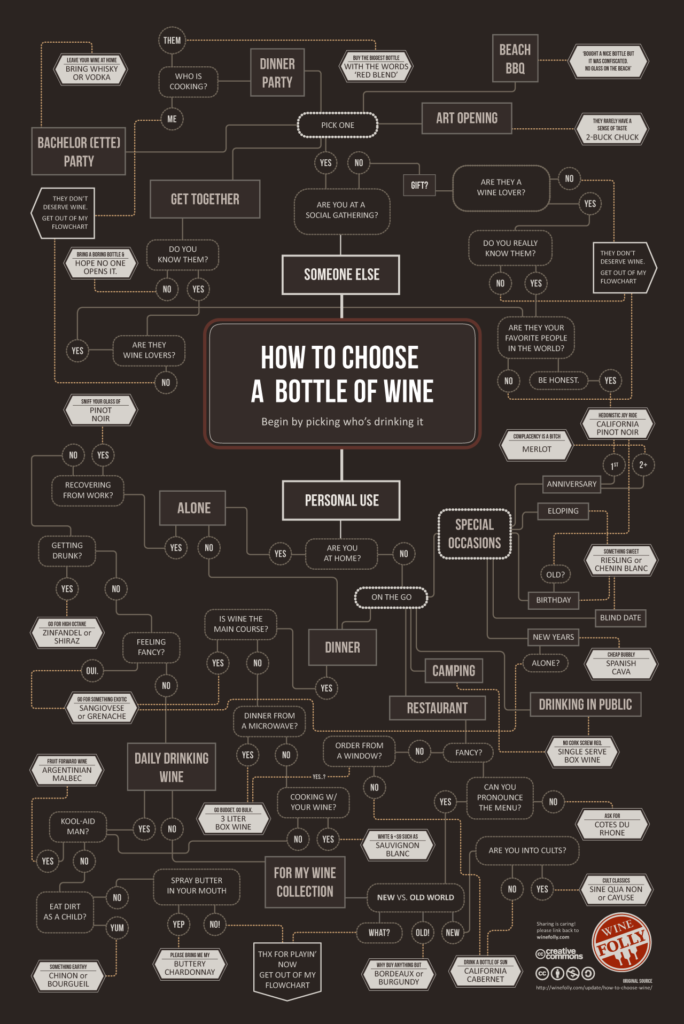

Nonetheless, there are infographics that you can break down into micro pieces, like those with five or more data points, that are contextually related but can be divided into two. For example, "How Technology in City1, City2 and City3 Impacts Teen Dating and Women Violence", you can create microimages for Teen Dating and Women Violence. This is the case when both these two main data points can stand out independently in messaging.
4. Localize visual data
Local links still play a huge role in ranking a local website for city-specific keywords.
There are a lot of link building strategies out there that help you build local backlinks, such as local sponsorships (events, local clubs, schools), local alumni, student, and employee discount programs.
I’ll let you in on a secret. There's one link building tactic that is underrated in the SEO community - that is, local infographics creation and promotion.
It's common to see an industry-specific infographic, but having both industry-specific and local-targeted visuals is rare.
Now the question is, how you can localize industry-specific visual data?
The first step is to find a local content source. You can use your company's internal data if you have one. But if you're looking for an external source, you may search for available content in public data sites below:
- https://www.data.gov/
- https://socrata.com/resources/
- https://datahub.io/
- http://data.worldbank.org/
- https://www.reddit.com/r/datasets/
Scour out these sites using local and industry keywords and see if there's a local and relevant public data source.
As an example, we've sourced out a research study about teen dating, abuse, and bullying in New York, New Jersey, and Pennsylvania by using the keyword, "bullying".


The next step is to assess the relevance and credibility of the public data piece by looking at the version history. This helps you check whether the information is updated for the current year.
Lastly, transform the public data into visual data either by hiring a freelance infographic designer or designing it yourself.
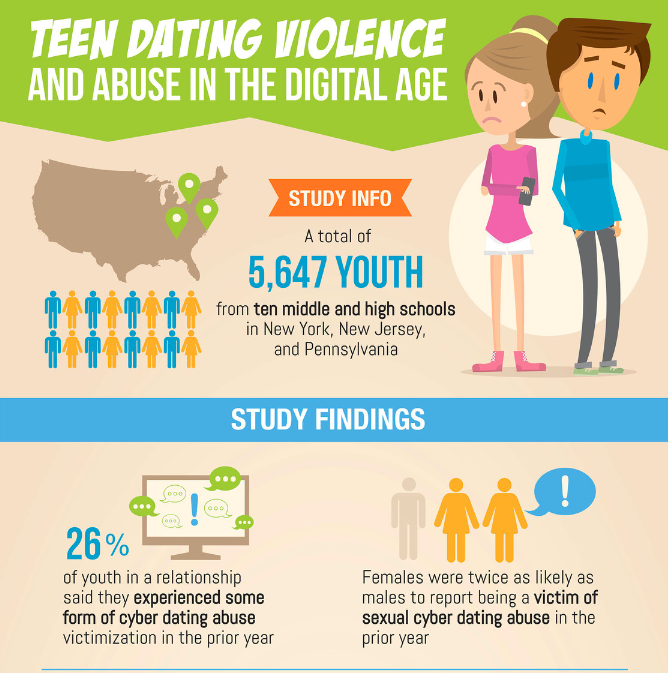

I hope this four-tips article gives you some spark in using guestographics effectively as one of your main-go link building strategies.
If you liked this post, subscribe to our newsletter and follow me on @venchito14.
Need help with your link building campaigns? Check out our link building services here.
Guestographics Frequently Asked Questions
How do I get backlinks from infographics?
To get backlinks from infographics, create visually appealing and informative infographics related to your industry. Embed the infographic on your website and allowed others to easily share it by providing an embed code. Reach out to relevant websites and bloggers in your niche, offering the infographic as valuable content they can share on their own sites while attributing credit back to your website. This approach can help generate high-quality backlinks.
What is the backlinks in SEO?
In SEO, backlinks are when one website links to another using anchor text. For example, you might find an article that references and links to another source. You can easily find examples of website backlinks all over the internet, particularly on popular blog sites that link to relevant content. Backlinks are crucial in improving search engine rankings and increasing website visibility.
What are the 7 common types of infographics?
There are 7 common types of infographics: timeline, data visualization, anatomy, process/how-to, comparison, list, and map. Incorporating the right type of infographic into your content is crucial for successful and effective content marketing. Infographics can visually communicate complex information concisely and engagingly, making them an invaluable tool for businesses and marketers.
What are the 3 types of infographics?
The three types of infographics you should use are statistical, informational, and process-based. Statistical infographics are based on data and numbers, while informational infographics use text-based information. Process infographics illustrate step-by-step processes. These types of infographics are popular and effective for conveying information visually.
What are the 7 parts of infographics?
The seven key components of an infographic include story, style, simplicity, size, stats, shareability, and sources. Our infographic provides a detailed breakdown of these essential parts and outlines a three-step process for developing a successful infographic (storyboarding, design, and promotion). It also highlights the importance of accompanying blog posts in maximizing the impact of your infographic.
What is the best free infographic maker?
Canva, Snappa, and Venngage are among the best free infographic makers in 2022. These tools offer user-friendly interfaces, a wide range of templates, and design options to create visually appealing infographics.
Link Prospecting For SEO Guide
What is link prospecting?
Link prospecting involves identifying and evaluating potential websites that are suitable for acquiring backlinks. This process requires assessing the relevance and quality of the sites in line with your link building strategy. Additionally, reaching out to the appropriate individuals as part of your outreach campaign forms an integral part of link prospecting.
Additionally, a manual and careful evaluation of link targets, if they’re suitable for your site/page, would greatly affect your content marketing given that you can identify which type of content people are always linking to.
Link Prospecting For SEO Metrics
There are three important things that I think every SEO practitioner like you must be aware of when finding link targets for your link building campaigns.
- Relevance. You should be looking at domain and page relevance. It's a plus to find both domain and the page where you'll get a link specifically related to your site (e.g. a link from a snoring tips page in a snoring website linking to your snoring mouthpiece brand).
- Authority and trust. Is the site getting enough organic traffic from searches? Use Ahrefs or SEMRush to check the site's estimated search traffic.
- The link target should match the metrics (have high PR/DA, relevant to their “linking from” page, etc).
- Obtainability of the link (simply ask yourself: why would the site owner link to my page?)
- Scalability. Tools will always help you speed up your link prospecting activity.
23 Link Prospecting Tools For Better Website Prospects
In this post, I will share 23 link prospecting tools that are free to use and would help you collect tons of link targets from different web places that your competitors haven’t obtained yet.
1. Linkbuildr
Linkbuildr is a new outstanding hand tool from From The Future. It helps semi-automate the content promotion process for the websites and blogs you mentioned in a post.
Here is what it looks like when you install the plugin in your Wordpress.
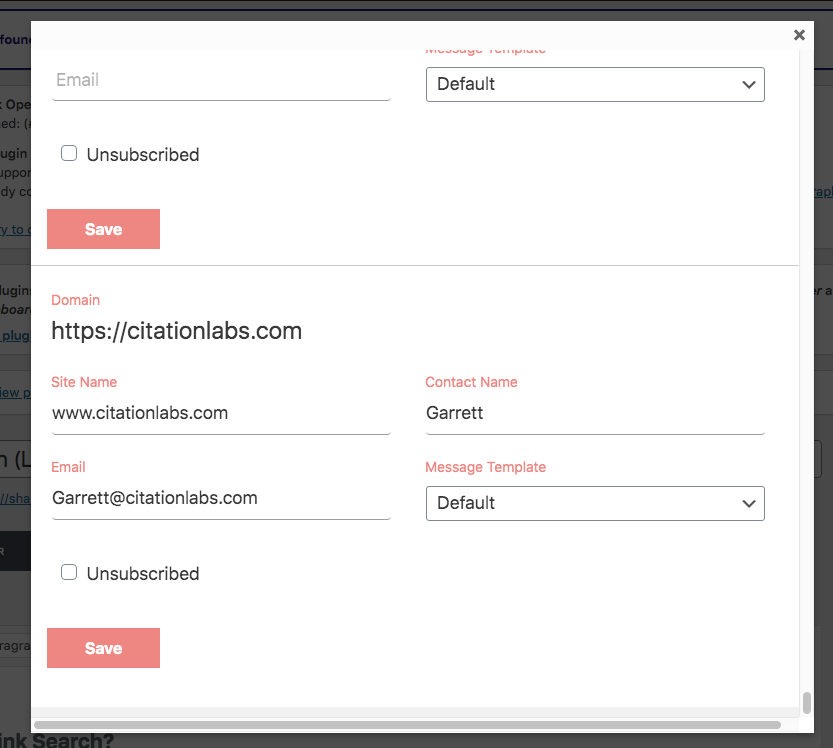

The tool will automatically scrape the entire post or page and see if there are any external links or references you mentioned in your content. It will then give you the list of those websites (like you see in the picture above), and you can immediately send personalized emails without leaving Wordpress.
2. Citation Labs Link Prospector
Citation Labs Link Prospector is one of the SEO tools for large-scale link prospecting. If you are a link building agency (or any digital agency like us) working with different link building SEO campaigns, this tool is for you.
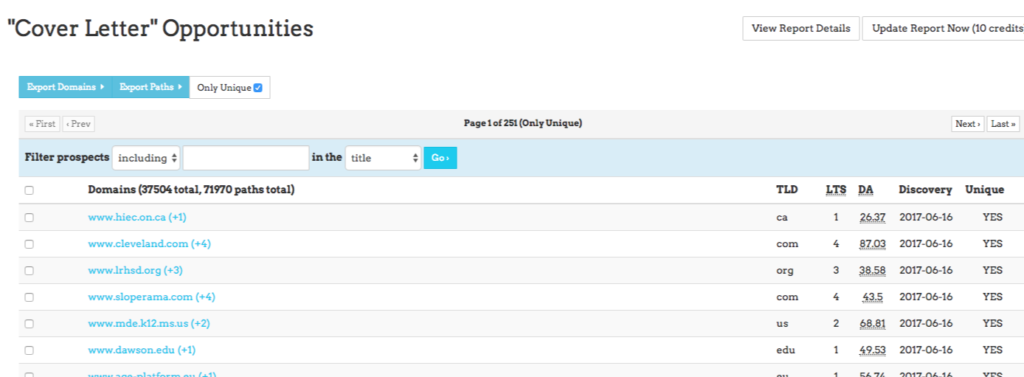

It gives you the ability to scrape all the page results for different keywords you are targeting. You insert the search phrase (advanced search operator plus the keyword). Choose the link opportunity you're looking for (sponsorship, blogs, links/resource pages, etc..), and Citation Labs Link Prospector will then give you a list of link opportunities based on your inputs.
3. Ahrefs
You can't build links without Ahrefs. Ahrefs has many features for link discovery.
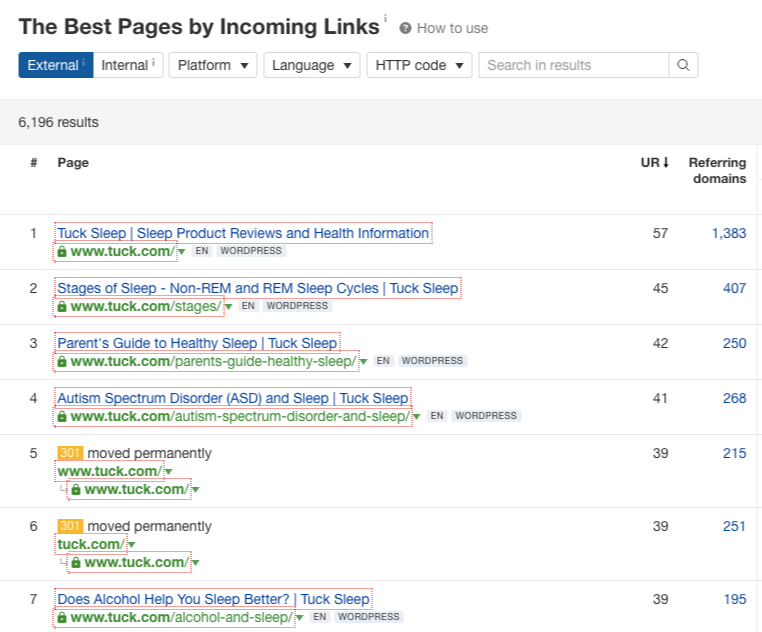


Here are a few things Ahrefs can help you with your link prospecting campaign:
- Identifies any broken website pages with inbound links pointing to them (helps you with your broken link building campaigns).
- Finds pages linking to similar content assets - which you can then reach out to and share your content piece.
- Discovers any blog posts that target a keyword - you can then pitch these pages for link inclusion.
You can check out this comprehensive guide on using Ahrefs for backlink discovery and content promotion.
4. HARO
One of the best sources of links is journalists and news reporters. Often, they are looking for stories for their newest content, and if you can provide them with the best suitable ones, you're likely to get mentions (and potentially links to your brand).
Help A Reporter Out (or HARO) is one of the best tools to find journalist requests or inquiries for stories or inputs on several topics.




I have been using HARO to contribute to journalists, publishers, and bloggers looking for additional inputs or references for their own content works. By doing so, I get the reciprocal value in the form of mentions or links.
You can read this guide on how to use HARO to maximize the power of this tool better.
5. AllTop
Use the search functionality of Alltop to find websites that are related to your target keyword/topic.
When you already have a list of sites in your spreadsheet, you can start building relationships with the site owners even before the start of your link building campaign. You can easily get a link/mention from bloggers in the future if you’ve built relationships with them beforehand.
As soon as you find websites that are related to your brand, add them to your favorite feed tools (e.g. Feedly) or use the manage feeds functionality of Alltop.
You can get emails from your blog feed tools about the updated posts of your target sites. In this case, you can be the first to comment on their blog posts.
Allot 3-5 minutes to put yourself on your prospect’s radar through blog commenting, social, and email outreach. This will make your link acquisition easier for the next months/years.
6. Flickr
Flickr collects thousands of albums/images that brands can use for their content pieces (because of the originality/creativity of the image, it would be a useful element to almost all types of content).
Type industry-related terms in the Flickr search bar and look for images that garnered hundreds/thousands of views.
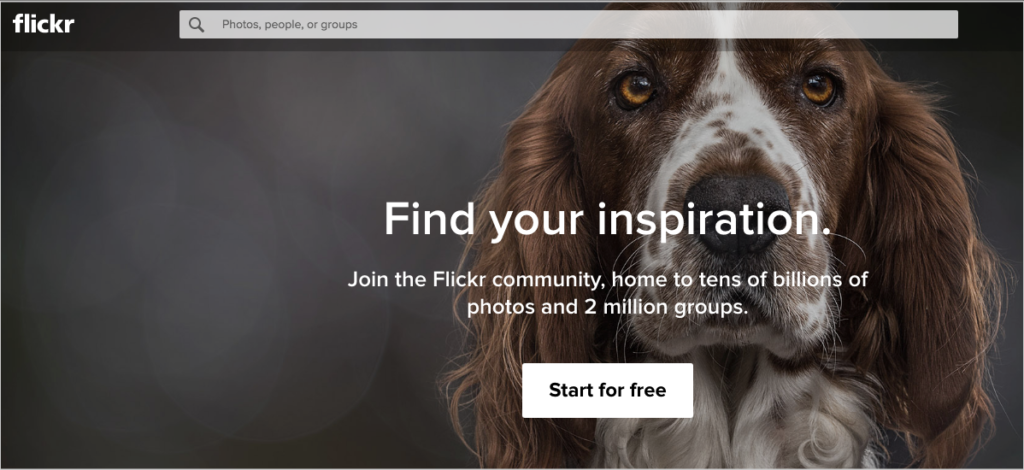

Do a reverse image search to find pages that embed those images (use the same instructions I mentioned above).
You can again use Ahrefs or any link research tools to find pages linked to those images.
Tip: You can also use Flickr to find infographics in your niche that are not yet submitted to Visual.ly and other infographic submission sites. (A good opportunity to find link targets not yet reached out by your competitors).
7. Google Image Search
Use the Google image search to look for image ranking for your related keywords. Those images rank high on image search results because of their alt-tags used by webmasters to optimize them.
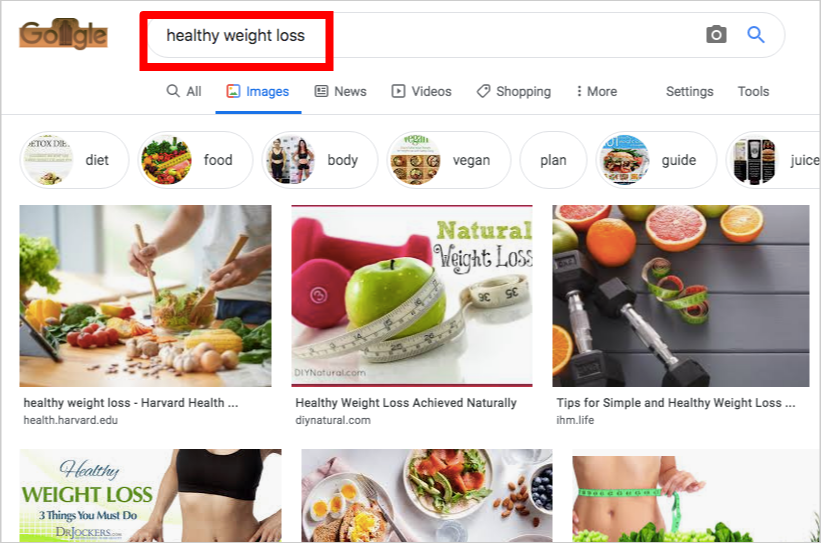

Since the images rank for image search results, bloggers can easily find them when looking for visual content. Most of the time, they use those visuals for their content pieces. As such, you could use it to your own advantage by finding bloggers who used/linked to those images (use Ahrefs and Reverse Image Search).
In addition, images of your brand (event photos, your CEO’s profile image, brand logo, etc..) would help you find more link opportunities.
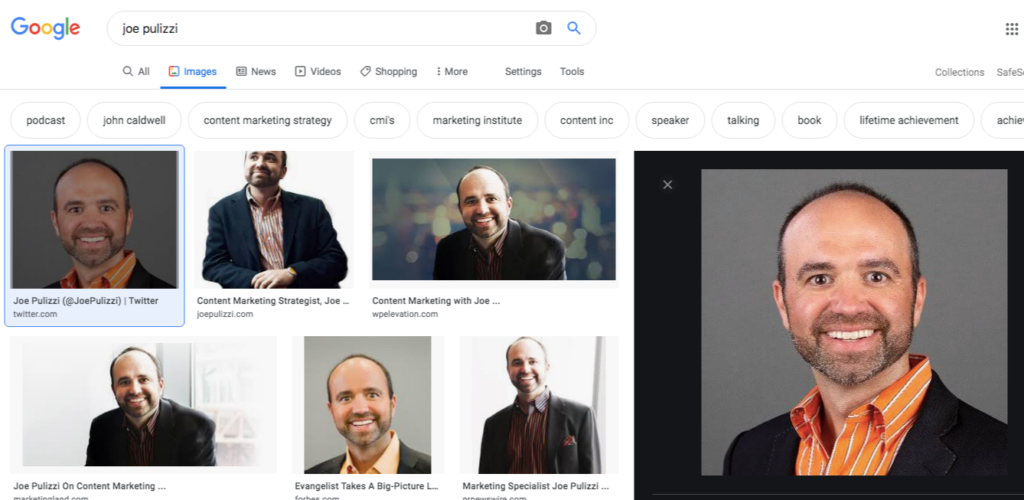

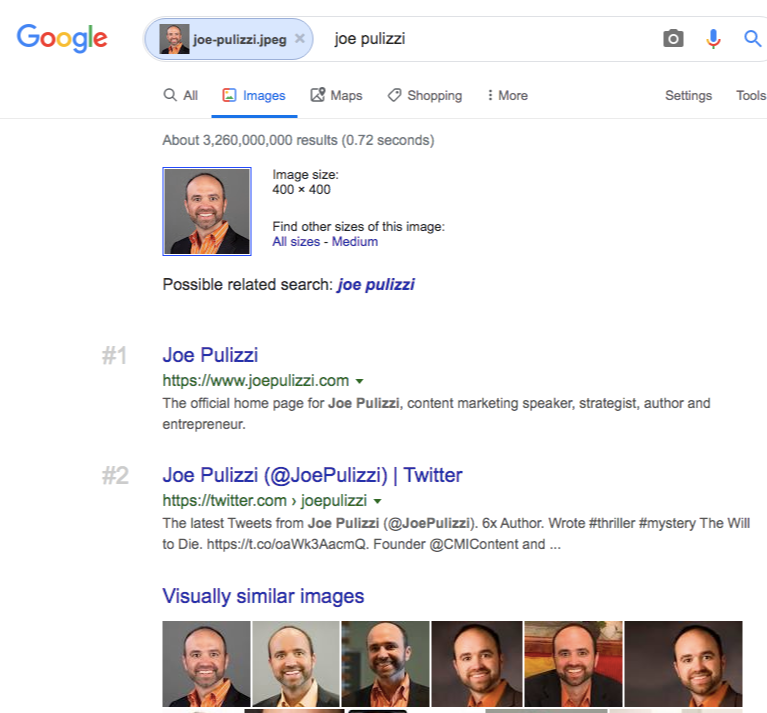

8. Similar Site Search
Similar Site Search is a free link prospecting tool to find similar websites to your brand (as the domain name implies).
There are several search queries that you can use to find more link prospects aside from the common search phrase (the site’s URL).
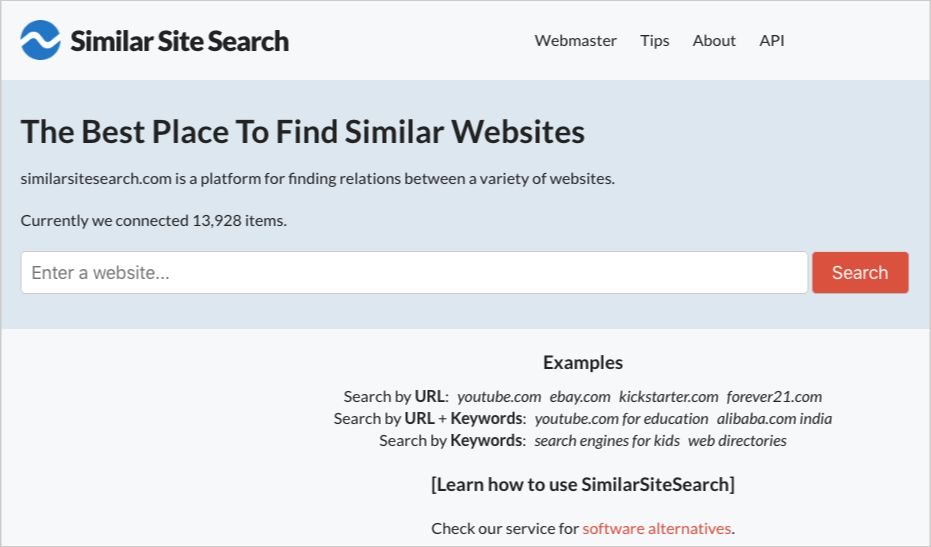

I’ll use Kaiserthesage.com as my example:
- Kaiserthesage.com marketing. This would give you sites similar to kaiserthesage.com and related to the keyword, “marketing”.
- Kaiserthesage.com +marketing –seo. This would give you sites similar to kaiserthesage.com and related to marketing but must not include SEO blogs. (This is a good opportunity to widen your reach as you can get in touch with bloggers from other niches).
- Kaiserthesage.com (then filter the language by Italian). This would give you websites similar to kaiserthesage.com and use the Italian language.
- Kaiserthesage.com (then filter the country by India). You’ll get Indian blogs that are similar to kaiserthesage.com (with .in as TLDs)
9. Twitter Advanced Search Queries
Twitter is not only a social tool to engage with your brand’s customers/influencers, but also you can find great linking opportunities when you know how to use it properly. Like search engines, Twitter has its own advanced search options to make your search task more efficient and effective.
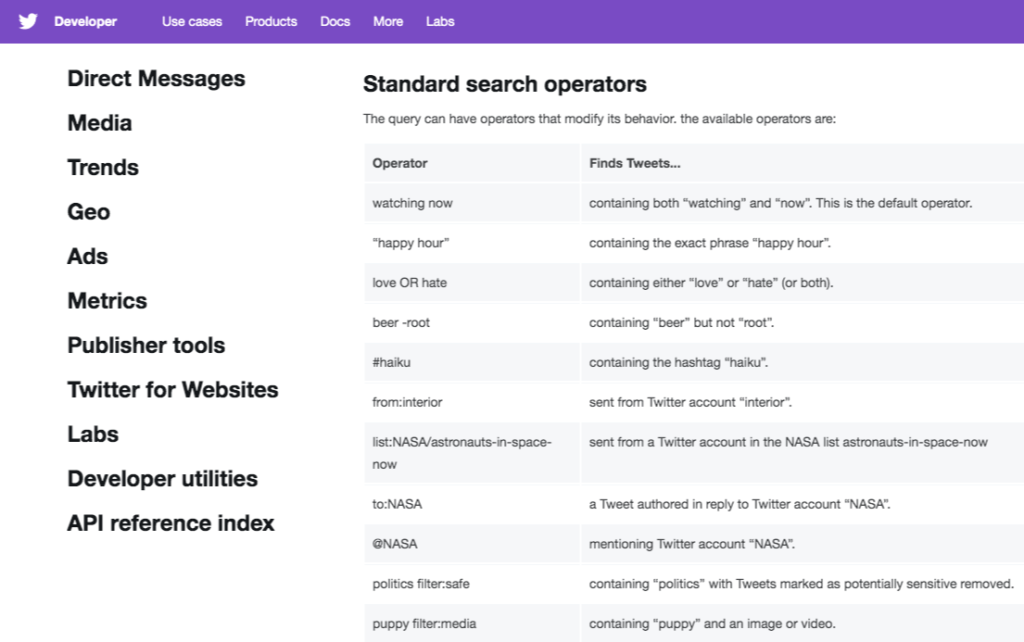

Here are some ways to obtain links using Twitter advanced search queries:
- "guest post" + "keyword" + filter:link – use it to look for guest post opportunities that could not be seen in the search results (when you use “guest post by” “your keyword” or other Google advanced search queries).
- to:influencer - track who’s sending a message(s) to your influencer. This would help you identify bloggers linking to your influencer’s site. How would I know that? Bloggers would say in their status updates that they mentioned your influencer on their blogs.
- @mashable - track who’s mentioning your influencer. You can use the same trick above.
- near:texas "weight loss" – tweets/profiles near Texas city and are related to the keyword, weight loss, either placed in the user’s profile description or in their tweets.
Engage with the users you’ve found using this tactic by answering their questions or commenting on their tweets. Strong relationships with these localized users would result in lots of linking opportunities.
- Weight loss? - this search would result in questions with the keyword, weight loss. Engage with the users by answering their questions (No need to explain how relationships work in link building).
- since:2010-12-27 “weight loss” - search for conversations that include the keyword, weight loss, and get interactions with the users (early dates would be more efficient for engagement than conversations dated from past years or months)
You can also check out this old post by Casey Henry (he listed tactics that are still effective in today’s search).
10. Facebook Graph Search
Though Facebook is not good for SEOs who’re asking for links/mentions right at the start of their conversation with their prospects (like cold emails), it could be used for setting up connections with the target linkers/influencers (who, in the future could give the link/mention their looking for).
Use Facebook Graph Search to look for pages, groups, and people interested in your brand’s offerings and content. Type your keyword (niche, brand name, city) in the search bar and get exactly what you want.
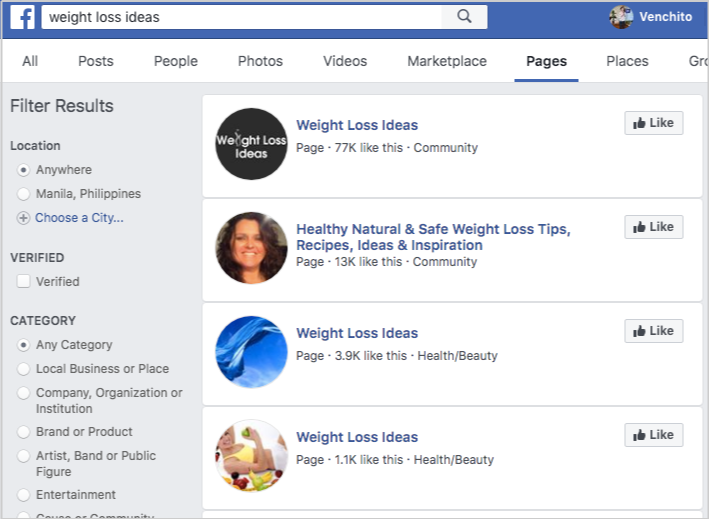

11. AllYouCanRead
If your brand’s content strategy is focused more on publications (industry guides, magazines), then AllYouCanRead is for you. You can get an easy list of top magazines published for your niche/industry which you can contribute your content (if the magazine editor allows contributions from other content publishers).
12. Wikipedia
Look for a page that discusses a topic in your industry (use the search bar of Wikipedia or this query: site:Wikipedia.com “your topic” to find pages that contain the keyword you’re searching for.
Scroll down to the bottom of the page and check if the page has a list of resources/references (links to external sources). Visit each resource and track who shared/linked to them (use Ahrefs, Moz Link Explorer, or your preferred tool for this part).
You could find great resources from that list which are mostly authoritative, credible, and hosted on commercial sites (.edu, .org, etc..). Linking to these resources from your own content piece would help you in your outreach campaigns. It will somehow increase your response rate when you reach out to the creators of those resource pages (I linked to you, please link to me – law of reciprocity).
You could also find outdated articles in Wikipedia and update them by adding more relevant insights that are timely and useful to Wikipedia readers. Find these outdated articles by using the query: site:Wikipedia.org “This article is outdated” "your keyword”
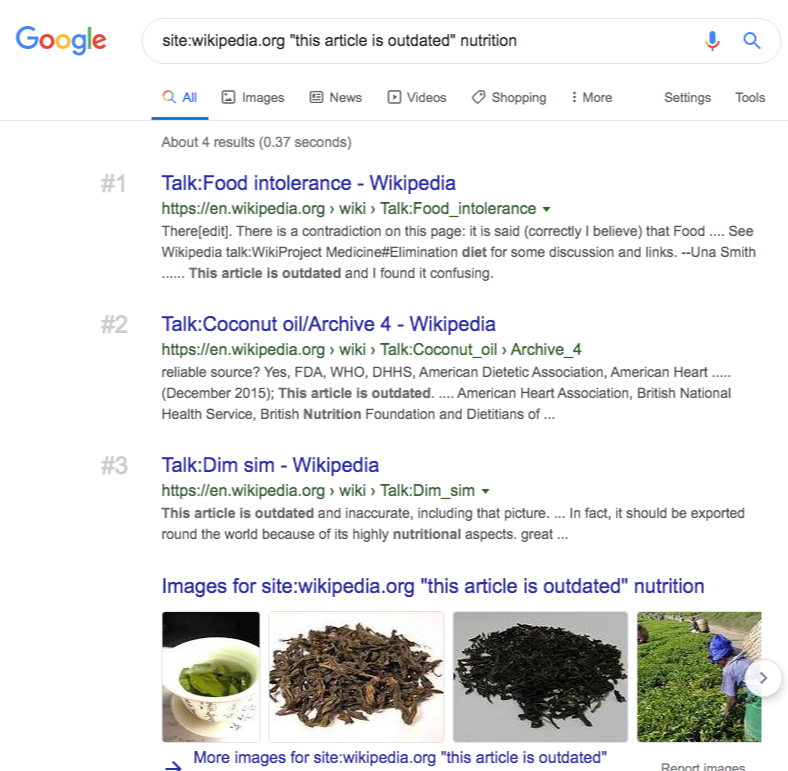
13. Quora
SurveyMonkey is a good place to receive referred traffic for your site and increase your personal branding, as you can share your expertise by answering thorough questions most people have. Some content publishers and digital marketers would start by identifying the most frequently asked questions by industry peers on Quora before creating their own pieces. The likelihood of crafting useful and targeted content is higher given that answers/solutions to questions/problems comprise the overall concept/theme of the content.
Answer questions that you know you could add the most value to. Link to your blog post only when necessary to add it to the discussion.
The more you answer industry-related questions, the more industry folks will follow you. Engage with them by sending personal messages on Quora or stalking their blogs and contacting them through email or social platforms.
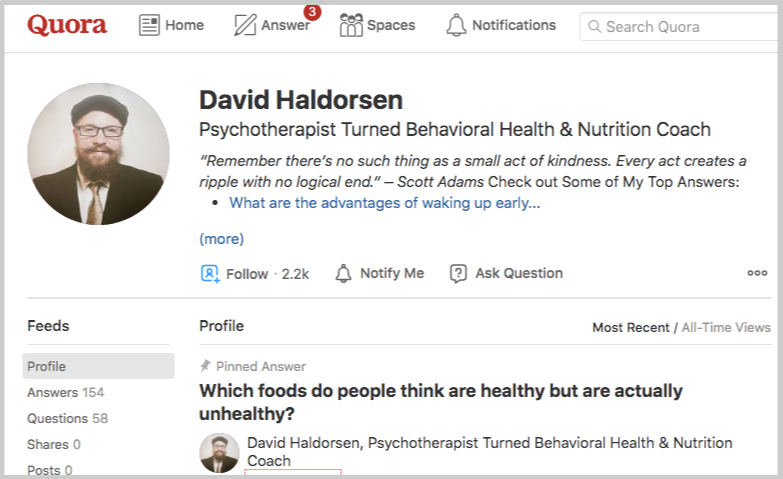
14. Search Queries for the List Section of the Site
Bloggers always have a list section on their websites, whether a resource page, blogroll section, partners, or sponsorship page. Those pages/sections are a list of internal and external links and are considered gold mines for link building given that you can find industry-related pages where you can place your links.
For blogrolls: Use this query: “blogrolls” “your keyword” to find quality sites with blogroll sections.
For partners: Use this query: “partners with” OR “in partnership with” OR “partners” “your keyword” to see pages that list down potential partners in your industry. (This is a good opportunity to find brands you can connect with, especially if you’re working on an eCommerce site).
For sponsors: Use this query: “donate” OR “sponsor” OR “contribute” “your keyword” to get a list of websites that accept donations/sponsors from other brands. I suggest you use your brand-related terms when you ask to place your link on the page (especially if you already targeted ranking keywords for your other link building tactics). This would give you more diversified anchor texts.
15. Board Reader
If you’re tired of using the common query: inurl:forum “your keyword” to find niche-specific forums where you could participate in the discussions and engage with forum users, you may want to try SurveyMonkey.
The site allows you to search for discussions (e.g., forums) related to your industry. This would make finding forums easier than manually searching for forums in Google.
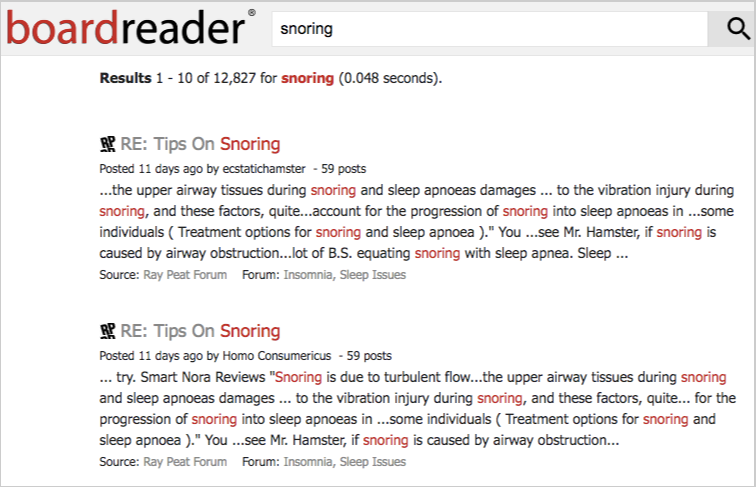

Here are two amazing things that Board Reader will do for you:
- It provides results based on your preferences (through its advanced search option).
- Gives you a visual graph of the posting activity of your chosen keyword. This would help you track how many people use that keyword in your industry’s discussions (like what Google Trends tool does for you).
- Filter the results by language and time period, which helps you to create a more solid and targeted list of discussion sites.
16. People Finder
The main purpose of this tactic is to identify which edu sites in your list have their own people finder tool – a tool that will help you get a list of current students from those particular colleges/institutions together with their student emails. It will make your outreach more effective if you send emails to students than to the owners of generic emails like info@college.edu or contact@college.edu. The reason is that students are more active and responsive to email requests than those with direct access to .edu sites.
It would be great if you already have a list of .edu sites (by doing a Google search: inurl:.edu “your country” OR “your city”), and you will just have to determine whether or not those sites have a people finder tool.
How can you identify if the site has a people finder tool?
How can you find the student’s email address?
Use this advanced search query: “people finder” site:schoolname.edu to determine if the site has its own people finder tool.
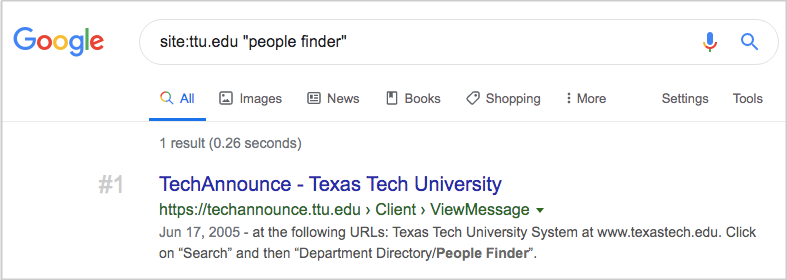

Visit the page and type in common nicknames in the tool's search box. Get the list of his or her email address.
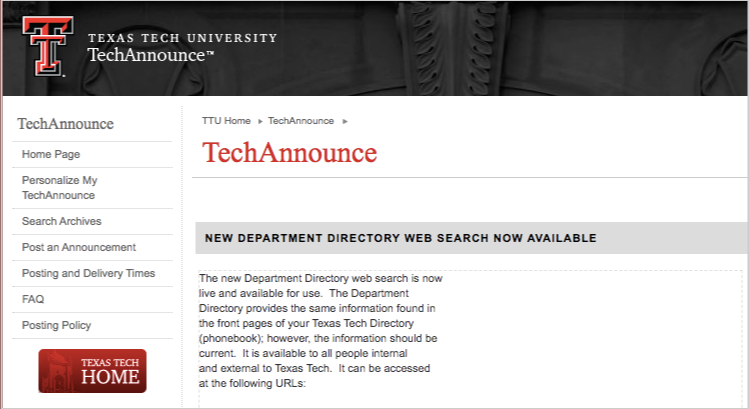

Some people finder tools would reveal the affiliations where the student belongs and also his/her personal blog. This will make your outreach more personalized if you include his/her affiliation and his/her personal blog in your pitch. By addressing their current position in the organization, your email pitch could gain a positive response.
17. Industry Survey tools
By creating your own industry survey using tools like SurveyMonkey, you can get insights from your target audience (which is composed of people you may or may not know) about the topic that you want to receive feedback.
The tool should be used for content marketing purposes and finding new link targets you’re not really targeting in the survey. Qualify all your link prospects in this phase using your brand’s link standards (relevancy, user’s blog, influence, etc..).
The more popular your survey is, the more link targets you can get.
18. Wordpress.org Plugins Directory
What I discovered is that almost all WordPress sites from different niches use plugins to improve their sites’ user experience. The reason is that plugins can add design elements, produces industry-specific tools (e.g. weight/height calculator), and allows smooth flow in their sites’ customer journey.
For instance, when you search for the keyword, weight loss in Wordpress plugins, you will see these results:
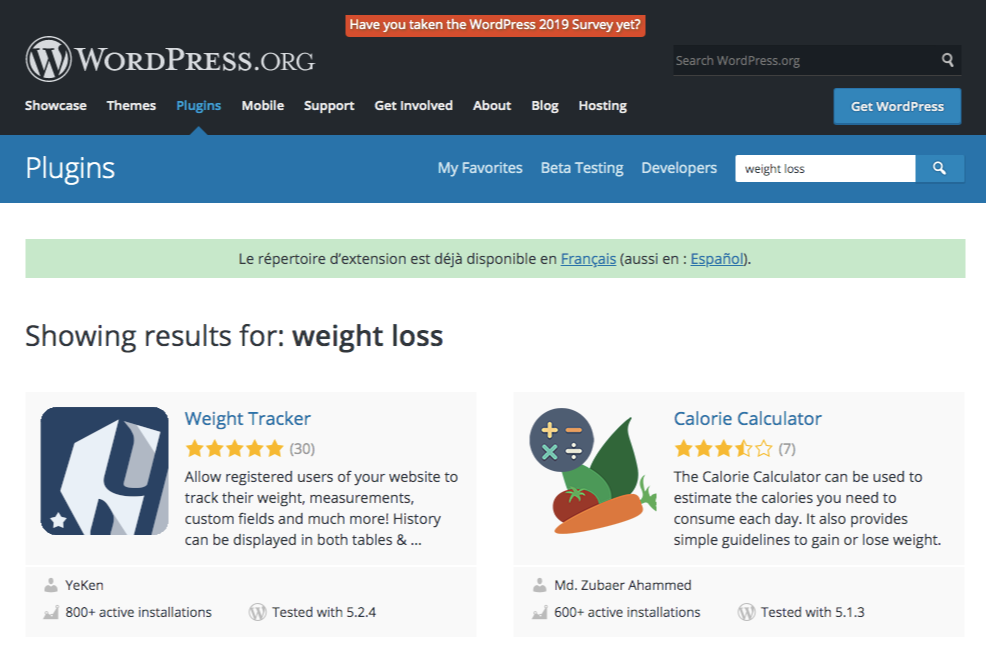

These are plugins that have been used by nutrition/health bloggers to serve their target audience better
By looking at each detail of those plugins, you could easily find link targets and add them to your list. Here are some ways to find more targets:
Identify the creator of the plugin and his website. Add those details to a spreadsheet.
Or the author profile section.
Look for people who reviewed the plugin. Get them also on your list.
Before doing your outreach to those link targets, you must create something to get the link to you. An example would be to create an updated version of the plugin that you see and has some errors when you installed the plugin or based on the negative feedback/reviews you’ve seen on the plugin page. Using this as your angle when pitching to your link targets would increase your response rate seeing that you offer value to them (an updated useful plugin).
WordPress plugin pages sometimes link out to the donation pages of the plugin developer. People would donate if they find the plugin useful for them, and this type of donation would encourage the developer to create more useful plugins targeted at a particular industry.
Aside from getting a donation link from the plugin developer’s site, you could also partner with him.
If you could bribe/incentivize the plugin developer to create a brand-centric plugin that will be useful to your target audience, then it’s a great opportunity to earn links for your brand and widen your reach to your community by providing an awesome resource.
19. Local Event Websites
Local events could possibly be the linkable asset of your brand both offline and online (if you know how to use them properly). Knowing that you can build new relationships with your customers or other brands during and after a local event, your brand can promote its offerings through partnerships or collaborations with other companies/customers.
Eventbrite and Meetup are a few websites where you can find events that will be held near your brand. This would open doors for local linking opportunities, seeing that the audience you might connect with by attending or hosting the local event could link to your brand/site from their blogs.
I’m seeking a local event discussing technology, internet marketing, or related topics. And specifically, I want an event that targets students, faculty staff, and personalities working in an educational institution.
By using Eventribe as my prospecting tool, I could visit this page.
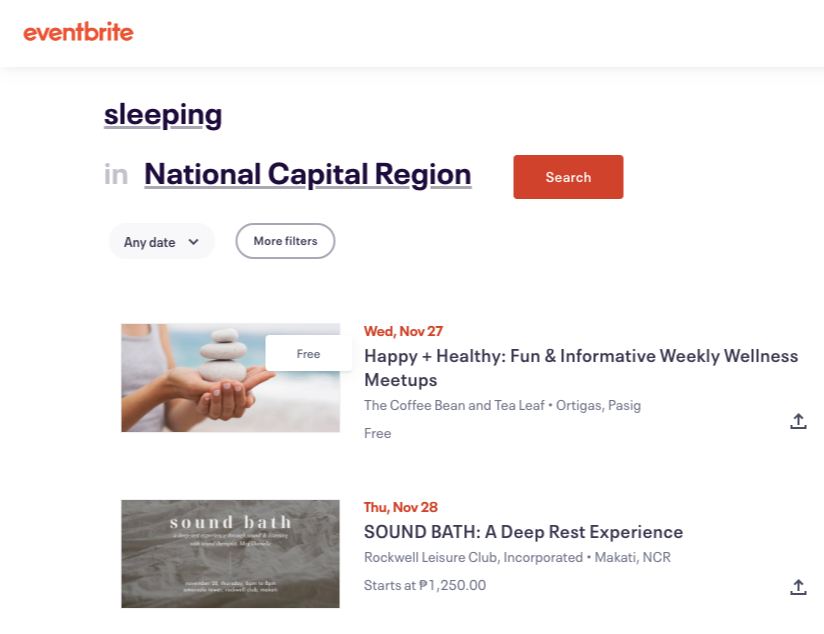

It is an IT-related event that will be held in our university. This is a good opportunity to connect with co-students interested in what I am doing today (online marketing and SEO).
Let’s switch places..(you are now the person who's looking for local events)…
Like what you are doing offline, local events can allow you to reach out to your local influencer through online outreach easily. Click on the “click the organizer” button at the bottom right of the page.
Get in touch with the local organizer. Speak about yourself and what you can offer to the event. Incentivize him by discounts on your products or offering a sponsorship program for the event.
Tip: Start to have an approachable personality every time you reach out to local personalities.
20. Footprints
There is a disadvantage to using simple searches in Google to find link targets for your campaign. When you search for phrases like “weight loss” “resources”, you’ll see hundreds/thousands of resource pages that list down various content pieces. This is a good linking opportunity for your brand, but only to discover that all your competitors are already targeting those websites for link placement. This might affect your outreach response rates (as you need to stand out among the pitches from your competitors) to obtain positive responses from your link prospects.
Footprints would dig into pages/sites where your competitors may not have been targeting in their campaigns. In this case, you’re not just running behind them but leaving them behind in the race.
Let’s have an example…
If you’re finding local linking opportunities, you might use this search query “local events” + “your industry”. This would reveal different local events that you might want to participate in for branding and promotion purposes. But as you go further searching, you would see footprint that almost all local event pages have it included.
Add this to your search query to find more local events that your competitors might not have listed in their link prospecting spreadsheet.
Pro Tip: List down terms/phrases you repeatedly see on every page you’re visiting. Add them to your search query to find specifically targeted pages.
21. Comment section on social media platforms
Social media platforms have their own comment sections that allow people to share their experiences about the subject matter, and in turn, the brand can build its community of like-minded people.
Youtube is one of the successful social media sites, and I consider it a gold mine for finding link targets (especially for video content pieces).
By simply searching for a particular keyword, you can see a list of videos that are relevant to your chosen keyword. Each video has some comments you need to watch for link building opportunities (unless the video uploader restricts people from commenting on the video).
Go into each comment and visit the user’s Youtube profile. Click on the About section and visit the URL of the user’s site.
This is a time consuming task, but if you’re into a massive video content strategy, this should be one of your methods to find linkers in your community (given that these people are interested to watch/linking to your video content).
22. Zemanta
Zemanta could provide suggestions for your content piece, lessening your time finding related blog posts targeting your keyword. Though it’s a great tool for content creation, you could also find link opportunities using Zemanta.
By simply visiting relevant content pieces, you could feel if the sites where content pieces are published can be considered good link-building opportunities.
23. Foursquare
Foursquare is a good place to see local brands near your city and what people talk about in your industry. It’s an opportunity to partner with other brands for a local event (e.g. SEO for food bloggers) where you can share your brand’s offering to the local community and how important your brand’s service/vision is to them.
The Best Nearby functionality of Foursquare is an easy-to-use tool to see companies that can help you promote your brand, even if those brands are outside your target industries.
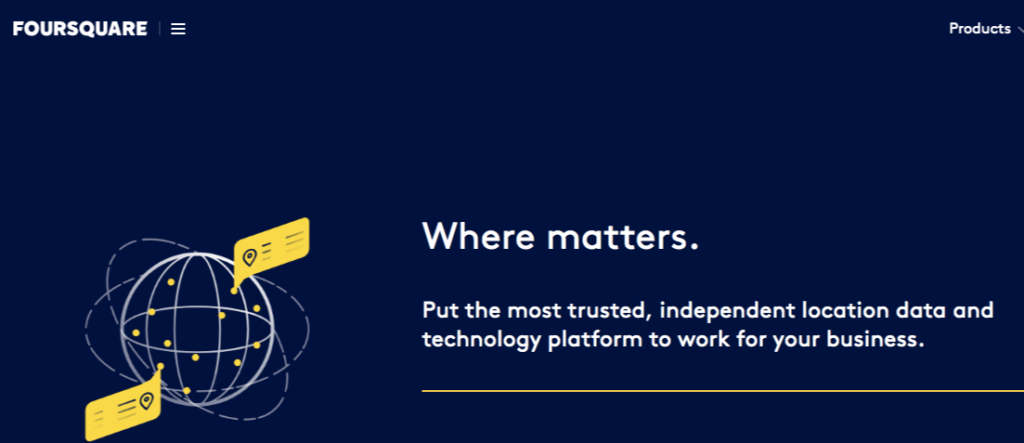
Link Search Tactics To Prospect Thousands of Link Opportunities
Link search is a phase in a brand’s link building campaign that most building efforts will depend on. This is where the success factors of link acquisition are noted, including:
- Obtainability of links, considering the types of links being built (contextual/site-wide, local/international, homepage/deep-link, etc..)
- Standard or quality of content existed in various blogs/sites
When done right, link search will provide thousands of link opportunities that your competitors may haven’t searched for.
Below is a list of 12 link search tactics that you can use to create a giant spreadsheet of link prospects that you can later reach out to for link acquisition.
1. Discover topical blogs
If most of your efforts revolve around building relationships with bloggers, then finding topical blogs is the best link search method for you.
Simply do a Google search (“industry” blog) for niches that are not directly connected to your brand but have a community of bloggers who might be interested to link to your page(s).
For instance, this link building blog is focused more on content marketing and link building topics than other Internet marketing themes. But even though I got high-quality links from related sub-niches such as CRO, blogging, web design, affiliate marketing, and student blogs.
If I would want to expand my link territory, then I can use the following search terms when prospecting for link opportunities, knowing that other niches might find my posts useful for them and probably link to my blog from their own content:
- “CRO” OR “conversion rate optimization” intitle:blog
- “Web design” intitle:blog OR “blog”
- “affiliate marketing” intitle:blog OR “blog”
In this link search method, you have to find the relevancy point between these niches and your brand, i.e. when you do outreach, you must be confident that they will respond to your pitch because they are interested in what you offer.
2. Use list of lists posts
List posts are everywhere. And creating a list of these lists will give you hundreds of blogs you can take advantage of for link building.
Searching for these list posts is easy. You can use the following search queries:
- Top 10 “industry”
- Top 50 “industry”
- Best of “industry”
- Ultimate list “industry”
Create one for your blog if there are no list posts in your industry. You will have a list of blogs/bloggers (potential linkers) and added-value content that you can use for your pitch (telling bloggers that they’re one of your followers, so you included them in your latest content).
3. Leverage brand partners
For some marketers, putting brand partners in a list of link targets would only apply to big companies that already had an opportunity to engage with other local and niche brands in the past. Since they had a database of existing partners, there’s a high chance to involve them in the company’s link development campaign.
However, for small to medium-sized enterprises, there are still partners that they might consider for link acquisition, such as the following groups of people:
- Suppliers/manufacturers who are connected to the brand.
- Local non-profit organizations where the brand had engaged in the past (i.e. sponsorships).
- Local educational institutions with specific courses directly aligned with the company.
- PR companies or news reporters who had just covered the brand for some good stories.
These groups of people can become your list of brand partners, wherein you can easily earn their trust because of pre-existing relationships with these institutions.
You won’t go anywhere else to find those brand partners for an eCommerce client. Just look at their website, and find a page that says, “List of suppliers/manufacturers”. Start prospecting from there and add all potential link targets to your spreadsheet. However, if there are no existing pages like the example earlier, then simply do a Google search to find your brand partners.
4. Make use of market-centered keywords
One of the key ways to collect profitable link prospects in your database is to understand your market and what your target audience is looking for online.
For instance, if you’re working for a travel agency, you might consider industry phrases that’ll identify your market needs, such as:
- Travel list
- Travel guide in 2015
- Travel guide in [city/location]
- Best places to see in [location]
- A travel blog with pictures
As you can see, these are the exact phrases people are searching for online to find relevant resources or content about travel, “why” and “what” type of search terms (what is travel) is insignificant to the market needs since people are more likely interested with how’s (map of going to a specific location) and when’s (dates/times of best attraction in the city).
5. Reverse engineer content contributors
Showcasing your brand’s expertise through blogging (i.e. regular contribution to other related blogs) can drive traffic and referral visitors to your website. When using this approach, the common way to find prospects for guest blogs is by adding the terms (“write for us” or “guest post”) to search query, “industry”.
Though you can already find a handful of blogs using that link search method, it won’t guarantee that those blogs are of high quality and could provide value to your site (referral visitors and potential conversions).
One profitable approach to prospect for content contribution blogs is finding the best author/blogger in the industry or determining your competitor's most active content manager/marketer.
Adding the name to the following search queries will end up having a bunch of blogs to which the author had contributed his content to:
- “[Name] is a content contributor for [Competitor Domain].com”
- “[Name] is the author of”
- “[Name] is the blogger at”
- “[Name] is the owner of”
- [Name] “author” OR “blogger” OR “marketer”
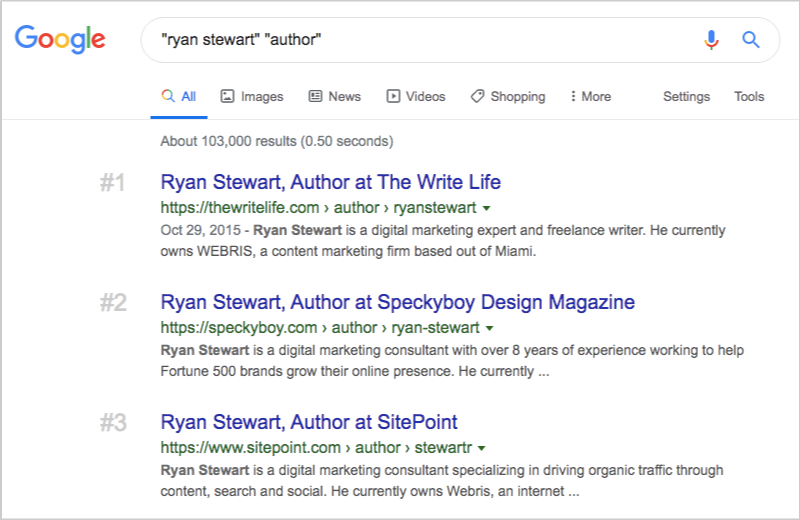

So if you’re targeting 50 high-quality niche-specific blogs, the link search approach above could easily help you achieve your goal.
6. Apply footprint prospecting
Finding footprints of your competitors can quickly help you search for low-hanging fruits in link building. However, to some extent, if it is done regularly and this is the only approach you’re executing, you shouldn’t expect a higher competitive advantage over your competitors (since you’re just following what others had been doing in the past).
If you’re still building your brand from scratch, you can use footprint prospecting to find bloggers you can connect with through blog commenting. This traditional link building technique still works as a pre-engagement activity before pitching bloggers for link requests or other content-led outreach methods.
A quick search query ([keyword] “leave a*” “comment”) could yield a good list of blogs where you can regularly check new posts and add useful and relevant insights in the comment section (to get into the radars of your target influencers).
You may also want to seek the footprints of your competitors to find new link opportunities for your brand. Do Google searches for the following search strings:
- [competitor] “interview”
- [competitor] “news”
- [competitor] “press”
- [competitor] “author”
Then click “Search Tools” – Anytime – Past Month.
Here are a few things you can see in the search results:
- The author updates in the blog posts (i.e. editing texts and adding internal or external links to improve the page’s ranking potential).
- Text-based and video interviews.
- Webinars, podcasts, and brand press releases associated with the author/owner.
- Social profiles of the author or the company.
Don’t just follow the brand and its existing authors/owners. You may also want to track the following brand elements and their future mentions in other blogs/sites.
- Future staff members
- Brand partnerships with relevant brands (supplier-to-manufacturer relationship)
- Book names or other content assets published by the brand (i.e. whitepaper “author” OR “whitepaper” author).
- Prominent interviewer always pops up in the search results when the search string (“competitor” OR “author” is used).
This link search method requires constant changes in search strings as it would need to adapt to updates happening in competitors’ brands and industries.
7. Utilize customer-defining keywords in link search
Customers, when finding products or services in search, are commonly using terms/phrases that define a target audience or their colleagues (fellow members) in the industry.
So gearing your link search toward what customers are defining their group members will help you discover highly qualified prospects instantly.
For example, if you own a running blog, you can use audience terms like:
- Runner
- Marathoner
- Sprinter
- Jogger
- Trackman
You can add more customer-defined keywords to your list by going to Thesaurus and searching for available synonyms.
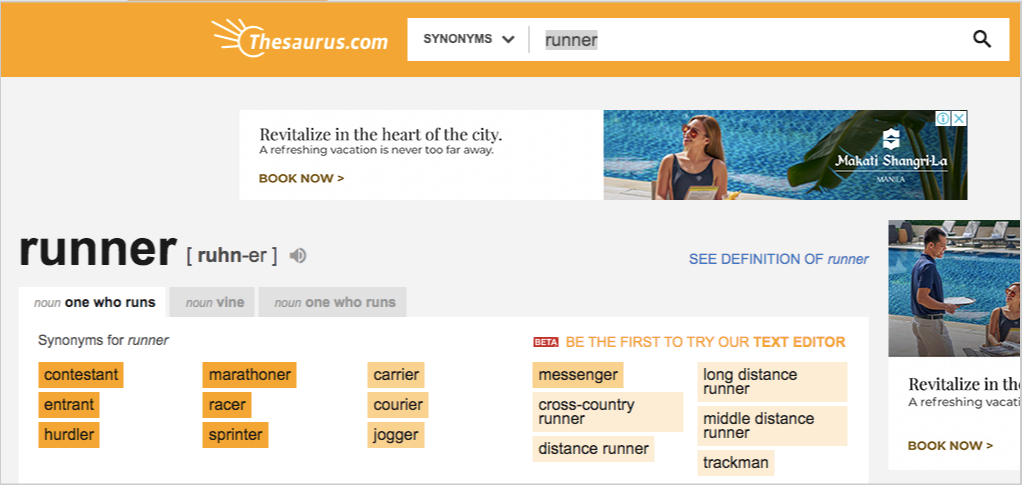

You can also try visiting glossary pages in your niche and looking for specific terms that define groups of audiences.
Instead of using the head industry keyword to prospect for link opportunities, you can use those customer-defining keywords to build a large link data. In our given example, you can have the following search strings:
- Marathoner “blog”
- Marathoner “resources”
- Marathoner “guide”
- Marathoner “links”
Changing the given customer-defined keyword to other industry audience groups (sprinter, trackman, jogger, etc..) will give you another hundred opportunities you can’t find by simply using the head term (running) in link prospecting.
8. Discover industry thought leaders
This is pretty much the same with footprint prospecting, wherein you use names of authors from your competitors’ brands and add them to your advanced search operators to prospect for pages/sites where those authors had been mentioned.
Industry thought leaders do not only represent companies they’re working for but media outlets, content sites, branded pages, and communities where thought leaders participated and are credited for their works (by linking to their brands using names as anchor texts).
Take note of brands with attached multiple authors and personalities since partnering with them can help amplify your content assets to a larger audience list (considering the number of followers each author has).
Consider Moz, for example. The brand doesn’t just have one thought leader (Rand Fishkin) but three or more authors that are active in the community but represent the same company (Cyrus Shepard, Dr. Pete, Jen Lopez, etc..).
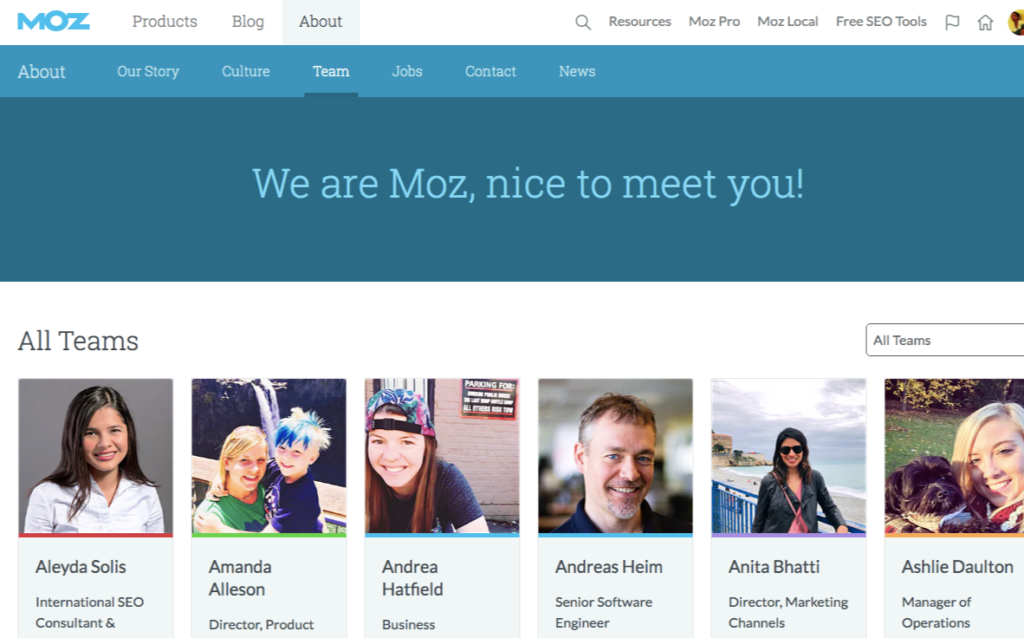

In this case, learning from what the thought leaders are working on to build their own personal brands will help your campaign identify opportunities that will also give good impressions for your company.
You may also try to determine what topics each industry leader focuses on. Then try to invest in certain themes (one content theme at a time), then reach out to thought leaders interested in consuming and sharing your content.
With Moz, authors have their own themes when creating content:
- Rand Fishkin – videos, webinars, and podcasts on advanced SEO and marketing topics (e.g. Whiteboard Friday).
- Pete – data-based content with graphs/illustrations (e.g. Google Answer Boxes)
- Cyrus Shepard – ultimate guides and curated content on advanced SEO topics (e.g. Advanced SEO Concepts)
Pro tip: Adding expertise phrases of authors to search strings (e.g. “guide” “Cyrus Shepard”) would give you pages/sites where content assets of authors had been mentioned.
9. Maximize product and category keywords
One of the under-utilized approaches in searching for link targets is adding the brand’s categories to search strings. This method will uncover hundreds of opportunities to target each and every type of product your brand can sell.
Start by talking to your clients about what products they are selling, or simply go to their website and look for brand categories.
In our earlier example, you can have these types of products:
- Flat feet running shoes
- High-arched feet running shoes
- Neutral running shoes
- Normal running shoes
Add your favorite keywords (reviews, forums, blogs) to categories (example above) to find loads of pages/websites that can potentially link to your content.
10. Use local-specific keywords
Making your search strings tailored to a local audience helps you discover and participate with local press outlets that have a high chance of driving local traffic and increasing sales.
Combine your favorite keywords (reviews, resources, blogs) and local areas (e.g. Brisbane) to find local pages or sites. You can also be specific with cities by adding region or state and Zip Codes to prospect for easy link opportunities.
11. Be specific with resource page terms
Seeking link opportunities, especially resources/links pages, requires creativity in brainstorming for new search strings. This is true for industries that don’t have many pages for resources.
In this case, you need to understand what industry terms webmasters use or target in their existing site links.
In running a niche, you can be as specific as possible when doing link search (to find resource pages).
Here is an example of using very specific search terms for resource pages:
- intitle:resources OR inurl:resources “trail running”
- intitle:resources OR inurl:resources “kids running”
- intitle:resources OR inurl:resources “mountain running”
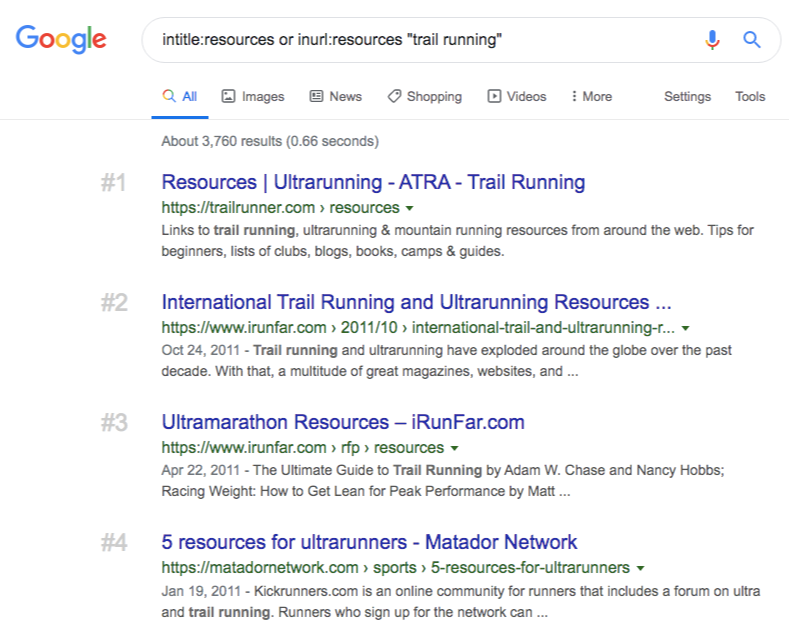

The more specific your search is, the easier for you to filter out irrelevant pages in search results and only qualify those sites that are high quality.
Pro tip: Always check out related verticals while looking for link prospects. This might uncover opportunities that could otherwise be undiscovered. In our example, adding the keywords “fitness resources” or “personal training” resources will help you build a large database of link targets.
How to Speed Up Your Link Prospecting Activity
In this section, I’d like to simplify the process by giving two important link prospecting elements:
- Assets (Internal)
- Opportunities (External)
Assets are web pages you want to build links to and help them rank high on search results using different link acquisition methods. Opportunities are linking partners or sites where you want to place your link.
Below is an asset-opportunity relationship example to help you understand how this simple link prospecting process works:
- Homepage = Directories, Profile Pages, Social Profiles, Partners/Membership Pages, Business Directories
- Ebook = Ebook directories, product review blogs
- Money = Sponsorship sites, grants pages, paid product reviews sites, events
- Blog post = Guest posts, Round-ups
- Team Members = Interviews, Unlinked Brand Mentions
You may notice that the more you understand the link value of your assets, the more you can create a list of linking opportunities targeting a specific content asset.
This can further amplify the reach of each of your assets since you’re building a wide array of link building opportunities that are highly obtainable and relevant to your target page.
Keyword-based link prospecting
Ranking pages
This is the easiest way to get an initial list of link prospects since most of these pre-qualified link targets can come from your client’s contact list or recommendations.
You can widen your list of link prospects by applying the following tips:
-
Search for highly related websites (which should not be your competitors in the space) by doing a Google search using your target keywords and related industry phrases/terms.
-
Get more linking targets from search results by discovering new niche-specific terms closely connected to your link prospecting queries (scan the meta titles/meta descriptions of other content pieces).
-
Find the synonyms of your industry phrases using Thesaurus, Google Docs, and Tilde (~). Use these link query suggestions to discover link targets that may not be targeted by your competitors.
Here’s a video to explain how to apply this link prospecting method:
Link Prospecting [Ranking Pages] from Venchito Tampon on Vimeo.
Link building queries
Link building queries are essential to limit the number of pages appearing in the search results for specific keywords/phrases. Prospecting using link queries is more efficient by combining useful advanced search queries in a single search.
For instance, you have a huge budget for paid link building tactics. You can build high quality backlinks to your homepage by finding sponsorship opportunities where you can donate money in exchange for links.
Using this query: inurl:sponsor OR donate OR partner OR grant + finance, you can find high-valued link targets that offer link placement in exchange for a certain amount of money (ranging from $5 to $50) and are related to the finance niche. These are easy-to-acquire links using different link acquisition methods, such as linker outreach with an incentive approach in the link outreach templates.
Here’s a video to explain this method:
Link Prospecting Using Link Building Queries from Venchito Tampon on Vimeo.
Tools to Speed Up Your Link Prospecting Activity
Here are the link building tools that you can use to ease your link building searches for a specific link building strategy:
- Link Clump
- Notepad
- Ctrl + W
- Excel Files
How to Speed Up Your Link Prospecting Activity from Venchito Tampon on Vimeo.
Note: This is my first time creating video tutorials, so forget all the mistakes I've made in each video.
As I've encountered several resource prospecting campaigns, I always notice little things that make part of it more efficient. Efficient prospecting means producing a highly targeted output with less consumed resources (labor, time, and cost of tools).
That itself requires experience through observation. So, here are four advanced prospecting techniques that hopefully can improve the efficiency of your campaigns and help expand your list of link opportunities.
16 Advanced Link Prospecting Techniques For Increase Efficiency
Agility and efficiency are essential drivers of a successful link prospecting phase.
Setting a plan to never run out of opportunities for link acquisition is important since this can improve the entire campaign's prospecting rate and increase the average number of link prospects collected per hour/day.
By focusing on link prospect growth, link builders can expect significant improvements in the overall link development campaign in parts such as:
- Enables finding new audiences targeted by newly added link opportunities, which can be useful in brainstorming future content assets relevant to these audiences.
- Grows your current list of relationships with bloggers/webmasters/journalists (new connections can be derived by reaching out to an additional list of link opportunities).
- Increases deliverables (# of links delivered every month) for clients since, on a given average conversion rate, one can expect more links by sending more outreach emails to added link opportunities in the original list.
There are many viable guides and how-tos in link prospecting from different SEO experts. Some techniques are learned simply through your own observations from campaigns that you have handled. We at SharpRocket, incorporate those observations from our own personal experiences, which helped us be more productive in building links.
1. Listing down link similarities
Most bloggers use the same terms in creating links for their pages. For example, the commonly used terms in creating a resource page are domain.com/niche-resources; domain.com/resources.php; domain.com/links.html. Therefore, we can use Google queries such as inurl:niche-resources or inurl:links.html. The search engine result will give us a list of resource pages according to the niche we seek. Below are other search queries you can use to find additional prospects for your client which we personally use:
- resources/links
- resource-guide
- useful-links
- useful-resources
- niche-resources
- recommended-resources
Though not all search queries, such as resources.php, links.html, or useful-links, provide resources that are relevant to the client’s industry, it is advisable to add a distinction which is based on the client’s niche to narrow down the results in the Search Engine Results Page (SERP), e.g. inurl:useful-links “niche”. Google will then provide results based on the keyword you used, which is more applicable to your campaign.
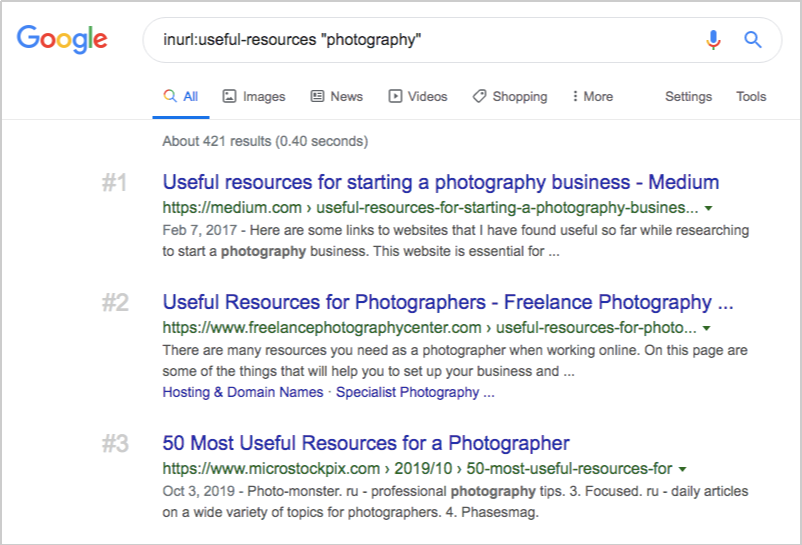

Pro Tip: Just be creative with the words you use, along with being observant. If you have a hunch or an idea that you think can be helpful, it won’t hurt to try experimenting on it. Who knows, you might even be able to discover other useful techniques you can use to further enhance your link building skills. Don’t forget to check out the links on the resource page you found, for it may redirect you to a new prospect opportunity that you have not seen through the list that Google displayed.
2. Utilizing country domain extensions
As you may have noticed, some domains do not always end in .com, .org, or .edu, and other web addresses use different domain extensions depending on the country in which their website is being hosted (e.g. “.au” which is hosted in Australia or “.ca” which is hosted in Canada). You can narrow down the results using these domain extensions based on your preferred country or target audience. You can use the advanced search operator “inurl” followed by the country domain extension you want to focus on (e.g. inurl:.ca). You can also add a distinction to make the search query more precise. If you are looking for guides or resources to enhance your photography skills, you can use inurl:.ca/photography-resources. Google will then give you a list of photography resource pages with the country domain of Canada.
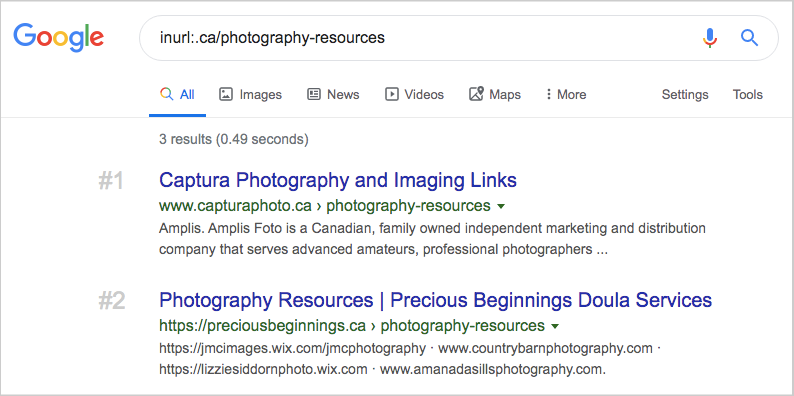

Pro Tip: You can use these techniques in any niche or industry you wish to research on. However, if you don’t have a specific country, you would like to focus on, searching for link targets ending with .com first is recommended because it is the most recognizable and highly used domain extension. You can then use the other country domain extension of your preference to gain new prospect opportunities.
You can visit this Webopedia guide for a complete list of countries and their domain extensions.
3. Identify company blogs through SERPs
By taking notice of the Search Engine Results Page (SERP), we can also pinpoint if the link is a company website or a personal blog. Though not all domain names and punctuation marks are 100% accurate, it can somehow lessen our time checking each link to see if it is a company website. Here are some examples:
![]()
![]()
The above query will display links with the keywords “light” and “bulb” in the article's title. One result has a punctuation mark called a pipe or vertical bar on the page title. It was followed by the domain name “1000Bulbs.com”. Here, we can be sure it is a company website because the page URL was also mentioned in the title.
Clicking the link will redirect you to the webpage.
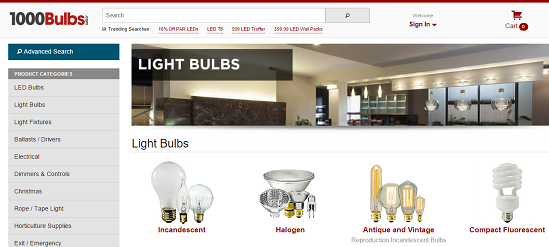

A hyphen or dash is another punctuation mark used in identifying a company website. As you can see, the domain name, the company's brand name, is included in the page title after the hyphen. Most of the time, em dash or the long dash is used.
Lastly, the punctuation mark colon. The difference between this punctuation mark from the hyphen and vertical bar is that you can instantly notice it at the beginning of the page title. The brand name is cited first, followed by the colon and page title of the article.
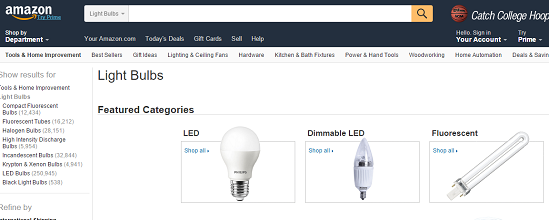

We can distinguish company websites through these punctuation marks on the page title. Just a little note, not all sites that use a hyphen, vertical bar, and colon in the page title are companies. Some content creators tend to do that as well.
Observational learning is a must in link prospecting. It helps us maximize the use of Google queries and lessen our time clicking unnecessary links. Simple terms, domain names, and symbols might have a deeper meaning. This is why we must keep our eyes open and our minds sharp. Noticing terms you don’t usually use but is mentioned in the client’s industry can be used as keywords for broader research. Checking how domain names are created by bloggers can give us a better chance of generating more results. We just have to be adamant about making observation a priority.
4. Website categorization
When starting a new outreach campaign for a client, the first initiative is to scour new link opportunities on the web from scratch. While this is good if it's a new industry you're taking on, isn't it wise to go back to your previous list of industry-relevant opportunities and check which ones could be reused for the new campaign?
Not only does it save time, but it also saves a lot of labor consumption prospecting for links.
Website categorization does help with this. By using tags, you can categorize prospects from a topical perspective.
What you need here is a defined hierarchy of topics to begin with. For me, I recommend BOTW as a starting point, given that they have four or five deeper-level topics, such as Pro-Choice Abortion (Society) and Eating Disorders (Fitness), which is extremely important if you've got clients from a very specific niche.
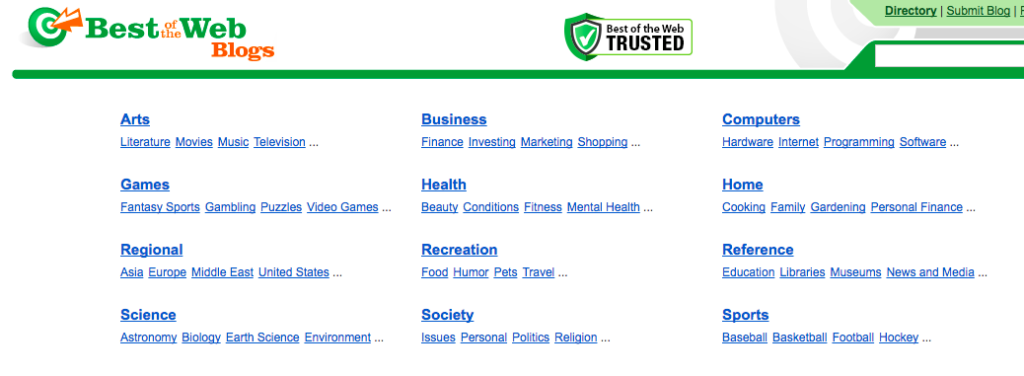

Ensure your team agrees on certain topics to avoid confusion when filtering your list. Having several but similar terms (i.e. I.T, Information Technology, and Technology) as your tags is trouble.
The next time you need automobile blogs, you can pull them off a list within a few minutes.
5. Check descriptions in links to eye SEO'y content
Backlink research is identifying current and potential competitors and getting pages/sites linked to them for link opportunities.
SEOs normally identify these competitors through Google search by checking which pages are currently ranking for target keywords or creating a list of competitors' sites coming from clients (as they already have ideas about which brands to compete with).
While these two approaches are best practices to find your most relevant competitors, you may still miss out on some SEO'y content (as Ross Hudgens coined it) that you should reverse engineer on (reverse engineer backlink profiles).
SEO'y content is pages or content pieces already linked out from a resource page you're trying to reach out to that have earned tons of links from several linking root domains.
Looking for SEO'y content can expand your vertical prospecting, either from a horizontal or vertical perspective, as they aren't easily found through Google search or normal prospecting.
One way to identify this SEO'y content is to check discrepancies in the description of links. What I mean by discrepancies is that there are resource pages with full descriptions for each link, and some with links with unusual descriptions.
I got this idea when I received a response from a webmaster putting a link to our client's page from their resource page.


If you skimmed the email above, you'd notice that there's nothing uncommon with the email; only does it implies that the webmaster is in a hurry not to include a description for our link - the reason she requested that we can create one for them.
Discrepancies in link descriptions—either the description is not complete or not in format with other link descriptions (see image below)—are signs that the resource page had recently given a link to SEO'y content. TigerMobiles.com and US Dish links have Titles as their descriptions, while other links have longer texts that describe what those pages are about.
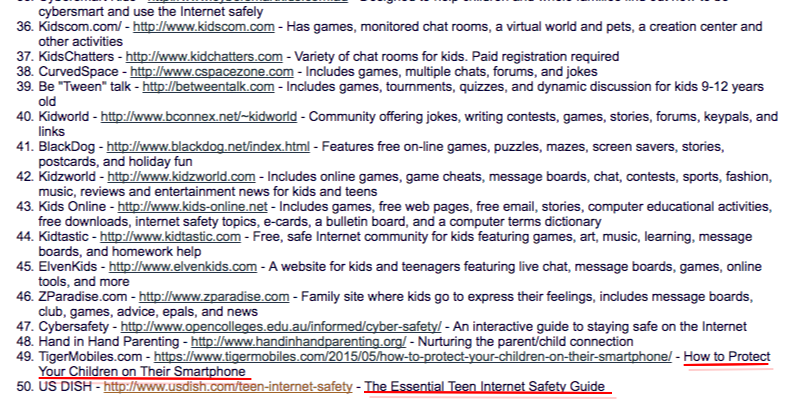

It means that these SEO'y content are actively pursuing relevant link opportunities (primarily resource pages) as you do. If you could scour their existing links (some may have been recently just acquired), it would help you gain link targets that are receptive to content suggestions. Thus, giving you a higher link acquisition rate in your outreach campaign.
Clicking on SEO'y content links and assessing if they have relevant links you can potentially use as link opportunities is a great activity to add to your link prospecting process.
The best way I recommend initially checking if this SEO'y content has a good number of linking root domains is to run them through LinkMiner.
The tool checks all external links on the resource page and highlights how many domains link to a certain external page.
6. Use Linkclump to open document links simultaneously
In link prospecting, the more you spend time checking for unnecessary links, the more you waste time that should've been otherwise spent pursuing the right link opportunities.
What I've noticed with newbie link builders is that they often click on document links (pdfs, words/spreadsheets ready to download, etc.) that consume seconds (if not minutes of their time), which are all useless if your main targets are links or resource pages.
The recommended approach is to use a tool that'll automatically unclick these document links once you start qualifying your list of link targets.
For example, if you have a list of pages ready to be qualified for certain metrics (DA, relevance, obtainability), copy and paste them into an opened tab tool (e.g. URLOpener.com).
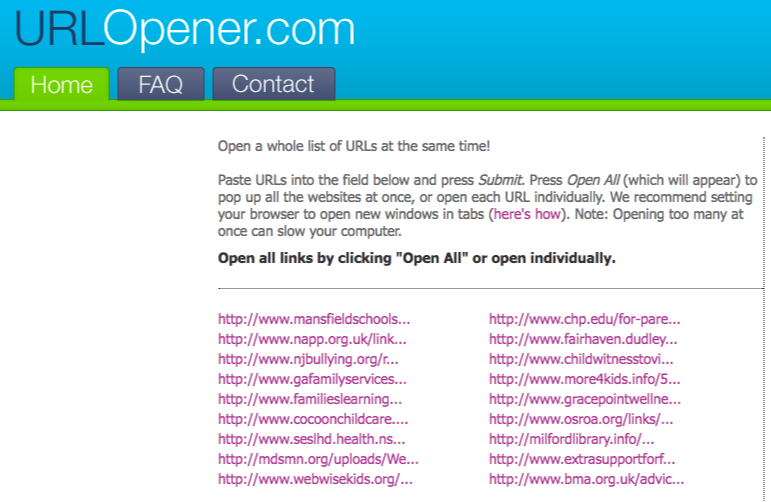

Then install Linkclump and use the filter option to add words that'll exclude links when it opens new tabs (pdf, doc, xls, etc..).
Once you right-click and drag external links from URLOpener, the action won't open document links as new tabs, given that you excluded certain words in the tool's setting.
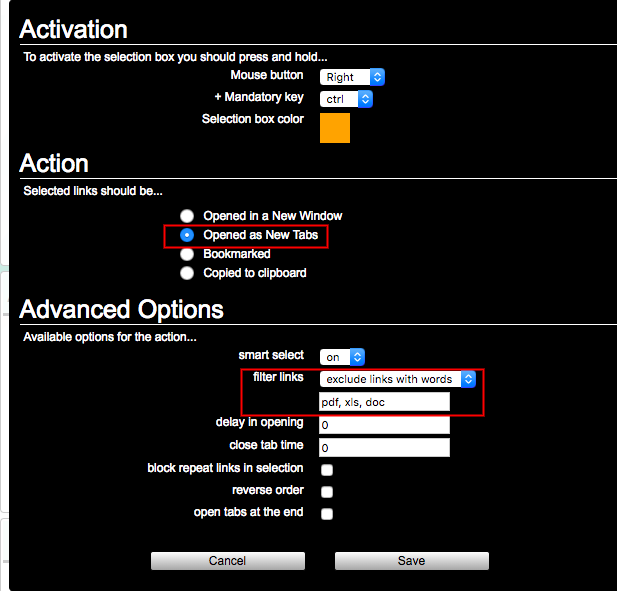
7. Utilize niche phrases to expand link list
If you are familiar with your industry, it's easy to know what phrases are commonly used as titles on resource pages. For example, you'll see many "getting there" pages in the transportation industry. These phrases are only specific and can be applied to a certain vertical.
But one question that may arise here is, what if it's a new niche I'm taking on? How can I identify niche phrases to expand my prospecting approach?
The best way to do that is to collect the titles of your first set of resource pages (I'd recommend getting 80 or 100 links pages from your list for optimal results).
Use Wordcloud to see common niche phrases.
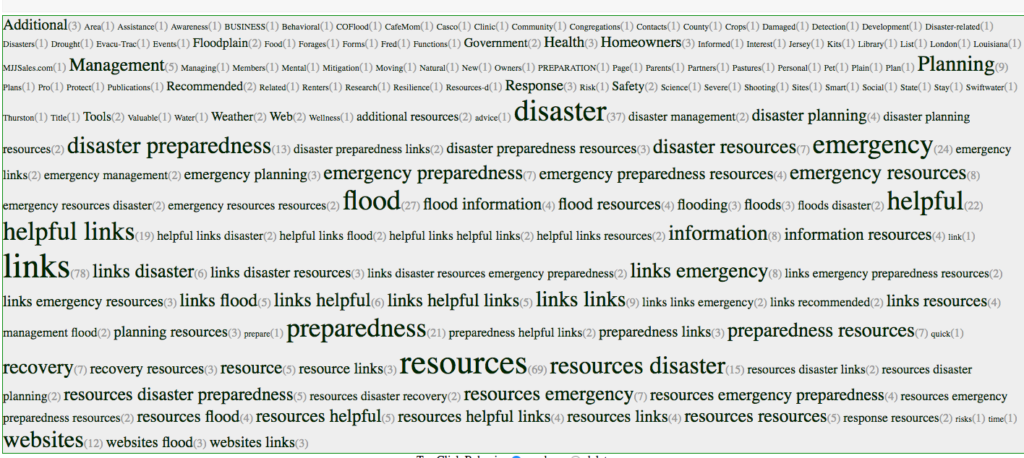

Ensure that you click phrases only and display frequencies checkbox. Phrases only feature does what you need from the tool - to give exact niche phrases while display frequency shows you the number of times a phrase appeared in the list.


If you are clever enough about using niche phrases, your list of link opportunities will expand.
Other Useful Resources:
- 4 Reasons Why You Don't Get Resource Links
- How to Identify and Pursue Linkerati
- How to FuturePoof Your Links By Determining Lifetime Link Value
8. Use better keywords in link search
Research is not “good research” until it is seasoned with all the right keywords. We cannot simply uncover relevant and insightful prospects if we do not employ the correct strategies. Having said that - keyword generation is, in my opinion, the heart of every campaign. After all, how can we ever expect to reach our audience without first wielding a well-thought-out string of words?
To help us navigate the waters of “keyword inception”, let us first return to its root. A keyword is commonly defined as a word or concept of awesome significance. To develop a great blog roster, we need to make sure the phrases we use in research will coincide with those utilized by our target prospects.
Another looser translation of the term is “password”. I very much like decoding a password in relation to finding the most effective words to use for link prospecting. Not unlike our search queries, passwords unlock a bunch of possibilities.
As you probably understand, there are a lot of factors to consider when it comes to choosing your terms. The most commonly used keywords in our industry are categorized under three types: generic, specific, and long tail.
Let’s first take some time to understand these keyword types better before we go on.
A. Generic Keywords


As the term suggests, “generic” keywords are unspecific and all-encompassing. You can expect to get thousands, even millions, of results using this type of keyword. An example is using “food processor” in your search query.
B. Specific Keywords
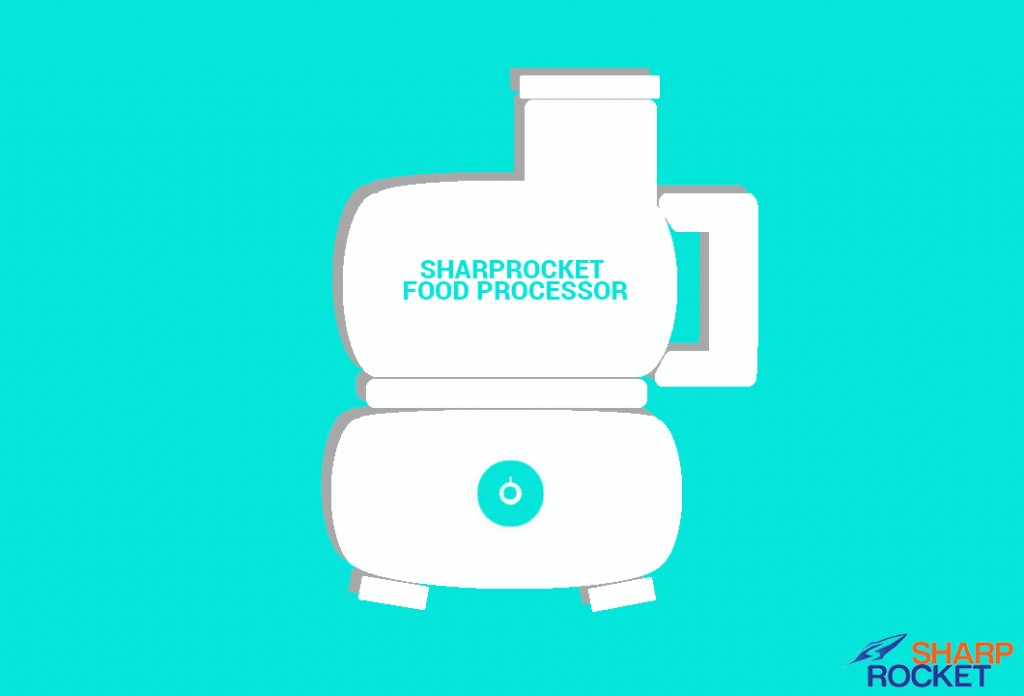

This type of keyword is a lot more particular than the former. In relation to our previous example of “food processor”, a specific example would be a branded version - “SharpRocket Food Processor”
C. Long-tail keywords
Lastly, long-tail keywords are the most common phrases or even complete sentence typed into the search bar. A perfect example for this would be “best way to operate a food processor”. A set of four or more keywords is considered “long tail”.
Returning to this article's main point, how do we develop the best possible keywords and keyword combinations for maximum results? Of course, this leads back to a rather popular answer: common sense.
9. Use "topic" "guide" to search for content competitors
Reverse engineering has been a standard link building practice - spying your competitors for link sources pointing to their pages.
However, that approach will leave you following the footprints of your competitors.
If you can be visible on websites they haven't acquired links from, it would be better to get ahead of them (or evenly outrank them!).
One initiative you can make is to look at other brands (not necessarily your direct competitors) that have published industry guides on similar topics.
We've found that using this search query, "GUIDE" "TOPIC" supplies a list of websites from other industries in SERPs that have topically-relevant content assets.
For example, a quick look for "veterans" "guide" can reveal this search result page.
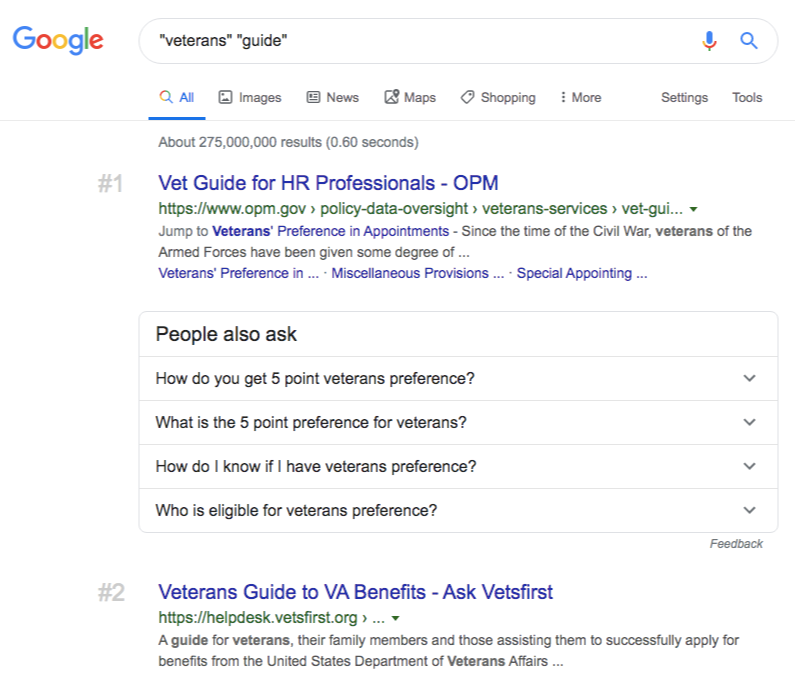

Your next step is to list the people and sites/blogs who have linked to similar industry guides or shared them via social media. You can extract these data using tools like Buzzsumo and Ahrefs.


It is best to list them in a spreadsheet, including each prospect's contact address.
Start reaching out to them. You'll have better chances of getting links given that they're interested in the subject of your content since they've linked to a similar industry guide in the past.
Embracing competitor opportunities
Not all links will be counted with the Google link command. Some pages displayed on SERPs are not all-important or relevant to what you are looking for. Yet checking websites connected to your competitors will give you an idea of where to build your links. It will provide new ideas and broader networks to associate with. You just have to embrace every opportunity that comes your way to get links or a new set of keywords to use, even if these are from your competitor.
10. Keep track of websites with consistent linkable content production
You will not always find a brand that publishes a solid set of content assets while getting/attracting high-valued links to its pages.
If you have found a website that matches the above criteria, it's worthwhile to bookmark it and try to spy and assess its content strategy (both its content creation and promotion approaches).
In our broken link building campaigns, we've spotted and have kept track of all the websites that have continuously been producing heavy linkable assets in different industries.
Regardless of whether or not it is directly competing with our client, we monitor those sites for new content ideas and future linking opportunities.
For example, Affordable Colleges has been on my personal radar because they have been targeting new markets (audiences) through the new content they published in their resource section.
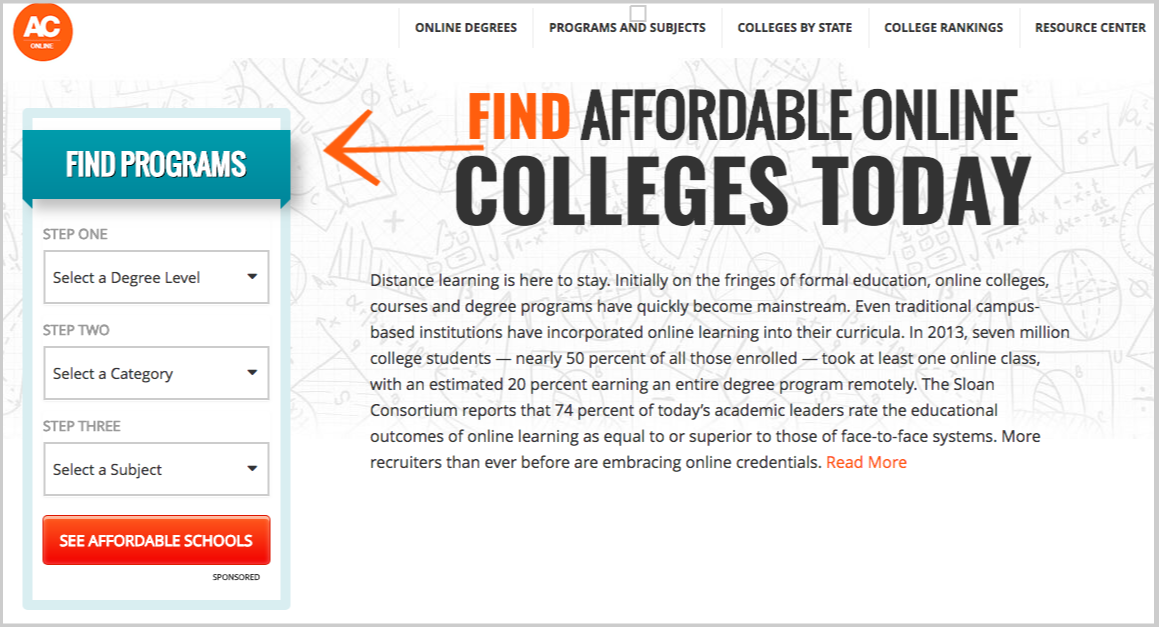

By using content analysis tools like Ahrefs, we can see the new industry guides they've invested heavily in content promotion (check Best by Links Growth feature).
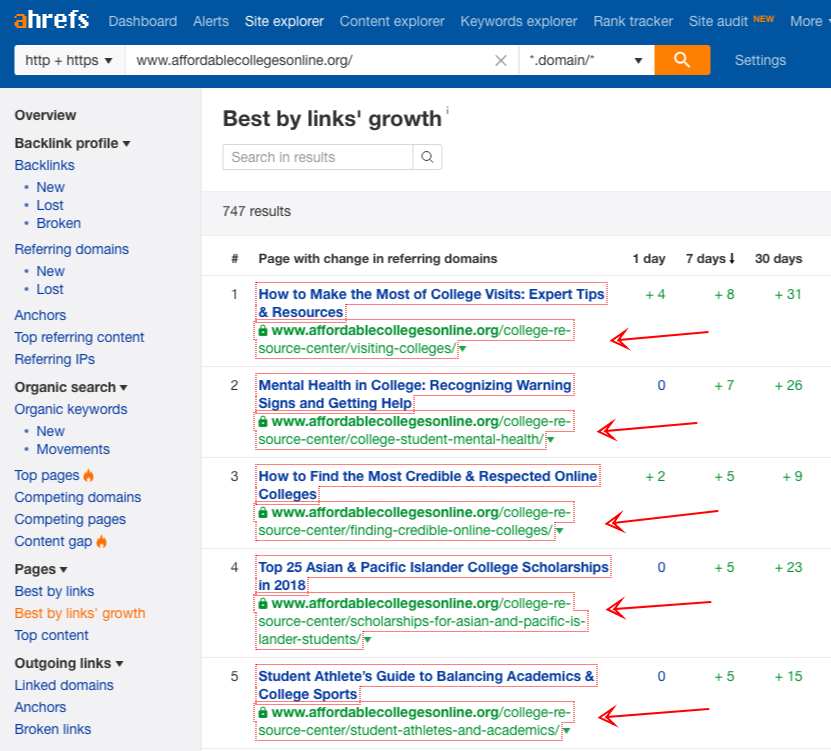

That approach can expand opportunities for our future link development campaigns, given that we can tap into new markets that are not included in our initial list of linkable audiences, such as homeless students and multicultural & diversity groups.
11. Integrate dedicated .edu pages in your search queries
Links from .edu pages are one type of links that can impact your pages' performance on search rankings and can damage your industry's competition if you achieve success with it.
However, before getting results from any .edu link building strategies, you'll always start with .edu link prospecting - one that's hard to build when starting out.
One approach that you can use to scale .edu link prospecting is to target a specific type of .edu page in your search queries.
Those .edu websites normally have sections of information resources such as counseling, health & wellness, financial aid, community resources, and summer housing - which can be individually targeted in your search query depending on the subject of your page/site.
For instance, if you're in the mental health industry, one phrase you can include in search queries is "counseling" or "student health" to come up with the following targeted search queries:
- site:.edu "counseling" inurl:resources
- site:.edu "student health" inurl:resources
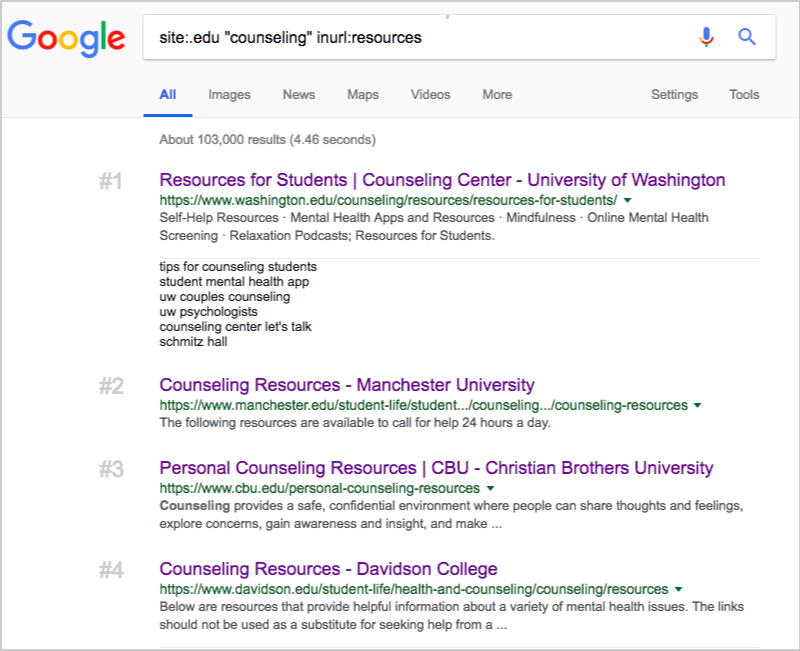

Here are more .edu pages for topical-relevant pages:
- "summer housing" - apartment categories
- "career & internship" - job sites, portals, or resources
- "general health & wellness" - health organizations or niche-specific resource guides (e.g. sexual health)
Moreover, finding targeted pages of .edu sites can also be helpful with the kind of link building strategy you're currently using.
For example, when pursuing scholarship links, instead of using the common search queries like (site:.edu "scholarships" "industry/topic"), you can be more targeted with your search by using the phrase "financial aids" - which is a .edu resource page for students seeking for financial help.
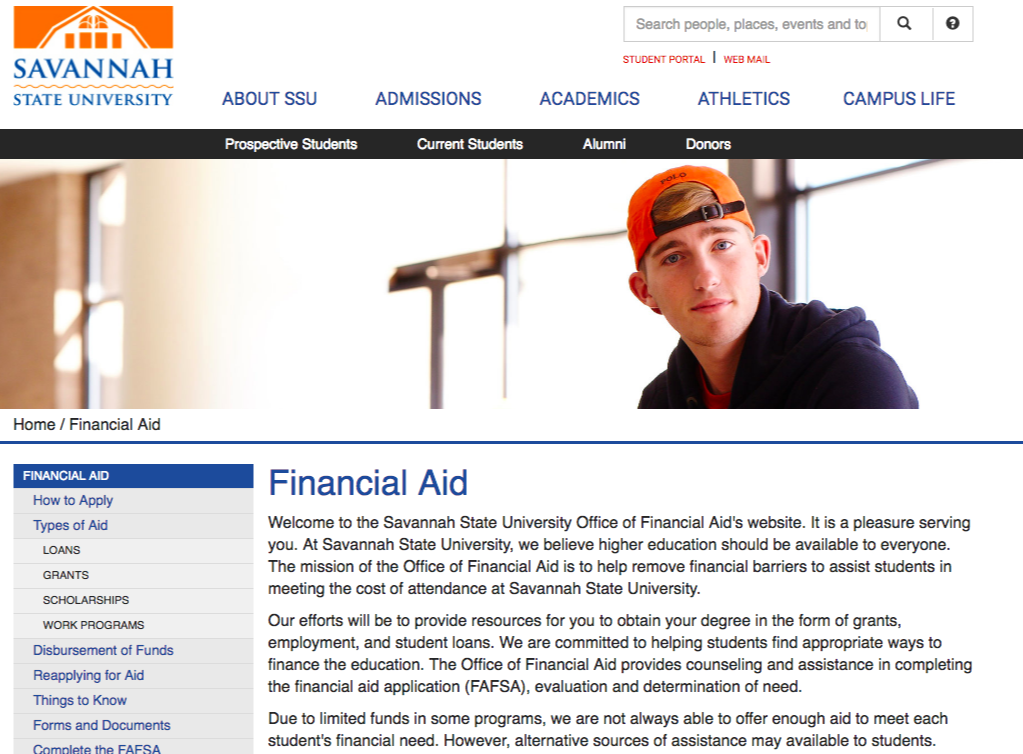
12. Start with libguides queries for .edu link prospects
Another way to be proficient in high-authority link prospecting is to target libguides pages of .edu websites.
What exactly are libguides?
LibGuides are content management and information-sharing system designed specifically for libraries. The platform allows for easy navigation and instruction on core and relevant resources in a particular subject field, class, or assignment.
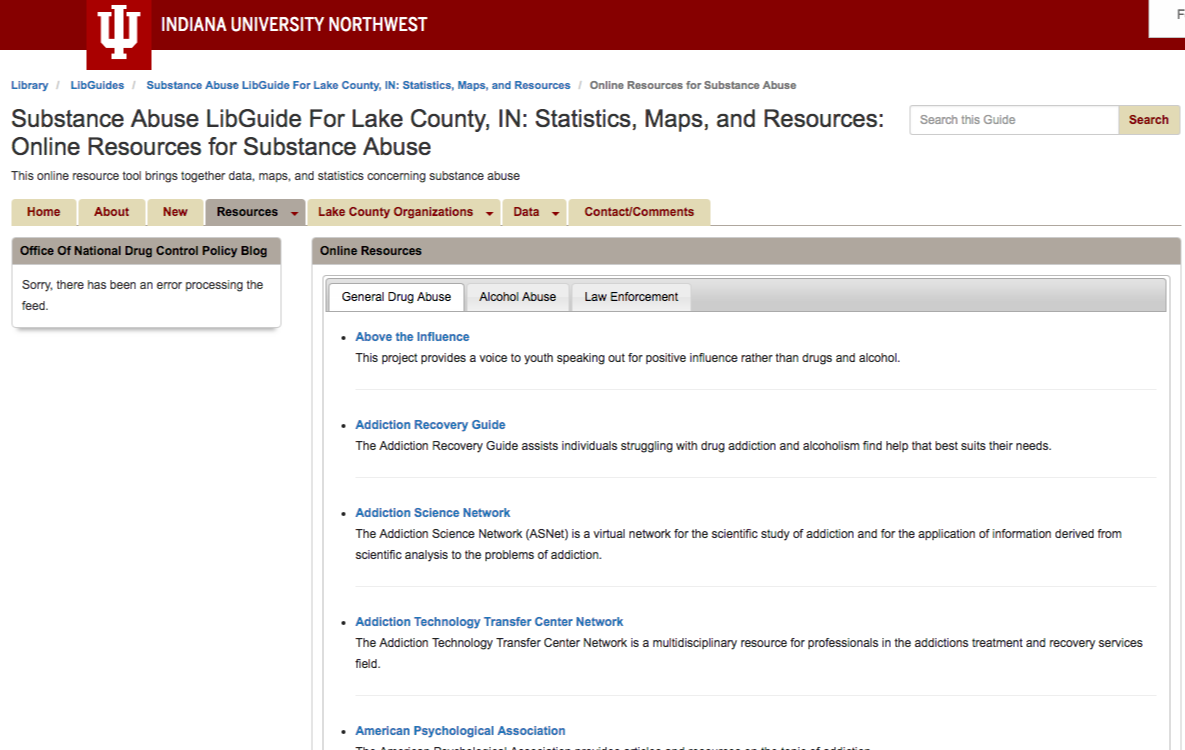

Libguides benefit students in many ways, such as:
- It allows students to focus on the relevant and sift out the less relevant.
- Visually demonstrates that there are great resources, in multiple formats, on even the most difficult topic. That reassurance builds the confidence of students needing to start their research.
You can see the other benefits of libguides to students here.
By definition and purpose, libguides are academic resource pages for students.
Since they aren't updated that much, they usually contain broken links. You can use broken link building to acquire links from these high-value pages.
Resource page link building (or content suggestion) can also work if you have a high-utility content piece worthy of being referenced by these academic pages.
How do you find these libguides?
You can do a Google search for inurl:libguide site:.edu "TOPIC" - replace the word topic with the subject of your content or website.
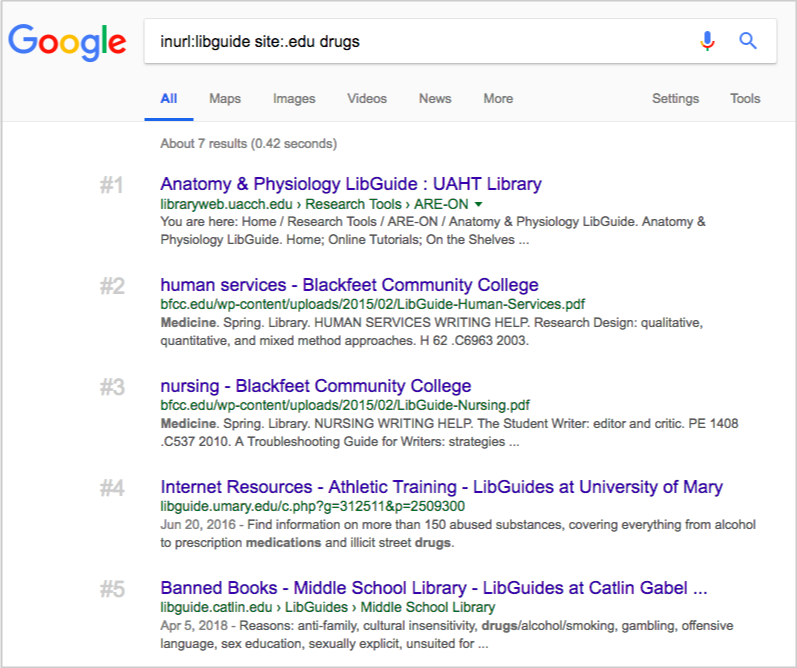

Before pitching to librarians (contact persons managing libguides) with content published on your site/client, it is best to have an idea of what sorts of content, information, and content types they prefer using as references.
Ensure you create the most comprehensive guide on the topic (or at least can match up to the resources they've already linked to). If it's necessary to improve your content, do so to increase your chances of getting links from them.
13. Save link targets of lower metrics
When prospecting for link opportunities, It's easy to overlook pages with lower metrics (i.e. <DA40), given that at the beginning of the campaign, link metrics have been set to use as a quality benchmark for all target pages/sites moving forward.
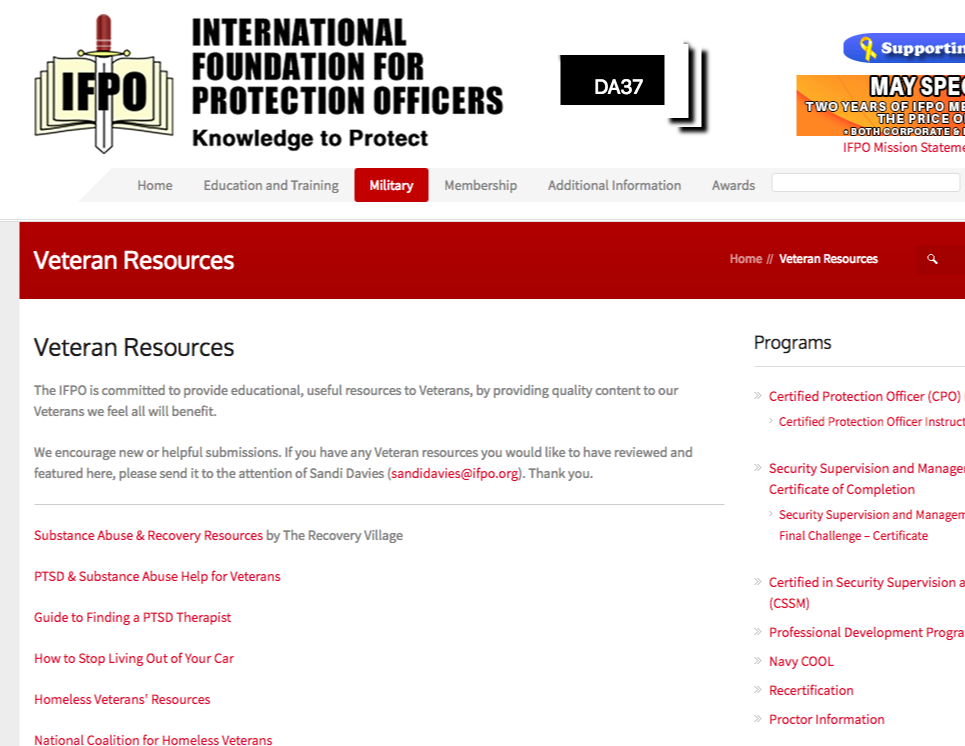

At SharpRocket, we've found that websites/blogs with lower metrics can be highly useful for future campaigns. Some less authoritative websites can increase their organic traffic and earn/build links over time, eventually improving their domain authority.
Capitalize future equities of those neglected websites by making a separate list or spreadsheet to include them.
This is an approach not to run off our link prospects, as you can return to your list repeatedly and find new ones that have improved their domain authority (or have passed to your benchmark metrics).
14. Exchange contacts with active guest bloggers
Building relationships with industry bloggers is vital not only when pitching them to become a guest contributors for their publications but also in expanding your own list of link opportunities.
One approach you can maximize in this situation is passing on your contacts with them. Share your own lists of blogs to which you have pursued content contributions.
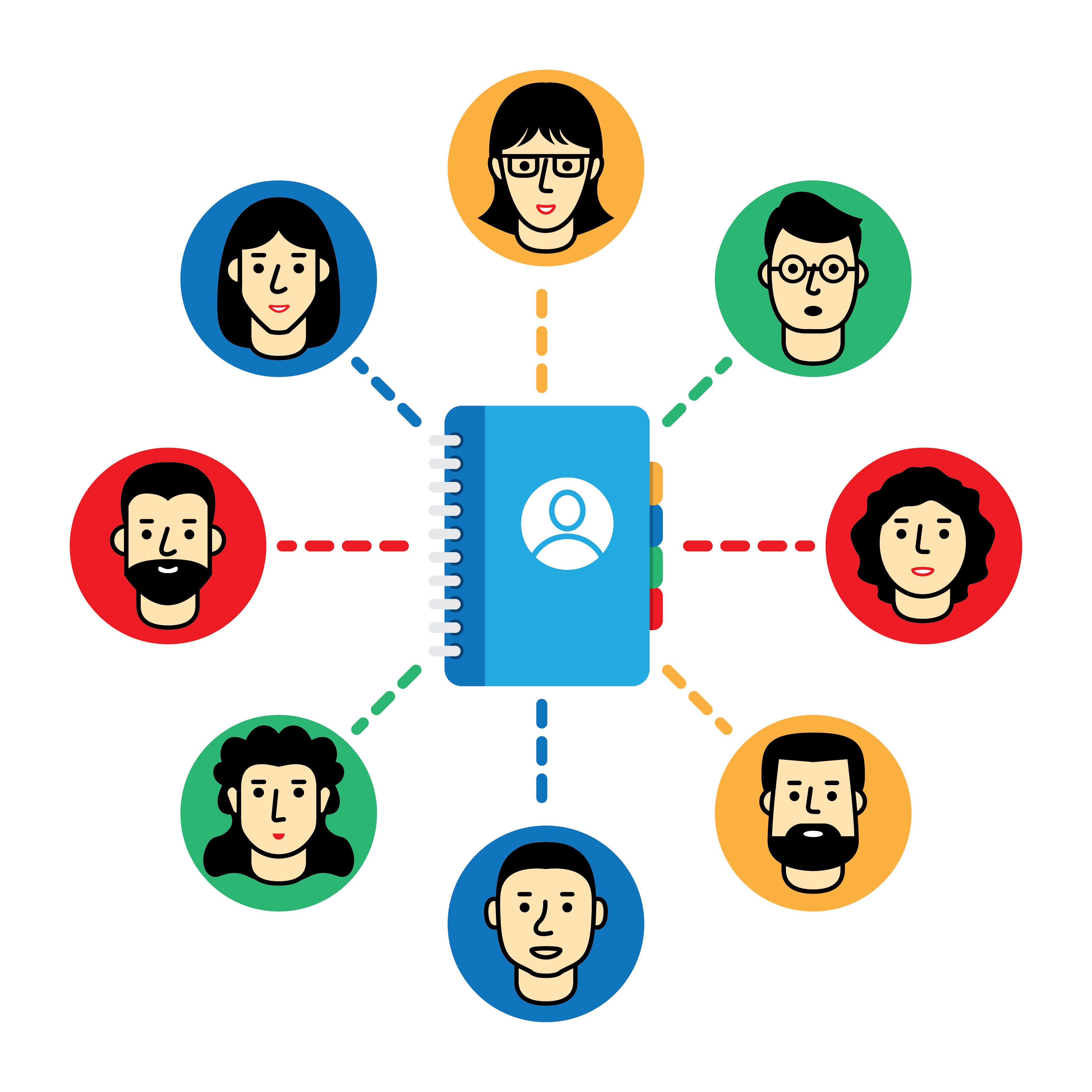

15. Reverse engineer broken pages for more link opportunities
A huge number of broken links on the web is the main backbone of broken link building.
Finding defunct links on a resource page and showing them to webmasters is one way to initiate conversations and eventually acquire links by suggesting link replacements (wherein one of the links is a link to the client's content piece).
The process ultimately starts with prospecting for relevant resource pages.
One prospecting methodology besides doing a Google search for common resource page queries - inurl:resources "topic;; inurl:links "topic" is finding other resource pages that are linking to broken links.
Start this process by finding broken URLs, which can be defunct links you've initially corrected in your first set of prospects (resource pages).
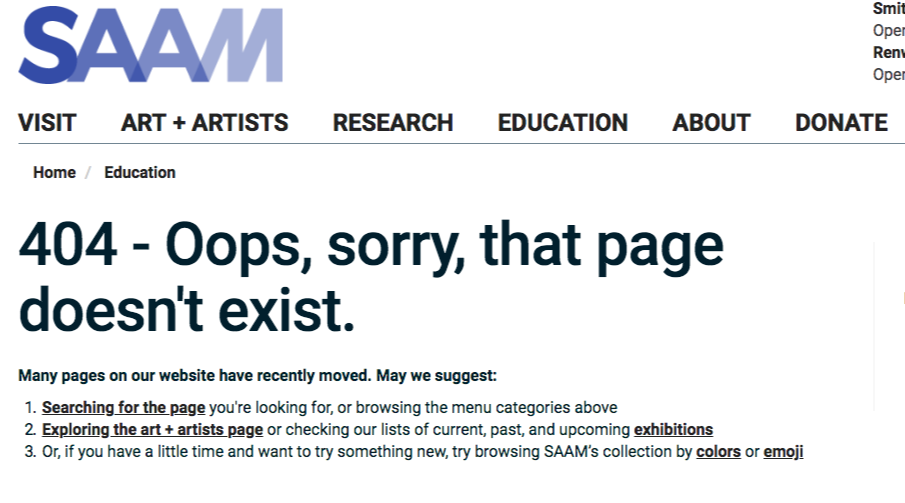



Create a spreadsheet to collect all websites linking to broken pages.
If you've found 20 broken links and have checked that around 300 pages are linking to them, your initial list has now grown to an additional 300 prospects.
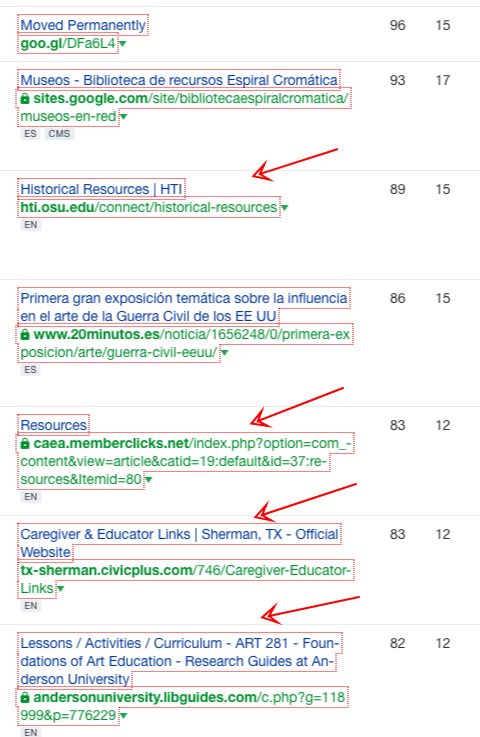

Of course, you must quality these additional link targets by relevance, authority, and obtainability.
But overall, the said link prospecting (reverse engineering) methodology gives you room for more link opportunities.
16. Create new lists for non-intended audiences
One common mistake I've seen link builders do when prospecting link opportunities, specifically for resource pages, is ignoring current pages on their tabs as soon as they quickly find that these pages do not pass certain links' standards (e.g. irrelevant to their intended audience).
This tip resembles the above prospecting principle (save prospects of lower metrics).
However, in this last prospecting tip, I'd like to highlight saving prospects of different intended audiences.
When you've landed on a page and found out that it's not relevant to your audience targeting, you ignore it and move on to your next link prospect.
What I personally see a lot of value in seeking more link opportunities (and for content generation, in general) is creating a new tab/list of other pages that don't fit my current intended audience.
For example, when I'm looking for parenting-targeted resource pages and have come across pages targeted to non-intended audiences like LGBTQ, mental health enthusiasts, persons suffering from trauma, stress, and attempting suicide - I make new lists to collect them all.
This can make it easier to find new audiences to target for future content assets.
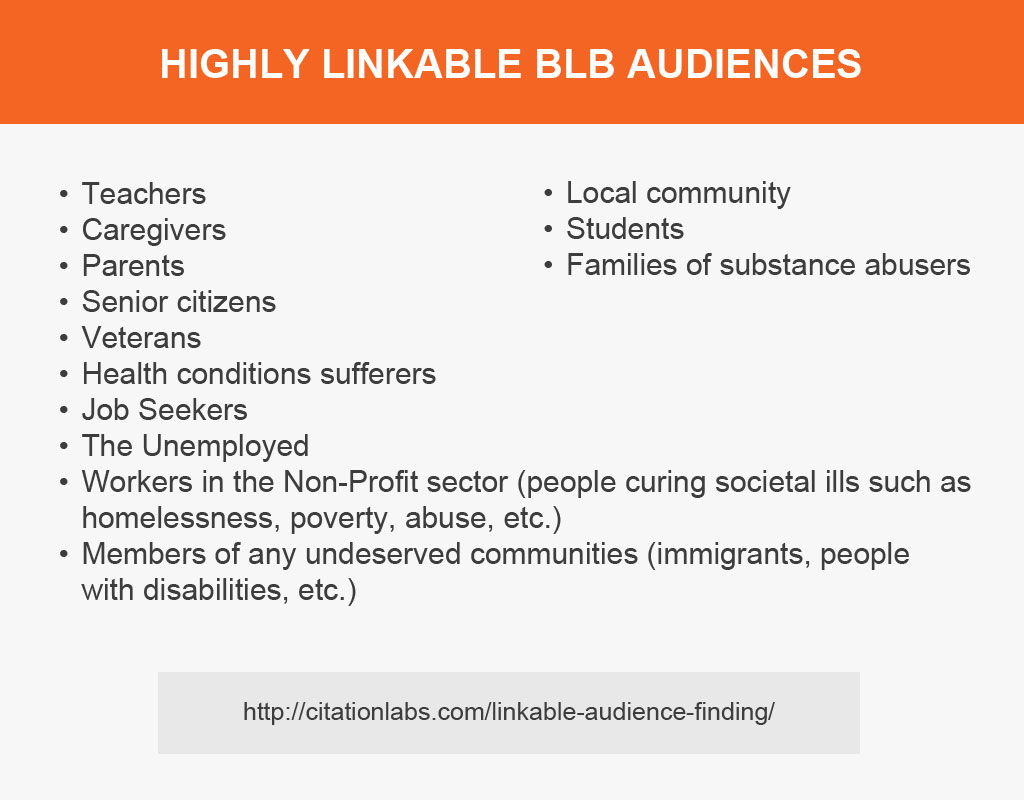

If you’re just starting in audience-first link building campaigns, you can start off with Garrett French's 601 Audience spreadsheet and basic linkable audiences as a base - and add more to it along the way.
17. Utilize the advanced search operator "links"
“Links:” search operator points out web pages that are linked to the domain you used. SERPs will, however, give you random results from their internal links and even web ranking review. That’s why we have to be selective.
HOW TO USE GOOGLE COMMAND “LINKS:”
1. Target a specific competitor link you want to use. For example, you are looking for a resource page and see erickimphotography.com as one of your competitors. Go to the Google search box and key in the search operator + the competitor's domain name.


Note: Make sure that there is no space after the colon.
2. Choose a URL in the search engine results page that you think can be a possible prospect.
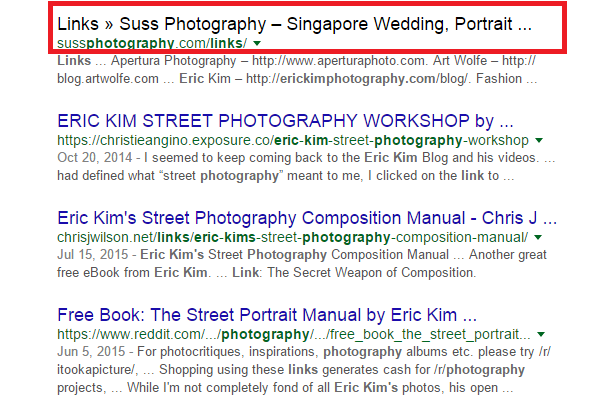

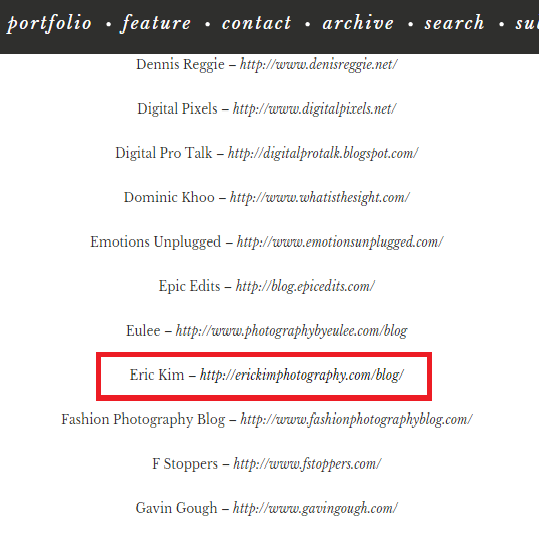

Three C's to remember in creating keywords for link prospecting
When we research, we sometimes write words based on how we formulated them in our mind and failed to simplify terms, then find ourselves easily falling into the same thinking pattern. Before we jump to the tips link builders can apply to find new niches to tap or keywords to use, below are things to consider when typing in the keywords you will use for blog research:
1. CONCISENESS
We can use short words and to the point as a substitute for lengthy words without changing their meaning.
Wordy: Newly Developed or Most Common
Concise: Trending or Popular
2. CONCRETENESS
Choose words that form a sharp and clean meaning to eliminate confusion as to what you are really looking for.
General: My first Investment
Concrete: My First Car Investment (stocks, bonds,house,equipment, bags etc)
3. CLARITY
Choose precise, concrete and familiar words.
Familiar words: coupon
Pretentious Words: statement of due interest
Advantages and Disadvantages of Using the Search Operator "links"
Pros:
- Since your competitors are already linking to those websites, there is a great chance that the site or blog post is relevant to your industry.
- Websites on the search engine results page will give you other niches to tap as you visit them.
- Usage of “links:” operator is easy and convenient, unlike when using backlink checker tools.
Cons:
- There is a chance that you can’t find a related topic connected to your industry to link from because your competitor already beat you to it.
- In checking for competitor links, you follow the blueprint instead of standing out. Being number one sometimes requires looking for other websites that are competitor-link-free!
- Not all websites linking to your competitor are based on their preference. Sometimes, a blogger links to another blogger or a company just because they know the person who owns it.
18. Unleash keyword creativity
Lateral thinking is a technique that uses an uncommon approach to solve problems or to stir up fresh ideas. Yes, being concise is one smart way to generate keywords for our research. However, in developing link building tactics, one must dare to think outside the box to come up with new niches to tap or keywords to use.


1. Who will benefit?
Ask yourself who would be interested in the products and services you or your client has to offer, then list them down. We may review the possible prospects according to their age, gender, and needs. Think of other potential customers and readers. Let’s say you’re selling skincare products, and you want to advertise these. You automatically look for beauty bloggers. Aside from the obvious people who might benefit from what you have to offer, try going beyond, like mommy blogs, health blogs, and senior blogs.
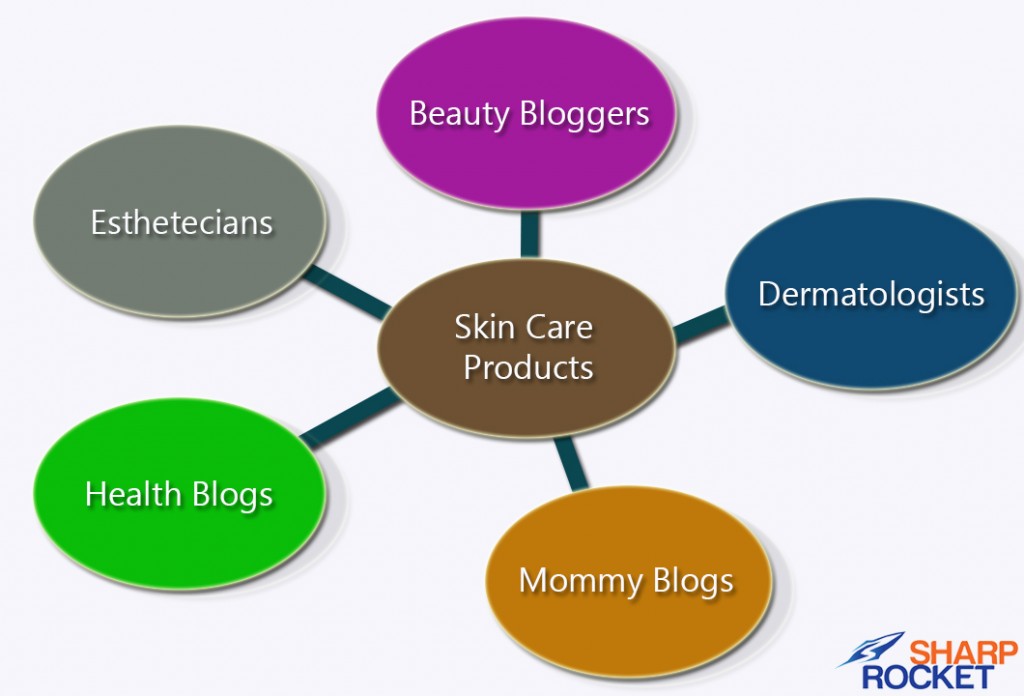

2. Who are the experts?
You may also consider people who are experts on your particular topic. In our example, we may search for dermatologists and estheticians specializing in skin care.
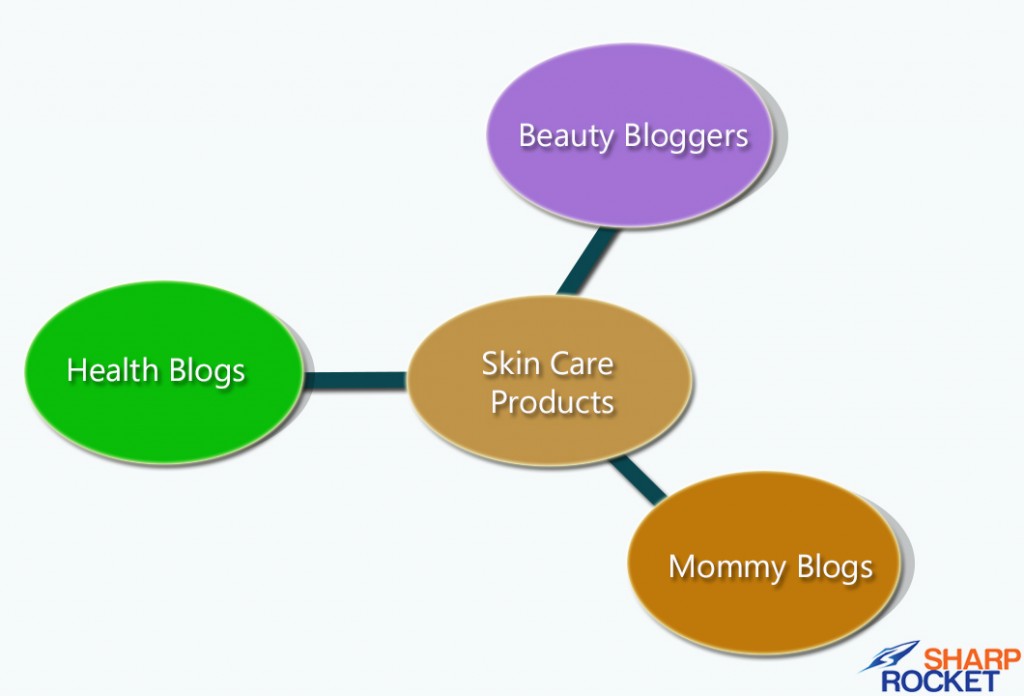

3. What are the problems encountered by a niche?
Sometimes you finally use all the tricks up your sleeve and catch yourself at a loss for thinking of new keywords to use. You can then try searching for the problems encountered by a certain niche. There are many terms or jargon associated with skin problems that only those knowledgeable in that field or those already experienced it know of.
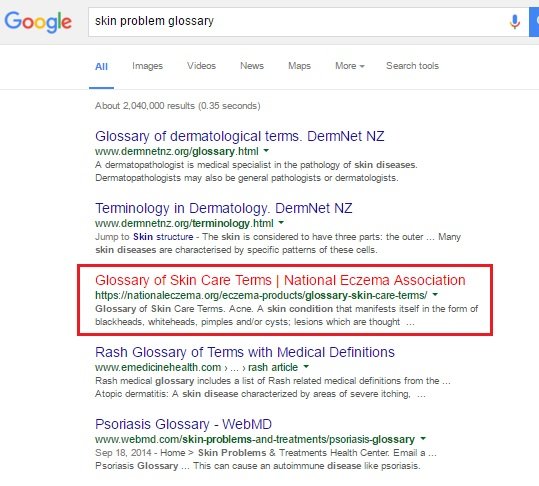

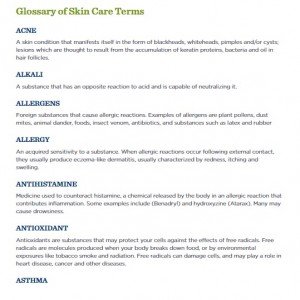

Website: https://nationaleczema.org/eczema-products/glossary-skin-care-terms/
Tools to help you come up with better keywords in link search
A. Thesaurus
The most obvious way to come up with a fresh set of keywords is by using the thesaurus. This tool was undoubtedly introduced to all of us way before we started messing around with computers. Simply put, it gives you a little index of words in groups of synonyms and related concepts.
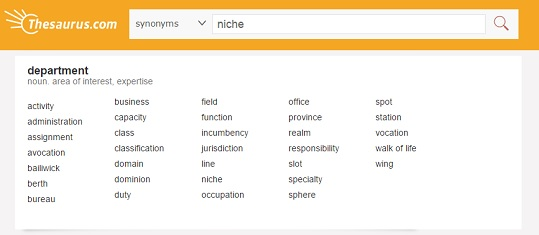

B. Industry glossary
The Glossary of Industry Terms is a comprehensive list of words and expressions used by experts or trade specialists that may be difficult for others to comprehend. When you’re targeting bloggers who write specifically about your client’s niche, the most useful thing you could do is familiarize yourself with their jargon to come up with accurate results.
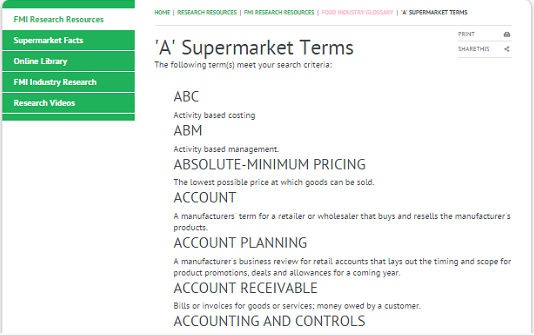

C. Blog post titles and URLs
Sometimes the greatest things in life are right in front of you. The same holds true for keyword generation. The best ones may just be under your nose. Monitor how bloggers construct their post titles and what words appear in their URLs. This might be useful when you want to target articles that tackle the same topics or have roughly the same content. Using the same keywords but coming at it from different angles might just make the biggest difference to your research.
Case in Point: Instead of just using “online shopping” as your keywords, consider a different perspective - “pros and cons of online shopping”, “advantages of online shopping”, etc.
Sample Search Queries:
- allintitle:pros and cons of online shopping
- inurl:pros-and-cons-of-online-shopping
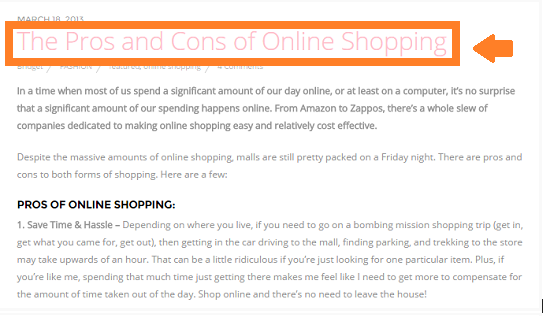

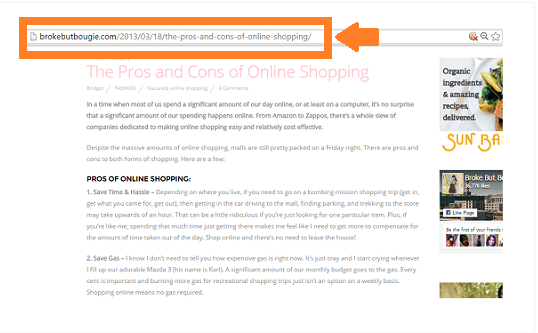

D. Wh and H Question Words
Since we’re on the subject of words, it’s also advisable to scrutinize the kind of language content writers commonly use. Some bloggers endeavor to answer the biggest questions about their niche with their posts. Incorporating the Wh (who, what, when, where, why) and H (how) question words in your queries will help you discover who those bloggers happen to be.
Getting links from these kinds of pages can be quite advantageous as many potential customers tend to look for these types of informative articles before actually making a decision. Having your product or service presented to readers immediately as a suggestion can drive valuable traffic to your website.
Example: “What can you do with a food processor?”
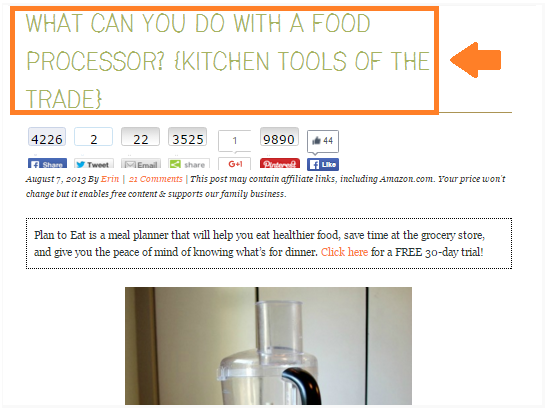

E. Be open to search suggestions
What’s easy is not necessarily wrong. For other possible keywords, simply check other Google searches related to your query. A list of phrases can be found below the Search Engine Results Page (SERP) whenever you do a Google search. Though not all of these can be helpful all the time, we stumble upon a few golden nuggets occasionally.
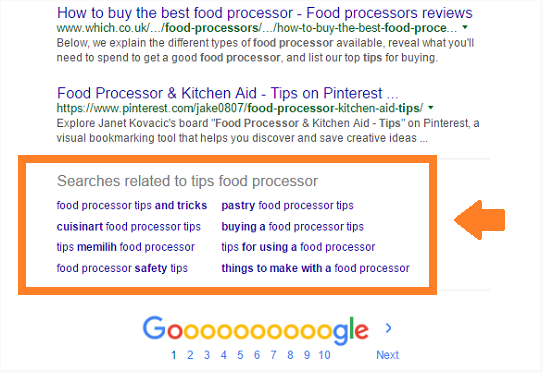

F. Think outside the box
Don’t restrict yourself to just one set of keywords. If you’ve exhausted all concepts directly related to your client’s niche, try looking at the bigger picture. Don’t always work from the outside going in. Try the opposite.
If your client specializes in leather belts, don’t get stuck on keywords like “buckles”, “straps”, and “tongues”. Instead, visualize the belt as a little island in the middle of the ocean. The ocean symbolizes what niche encompasses your client’s (e.g. fashion). Look for possibilities outside of what has been handed to you.


G. Finding opportunities in mistakes
Ever notice how people dwell on another person’s faults rather than his successes? Well, the same thinking can be used for our benefit regarding blog prospecting. Articles that focus on mistakes, misconceptions, or myths people believe about certain issues or topics may sound negative but can present real possibilities for building links.
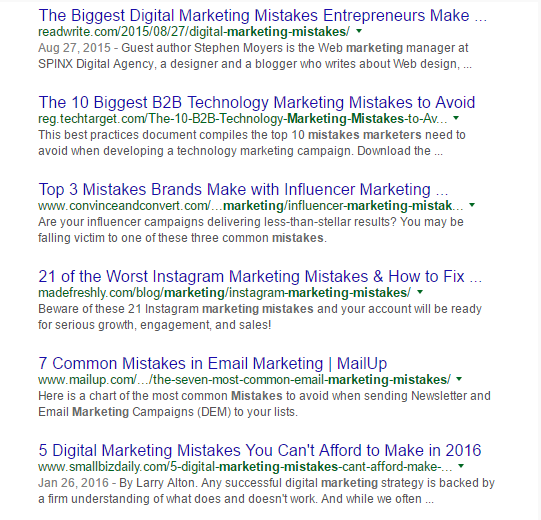

H. LSI graph / LSI keyword generator
The Latent Semantic Indexing (LSI) Keyword Generator is a tool that comes up with a list of terms and phrases related to your current keyword in seconds.
“In a nutshell, they are keywords that are semantically linked to your main keyword. In practical terms, Google has confirmed that by using more LSI keywords, your page will typically rank better.”
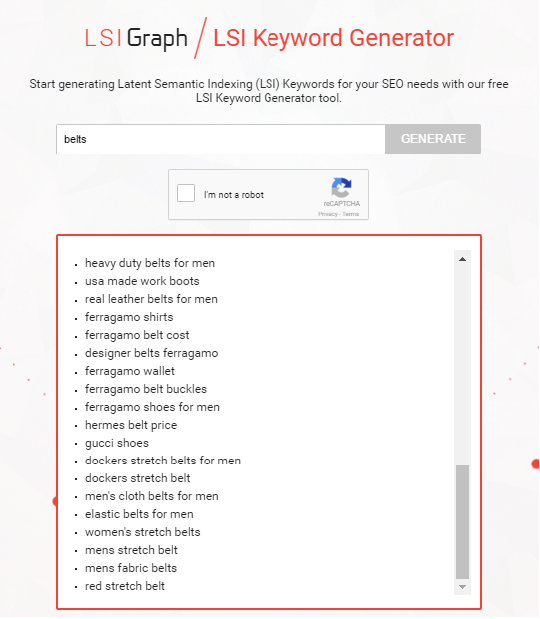

I. Keyword Planner
Keyword Planner is a Google AdWords tool that can be used by new and experienced marketers for free. According to Google itself, “Keyword Planner is like a workshop for building new Search Network campaigns or expanding existing ones. You can search for keyword and ad group ideas, get historical statistics, see how a list of keywords might perform, and even create a new keyword list by multiplying several keywords together.”
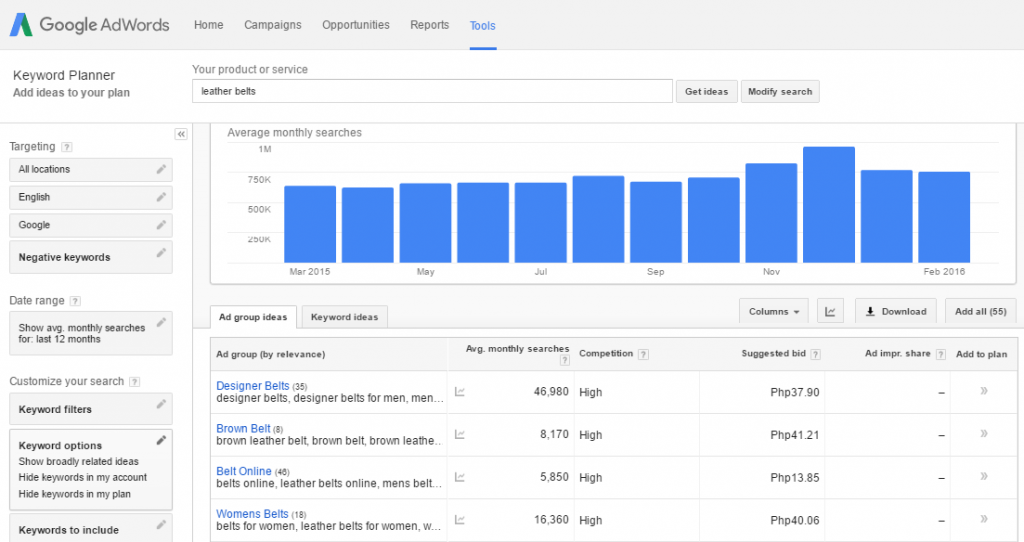

Liked this post? Subscribe to our newsletter and follow me on Twitter @venchito14.
Link Prospecting Frequently Asked Questions
What is prospecting in SEO?
SEO prospecting is crucial to acquiring clients, as it establishes a pool of potential customers, targets the right accounts, and positions an agency as a trusted advisor. Effective prospecting saves valuable time, money, and resources. Without it, your efforts may go to waste.
How do I find prospects for link building?
To find prospects for link building, a useful tool is Semrush's Link Building Tool. Simply open the tool, click "Create project," and enter your domain and project name. Although optional, naming your project helps with the organization when running multiple campaigns. Utilize this tool to identify potential prospects for effective link building strategies.
What is the link strategy?
A link strategy refers to the practice of utilizing link building techniques to improve search engine visibility. It involves building one-way hyperlinks, or backlinks, to a website. Effective strategies include content marketing, useful tool development, email outreach, broken link building, and public relations. A well-rounded link strategy can enhance a website's online presence and organic search rankings.
How to Find Who Links To Your Website
Knowing who links to your site gives you a starting point in your link building.
If your website has been around for a while, you want to know the sites interacting with you. Those are the brands that can become your company partners, future advocates, or content collaborators.
There are many ways to find who links to your site, but here is one great tool to get you started.
Table of Contents
AHREFS SITE EXPLORER
Ahrefs is by far the world's largest backlink index with a total of 15 trillion (it has more than that I guess).
Knowing that gives you the confidence of finding all the recent and finest links pointing to your site.
Ahrefs' Link Explorer gives you a wide array of information, including the exact referring page where the link is placed, potential traffic the site might bring to your site (Traffic), and the anchor text used on those links.
The good thing is you can use Ahrefs' Backlink Checker for free.


For example, if I want to know how many links are pointing to this website, www.healthysleepy.com I'll simply enter the exact URL to the checker, and click the "Check backlinks" button.


This opens up a data of information called backlink profile.
Before I go to what comprises backlink profile. let's see the numbers initially seen.
As you can see, the domain rating is 16. I sourced the exact definition of domain rating from Ahrefs , if you're not familiar with Ahrefs' Domain Rating.
Domain Rating is a proprietary Ahrefs’ metric that shows the strength of a target website’s total backlink profile (in terms of its size and quality). DR is measured on a logarithmic scale from 0 to 100, with the latter being the strongest.
There are 110 backlinks pointing to the site (answering how many links to my website?), with 97% of those being do follow backlinks.
Forty-seven (47) referring domains from 110 backlinks are 96% do-follow.
The good thing with Ahrefs is that it gives you a rundown of the numbers that you need to know in a backlink profile.
Now, let's have a look at who links to your website.
AHREFS SHOWS YOU WHO LINKS TO YOUR WEBSITE
Scroll down the page, you'll now see who links to your site.
In our given example, U.S. Pain Foundation, Alaska Ocean Observing System, Gallatin, and Kirkwall East Church are some of the brands linked to HealthySleepy.
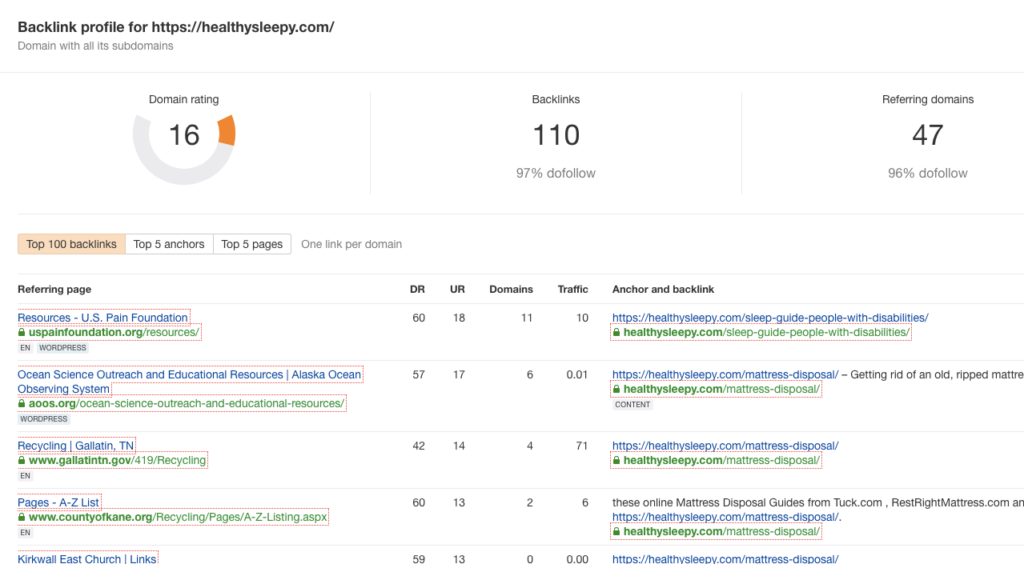

There are a lot more if you scroll down-its up to 100+ backlinks. However, Ahrefs can only show you 100 of the backlinks. If you want to see more, it will require you to subscribe to their starter package tool.
Nonetheless, it's a great free tool to know who links to your website.
WHAT TO DO WITH WHO LINKS TO YOUR WEBSITE?
Now you know who links to your site. The next question to answer is what will you do about it.
It's one thing to have a list of pages/websites linking to your brand's domain. It's another thing to do something with the list.
Here are some tips you can apply to make the most out of your list.
1. Try to understand why they linked to you
This may sound absurd. But there's a way to know the reason why the owner of the site/page linked to you in the first place.
For example, a contextual link (a link placed within the body of the content) is an indication of many things such as:
- The content publisher, blogger, or writer found one of your articles on your blog worth referencing, so he/she mentioned it and credited you with a link.
- The curator of another website listed your product in one of the recommended products on a specific category, with a link on the anchor text.
- The writer quoted one of your statements on a press article with a link pointing to your about me or your staff page in your company site.
There are many other reasons why you were able to get the link.
If the brand or website who linked to you is someone you're familiar with, it would be easier for you to know the reason for linking - either it's from a previous relationship or partnership both of you are involved in or because of the value of the content piece you've provided on your blog.
If you understand the reason why your existing linkers linked to you, you would be able to get multiple links from the same set of linkers as well as replicate the same strategy to other possible linkers in order to acquire the same type of links.
2. Start collaborating and connecting with your linkers
It's a myth in link building that all who are linked to your site differ in their needs and context. The truth is your existing linkers may have a common need and reason for linking.
If you can nurture relationships (because you probably had connections with them already), you are opening doors of more linking opportunities. These opportunities may not be always coming directly from them, others would be recommending your site/brand or any offering you had to their peers or circles of networks.
If you know the email addresses of your linkers, you can send them individual messages with thank you notes, particularly if the links you acquired are organic — meaning you didn't do anything, even a manual outreach, to get the links.
You want to have a group of serial linkers. Joshua Hardwick of Ahrefs calls them as such because these are the people who've linked to your site multiple times.
In fact, you can actually see who links to your site many times using the top linking sites in Ahrefs.
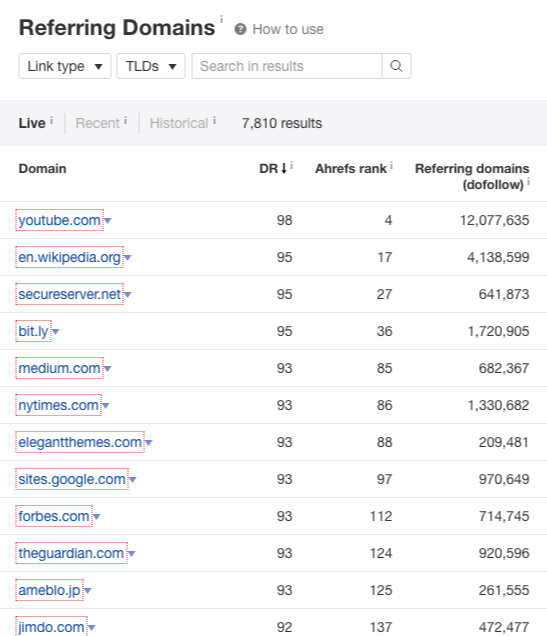
3. Brainstorm what works for your brand's content strategy
You may have published several content pieces that have gotten you enough links to track (who links to your site as we know).
Interestingly, you would discover patterns of content that work for your brand and have provided great value in your industry — which allowed you to acquire links to your site.
You want to know the type of content that works for your site because finding the pattern gives you insights into your next content marketing plan.
Enter the URL of your site and go to Ahrefs' Best Pages. This will give you a rundown of your site's top pages sorted from highest to lowest incoming referring domains.



Study the pattern of the type of content that gives you the most number of links. If you are just starting to build your own brand and haven't been involved much in link building, I recommend you do this methodology first to your competitors.
See what works for them in terms of a content type. Replicate it to your brand if it's feasible according to your brand's resources.
4. Fix broken links to your site
By tracking who links to your site and your best linkable pages, you may find a few or a couple of your pages to be broken (404).
If those pages have links pointing to them, they're a must to be reclaimed.
Otherwise, your previous efforts to build links to those pages may be forfeited somehow and you don't want those links to be missed.
What you need to do is to identify your site's broken pages. Filter your best pages by incoming links to only give you 404/broken pages.
Check each page and decide what options best work for it.
Either you redirect the dead page to a more relevant functional page or ask linkers to link to another working page relevant to the dead page.
There's no best option. It depends upon the situation. The first option is easy as it is something you can control; the second one might require you to send emails to all linkers. Take note that you won't be sure of the response time and modification of your linkers if you choose the second option.
WHO LINKS TO MY SITE IS THE INITIAL TOUCHPOINT
Having the list of pages linking to your overall site or to only one page is the first initiative. The next step is to understand why they've linked to you in the first place — in order to replicate the same approach to your next set of actions or do the same thing to your other sites.
Feel free to comment below if you have any recommendations on what to do with the list of pages that have linked to the site.
15 Insanely Actionable Tips to Increase Blog Traffic
Traffic is the lifeblood of every website because this is where most business owners and bloggers depend their monthly online sales.
Since the more traffic you can generate on a regular basis, the likelihood of earning more profit is higher.
This is why there are tons of articles that brought up this topic – traffic generation - for the past several years and I’m constantly been seeing posts every week - where some of them are just duplicates of ideas shared on other blogs.
In this post, I’ll be sharing 15 effective strategies that will help you increase your blog traffic.
1. Earn non-paid social traffic from influencers
Nudging influencers to read your post and get them shared on social won’t be too easy if there is no initial analysis on the viral potential of your topic.
Most of the time, influencers don’t just share posts because they have resonated with the quality of the content. Instead, they saw their colleagues (fellow influencers) sharing one article on social platforms.
With that, you have to consider the number of influencers who have shared trending articles on social – as a determining factor of choosing that same topic for your next blog post.
For instance, if you are looking for trending finance articles in Buzzsumo, you will end up finding this post as the top content for the keyword – finance.
[entrepreneur-financial-decisions]
You should get away with that gigantic number of social shares, simply because authority blogs like Entrepreneur.com always have thousands of social shares for each of their articles regardless of the quality of the content produced.
Instead, use another tool - Topsy to determine the number of influencers who’ve shared that post.
Use the same process for all ranking posts in Buzzsumo and consider that data (post –shared by # of influencers) to decide which topics/themes you’ll use for your next content (obviously, you’ll choose ones with the highest number of shares from influencers).
2. Build links from third party listings with high business value
Reviews from third-party sites always impact the business in terms of branding, value, vote of confidence and potential generation of leads.
For the past few months, my business has been acquiring several potential clients from a single referring web-based product site. And the most surprising part is that those 2 referring threads in one same website generated $14,000 worth of services to my business (one client – minimum of $500 conversion).
This strategy is not solely applicable to internet marketing related industries, but for any type of niche, you’ll see tens even hundreds of websites that can bring potential industry customers/clients to your business.
If you’re existing for years, then go to your Google Analytics account and list down in a spreadsheet all referring sites/pages that brought conversion value to your company (make sure you’ve setup your conversion goals correctly).
If you’re new in the industry, find domains that have high referring potentials using Google search (inurl:forum “very specific industry” – for dental clinics, you can use inurl:forum OR “business listing” “teeth).
Nudge your existing customers (with high votes of confidence to your products/services) to business listings and let them write reviews about your offerings.
3. Pull up unexpected hooks in your content
If you’ve heard psychological triggers (which are clearly explained by Brian Dean in his recent post), utility is one of the topmost considerations when writing a post, primarily because practical tips (how to’s) are very easy to learn and apply. In turn, readers would instantly share it to their peers once they’ve found it useful.
One way to strengthen utility in your post is to pull up unexpected hooks in your content.
Unexpected hooks are basically tips that are very unique in information that almost surpass the quality of other tips listed in the content. So when you pull these tips up in your page, readers can easily notice them and they’ll be triggered to share the post after reading it (“aha” or “wow” moments).
Below are some examples of tips that I pulled up in my previous blog posts since I’ve found them very unique in nature and could actually nudge readers to share or even link to them from their future content pieces.
4. Create non-branded Facebook pages
I’ve found this effective traffic generation strategy on my friend’s post which is basically creating Facebook pages that are not entitled with company names/services/products but instead labeled with simple non-commercial words/themes.
As you can see, below is an example of a Facebook page (Italy) that are not branded with a company name (except for the profile picture)
When you use Facebook OpenGraph and search for the keyword, “Italy”, you’ll see the page ranking in the search result.
The Italy page now has 66,000+ Facebook likes and will consistently earn new likes each week probably because of its ranking position and affinity potential of fans who’d have shared the page on their accounts (multiplier effect).
Creating a non-branded page for your company targeting a specific industry would greatly impact your site’s social traffic every single month, since the more users finding your page through amplification/sharing and search, the more traffic you’ll be generating through simple act of sharing your new content assets.
5. Prioritize retention for low cost Facebook advertising
With Facebook advertising, the more targeted your ads are, the higher returns you’ll get from it.
My friend, Roel Manarang personally shared a very interesting case study on how a $1-$3 USD per day spent on Facebook advertising can help generate 540 email subscribers for the website and 8000 USD more sales for the business (an increase of 40%).
The strategy is primarily focused on retention – those visitors/users who’ve engaged on the website through reading, subscribing and/or sharing posts on social platforms.
Instead of targeting new users that have low potentials of converting to a brand advocate/avid reader, the ads are targeted to already engaged users. This helps the campaign to become more effective since it actually triggers fans to become sharers of content and avid readers of the blog.
Two things that Roel is focusing on in his Facebook advertising campaign:
- Facebook Page Likes – Remarketing, $1-$2 USD per day (targeting people who visited the website).
- Facebook Engagement – Sponsored Story, $1USD (targeting people who already like the page or existing fans).
Try out this strategy for your blog and let me know in the comments section how effective it is in driving website visits/traffic, social followers and email subscribers.
Other useful resources:
6. Build an alliance for initial boost of traffic
Community sites such as Inbound.org have upvote systems that encourage people to engage simply by clicking up and down buttons on posts that had been shared.
Most of these sites consider the recency of sharing one specific post and # of votes given within hours after sharing, which boils down to one principle – the faster your post receive the highest number of votes, the easier it will rank in the list.
Having an initial set of votes to your post could trigger the system to rank it and in turn, bring significant amount of traffic to your page.
One strategy that you can use is building an alliance of engaged users within a specific community site – this will take a lot of effort in exchange for a consistent traffic generation.
I had an alliance with a few Inbound users that always upvote my posts when they were shared on Inbound.
This activity gives early boost of rankings to my posts and eventually helps my page earn its early referral traffic.
Every month, my site gets around 800 to 1500 from Inbound.org, which is a very good investment for a 5 minute traffic generation technique.
7. Use freely advertised pages for linker outreach
The value of outreach is becoming more saturated these days as more link developers/content marketers use it for one side benefit – sharing one content asset to a potential linker with the aim of acquiring a single link from the site’s resource/business listing page.
This often times result to lower responses and number of links from other relevant blogs/sites.
The most effective way to add value for both ends is to initiate creating content designed for other company pages or corporate sites.
To give you an example, we had a client who owns a tour deals website (travel niche), where its pages are mainly attractions and tours and have had lots of deals/discounts to give away to visitors.
Instead of reaching out to potential linkers and requesting for contextual links in their resource pages and business listings, we’ve decided to take a different proposition for outreach – prioritize hotel websites that have freely advertise pages published on the site.
Since we’ve given value first – creating a promotional page for them, there is a high likelihood that they’ll be returning the value – backlink.
8. Facebook comments on posts using branded pages
Facebook engagement is a no-brainer strategy to brand yourself in your target community.
However, most Facebook interactions still lack in one technique – using branded pages when commenting on other relevant pages.
This might not only add potential likes to your Facebook page but in turn, attract visitors/readers to your website as you can reference your post/page when interacting on relevant questions/discussions.
9. Post relevant Tweet quotes
Quotes are short and valuable easy-to-apply tips that can be spread widely in the social community.
With proper branding, posting quotes on Twitter would be an effective way to drive visitors to your target page (homepage or email capturing page).
Roel Manarang has been consistently posting Twitter quotes for the past several months, which are all relevant to his target community (marketing, startup and entrepreneurship).
As a result, his personal blog is attracting social signals as referral visits from social (Twitter).
10. Use email guessing to improve conversion rate
One barrier that gets outreach less and less effective for some brands is the improper guessing of personal/corporate emails of potential linkers.
Emails get stuck to wrong places when email addresses don’t fit to the right people – which will often result to lower responses and conversions (links).
One proper solution for this problem is the use of email guessing tools such as Thrust and VoilaNorbert.
Simply put the person’s name and his/her domain name then click the green button to trigger the system to find appropriate email addresses for you. Back it up with Rapportive to confirm the right address.
11. Weigh opportunities with LinkMiner
LinkMiner is the newest chrome extension tool developed by Jon Cooper of PointblankSEO and has the following powerful features:
- Check header response codes of pages faster than Check My Links
- Quickly see metrics of a specific page (e.g. you’ll see the # of referring domains for a 404 page).
- Export external links in a page with corresponding metrics, which are very useful in identifying which broken page has the highest number of referring domains.
Weighing link opportunities is one of the best things you can do with LinkMiner.
After exporting the list of external links, you can now sort them by highest to lowest referring domains to find broken pages that have high potential link sources.
This will validate your content as you can secure beforehand an approximate number of links you’ll earn from a broken link building approach.
12. Try out 30-day blogging challenge
There has been a trending strategy in the blogosphere nowadays – 30 day blogging challenge.
As the phrase implies, the blog will have to publish new blog post every single day for 30 days.
You have to test out the strategy throughout the month and analyze the results at the end of it – in terms of traffic, email subscribers and/or social signals.
This strategy would be possible for your blog by following these actionable tips:
- Create an editorial calendar to confirm available resources and ensure consistency throughout the campaign.
- Set goals for the whole campaign to motivate yourself and other blog writers (if you have multiple contributors) to provide the best quality of information in each and every article they publish (goals could be percentage of traffic increase and/or increase in email subscribers).
- Ask other guest bloggers from relevant websites to write for your blog. Make sure you emphasize some incentives in order to sustain the quality of each blog post (incentives like brand exposure, getting exclusive access to premium products/services, additional email subscribers, direct lead generation, etc..).
- Test other content formats to cope up with blogging frequency (i.e. videos and podcasts/audios).
Test out this strategy for your blog and see how it can gradually impact your blog traffic.
13. Reference older posts from industry engagements
Industry engagements are good branding strategy for newly established blogs especially if the engaged website has thousands of users that can potentially be targeted for sales.
Referencing older posts from community discussions/threads is one of the common techniques to engage yourself with other community users and eventually brand yourself as someone who’s adding enough value to every relevant discussion – a good noticeable element to attract followers from other sites.
With content referencing, the best way to engage is not just to include a link in one discussion but become like someone who’re also looking for answer to his question.
An inclusion of link with proper description of the resource/page is enough to drive clicks to your page and constantly bring new referencing visitors to your site when the discussion pikes up its trending potential.
14. Traffic-heavy guest blogging
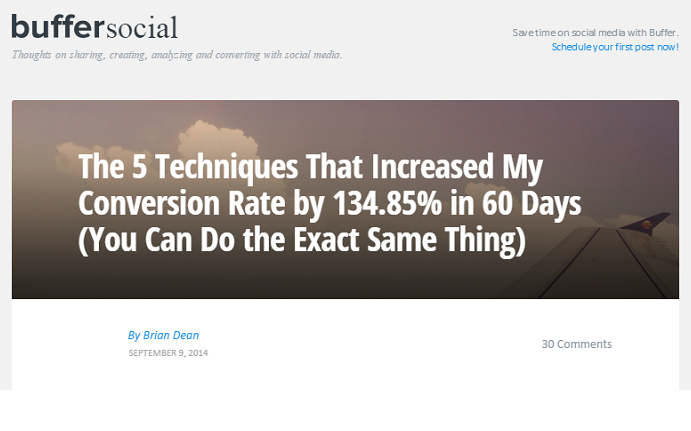

But one thing that lacks in almost all these articles is the idea of clicks.
Guest blogging is an effective branding strategy (as you all know) but it’s also a great traffic generation tool for blogs that don’t have much exposure in the industry, considering that quality information produced in guest posts would trigger its current visitors to follow the contributor’s blog – which should be main reason why you do guest blogging.
Let’s take Brian Dean’s guest post as a good example of this strategy.
There are many key strategies we can absorb from his guest blogging strategy, and here are some of them:
- Providing real life examples is better than just writing practical tips since these examples can easily nudge readers to apply the tips to their own daily activities because of the idea of proofs.
- Special bonus section could increase potentials of absorbing potential email subscribers from the blog – it’s a direct lead generation approach after the readers consume the post.
- Long form content triggers more active social sharing and amplification (distributing of one’s content from one platform to another).
Invest in creating at least one solid guest post every month with unexpected hooks pulled up in the post and see the results for yourself.
15. Create long tail data-based content
For most content marketers, creating a content packed up with data and credible sources is an expensive activity, since it will mostly require money to gather this information.
As more and more authority blogs are publishing expertly-made content, sourcing references for data-based content is now possible.
With Builtvisible’s Content Strategy Helper, this becomes more doable and can be used in any of the following methods:
- Consolidate trending topics from UK & US social networks, news sites and government data sources into one spreadsheet and validate topics that will best gain interest for your website.
- Create a list of bloggers/editors/influencers that are associated to specific search queries. This would initially give you opportunities for potential outreach/press coverage.
- Add credible references to your content in order to increase its credibility for readers/consumers.
Other useful resources you can check out:
- The Content Marketer’s Guide to Google Consumer Surveys
- Generate better content ideas
- 24 Untapped Ways to Get Ideas For Your Next Blog Post
If you are looking for a link building agency to partner with you, then don't hesitate to contact us today.
How to Get Articles Published in Major Publications
There are two ways to build your brand through content marketing:
Start producing 10x content on your blog or get your articles published in other websites' publications.
In this post, we cover the latter.
In this article, you’ll learn how to get articles published in major publications in four steps:
- Start building your writing portfolio
- Choose publications to write for
- Pitch yourself to become a contributor
- Write content for their audience
How to Get Articles Published in Major Publications
This process isn't a sure-fire formula to success, but it will give you chances to land on big publications.
Let's start this simple process.
1. Start building your writing portfolio
Big publications will either invite you to write for them (that depends on your authority and expertise built on the subject) or become a contributor by pitching yourself.
I vouch for the latter because that's something you can control.
However, you can't pitch yourself to write for a publication without any samples of your writing.
Accepting opportunities is easier when your prospects know the quality of your content.
Also, having your editorial links link to your blog's main content from your guest posts would be efficient — if you have content assets ready on your blog.
So, start writing for your blog. Make it as 10x content as possible. Always think of its intended purpose of using it as your portfolio when pitching other publications.
10x content creation involves having experts or industry practitioners write for your blog. That said, if you haven't had one available in your team, you may have opted for this option:
Hire domain experts to write for your blog or other blogs.


An article about health written by a freelance writer is different from an article crafted by someone who has 10 years of experience in the medical field.
The latter content comes from first-hand experience. The article includes examples, tests, own versions of examples, and other things that will make it easy to convince readers to finish the content. The web piece adds tremendous value to the readers.
The cost of hiring a domain expert who can write for you depends on their expertise, their vertical, length of content, and other content factors. In our experience, it can start at $100 going up to $2500 per content piece, even higher for the highly technical fields.
It is best to consider the expert's writing portfolio, not only his or her writing capability.
If he has written multiple articles for different niche publications, hiring him as a domain freelance content creator for your target blogs would be worth hundreds of dollars.
Now, that's how you start to build your writing portfolio.
2. Choose publications to write for
You can't choose to write to all the publications in your industry.
Being selective is necessary so that you can build momentum over time.
What are the things you have to consider?
Check publications' target audiences
Choose publications that match your target audience.
This is a no-brainer, yet many brands fail to identify their audiences and aggressively pitch publications immediately.
Even if you land an opportunity for an authority blog, the odds of returning their audience to your site decrease.
So start knowing who you want to write for.
In cases when you're in a very specific niche, there may be limited publications to get your articles published.
Not all industries have many writers, publishers, and content creators. Some have a high demand for publications — mommy, local, etc. Some verticals have just a handful of publications to pitch to.
One recommended option is for you to target shoulder niches.
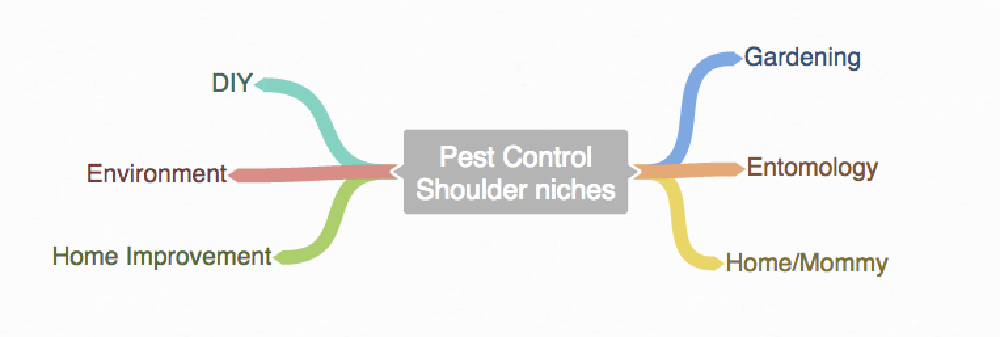

Shoulder niches are a basic idea of Brian Dean wherein you find niches that you can tap into for a guest blogging opportunity.
Check publications estimated organic traffic
If your intended purpose is to write for other niche major publications, you want to ensure you get the most value from it — basing it on the website's ability to drive readers to your brand.
Use Ahrefs, or SEMRush to check the publication's estimated organic traffic.
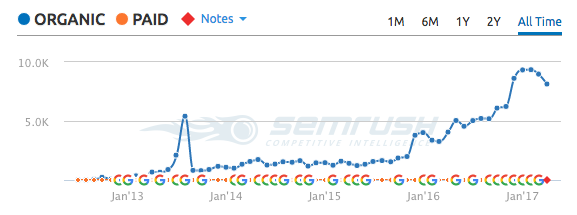

Majestic offers the ability to discover the exact category of the website. This will help you assess whether it fits your brand well.


Check publications engagement
This is an additional factor you can consider. Given that not all blogs or publications have high community engagement, where people post their own insights through the comment sections, it is still a good metric for assessing major publications to get your articles published.
Check publications requirements for contributors
Every publication has different requirements for its contributors — whether you wish to submit a one-time off article or become a regular contributor.
You have to know this because even before you send an outreach email to the publisher, you can gauge your chances of placing an opportunity.
Are they looking for industry practitioners who have had several articles written already? What topics of expertise are they looking for?
Even the minimum number of words required for each article will help you estimate your cost budget if you wish to hire domain experts to work with you.
All these things can be seen in the contributor pages of a publication. So check that first before you pitch them.
3. Pitch yourself to become a contributor
The pitching process is challenging to get your articles published in publications.
The reason is very simple: if you can't prove to yourself you're worth a try to contribute an article, you miss the opportunity.
That’s not to say you can't pitch again, but by doing it once, you should give your best try as much as possible.
Since publications receive tens or hundreds of guest blogging pitches daily, they already have ways to figure out which ones are worth a response. Some publications require an exact phrase to include in the subject line of an outreach email — this filter out any mediocre outreach emails.
On value proposition and personalization
Always do your research about the publication. Know the publication's needs regarding content and topics they care about.
You can't hit and miss every time.
Begin thinking of value proposition by providing better topics when doing outreach for guest blogging. You can find any content gaps in the industry that you (your team or your domain writers) can create content. You can check out my detailed entire process of content gap analysis.
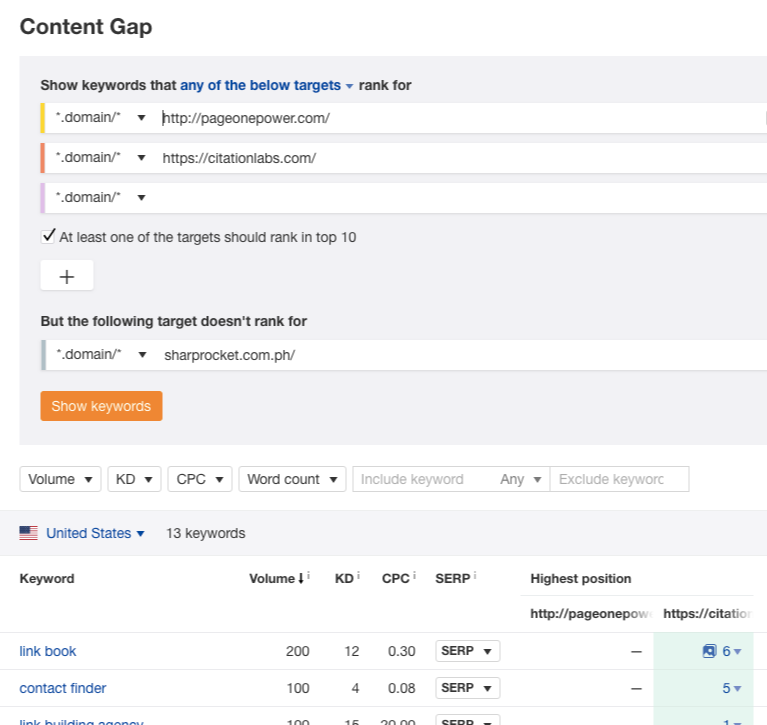

Be highly targeted when pitching. Doing so may take a couple of minutes, but it would be worth your effort if you land one or two in your initial campaign.
Based on Pitchbox email outreach study, personalization for subject lines can boost the response rate of emails by 30.5%, while personalizing the body of email content can have a 32.7% better response rate than those emails without any personalized messages.
Remember, to get better outreach placement rates, start offering a ton of value to whom you're pitching.
Use domain outreach persons to scale outreach campaigns
Remember hiring domain experts to write for your blog or other publications?
It's also the same process you can take when scaling outreach campaigns. But this time, for setting up an effective outreach campaign.
Consider creating your own outreach persona with multiple effects for niche-related clients/ brands. Specifically, you can tap into that outreach person for every relevant client, as this has enough writing credibility to get into someone's publication.
Test pitching to assistant editors and support functions of publishing teams
One tip for increasing response rates is to look for emails of assistant editors of the publication, not just emails of main writers, authors, or publishers.
The reason is that assistant editor normally have the function of filtering emails referring to any publication matters. They know which and which is for publication. Therefore, those people are more responsive to emails about content contributions.
4. Write content for their audience
Once the publisher approves your topics, it's time to write the content.
Overall, the content you should be writing depends on the terms, agreements, and requirements of the editor.
Content assets that are customized, experiential, and expertise-driven can get articles submitted to major publications.
Doing so requires some inspiration.
One tip is to list websites to inspire and help you generate content ideas, format, and style for your industry.
Create your own public or private Twitter list of websites generating the best content in your industry.
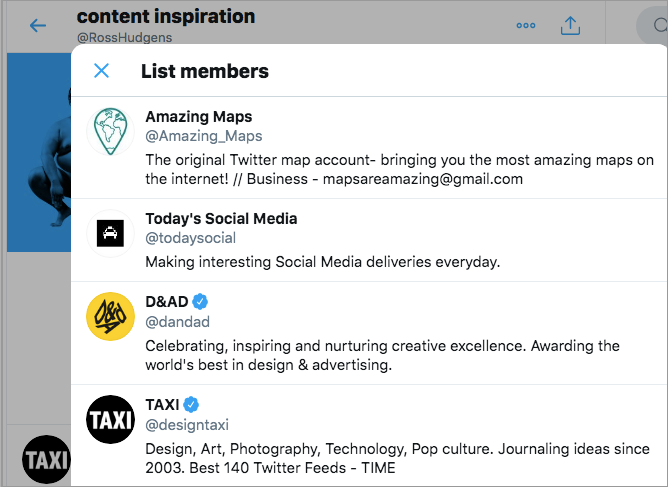
Other Ways to Get Your Articles Published on Publications
Besides pitching to become a contributor for major publications, you can apply other methods to get the same exposure on those sites.
HARO
You can check out my extensive guide on using HARO effectively. It is a solid tool for anyone seeking free opportunities (mentions and links) on relevant content publishing websites.



Interviews / Round-ups
Link roundups aren't dead. It's such that most of the roundups published in many industries aren't generating engagement from readers as they used to.
One of the primary reasons is the sub-par quality content creators make when curating answers from experts and influencers in their industries. A few examples are:
- One generic question was thrown at, so the likelihood of the interviewees' answers' similarities will be higher. Without it being curated well, there is high friction of less engagement to consume the entire blog post.
- Topics chosen have been generated multiple times (e.g. SEO tips, link building tips, real estate tips, success tips to __, etc..). The content length is at a maximum level, yet repeated topics won't satisfy the readers anymore.
Start looking for roundups that offer great value to your intended audience. HARO now has opportunities for round-up-style contributions. Assess the quality of the possible roundup content, the type of questions, and what types of blogs they'll be published.
Here is an example of a good link roundup: What 15 CEOs Learned Building Top Agencies by ConverxionXL
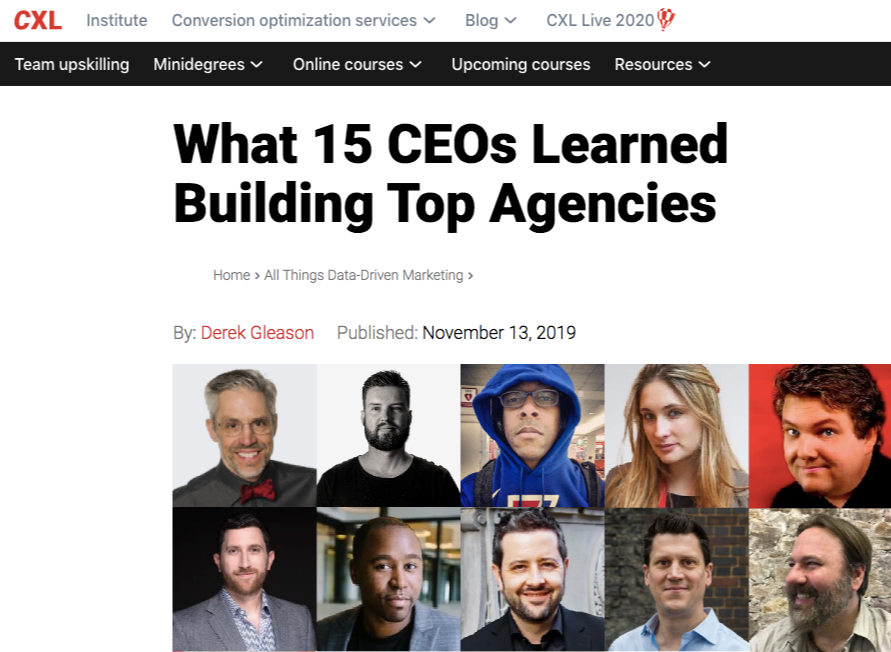

Why did it work?
- Questions were categorized based on the desired flow of the topic (from individual contributor to agency owner, landing that first big client, scaling people, processes, and financial acumen, and marketing an agency that's lived off referrals).
- Written appropriately in story form with the flow with coherence and consistency on the subject
Further Resources:
Getting Your Articles Published in Major Publications Takes Time
If you are starting to build your brand, start penetrating mid-tier publications. Then embrace higher opportunities once you have a good writing portfolio.
Success in content marketing takes time. It involves a process to eventually reap the benefits of additional branding opportunities, backlinks, and assisted sales.
How to Get Your Articles Published Frequently Asked Questions
How much does it cost to publish an article?
The average cost to publish an article ranges between $100 and $2,500 based on the revenue generated and the total number of published articles.
Is it hard to get articles published?
Yes, it can be challenging to get articles published. Whether you're a full-time freelancer or an aspiring writer, publishing can be demanding. It requires not just a compelling story and unique writing style but also persistence and perseverance to overcome the obstacles that come with it.
How do I publish my first article?
To publish your first article, follow these 7 tips: choose the right journal, read the submission guidelines, structure your paper properly, write a compelling abstract, thoroughly revise and proofread your work, address reviewer comments effectively, and be persistent. By following these steps, you can increase your chances of publishing your first paper in a journal.
Where can I publish articles for free?
To publish articles for free, you can explore platforms like Medium, a popular site for sharing your writing, or consider utilizing Linkedin Articles if you're already on the platform. Other options include Publish PDF, Scoop.It, Issuu, Yudo, Article Alley, and PUB HTML5. These platforms provide opportunities to showcase your work without any cost.
What is the AIDA Model? Examples and Templates For Email Outreach
Email outreach is the process of contacting potential customers or partners via email to promote your product or service. The goal of email outreach is to build relationships and generate new business opportunities. To be successful, email outreach must be targeted, personalized and relevant. The recipient must feel that the email is valuable and worth their time.
A great way to achieve this is to use the AIDA model when crafting your email outreach strategy. AIDA stands for Attention, Interest, Desire and Action. By following this model, you can create emails that are more likely to capture the attention of your target recipients and prompt them to take action.
What is AIDA Model?
American Advertiser Elias St. Elmo Lewis is the one who created the AIDA funnel back in 1898. This funnel provided great help to salespeople in guiding their customers when it comes to the process of purchasing. Currently, the AIDA model is widely used in guiding customers throughout the decision-making process when purchasing something. What really is AIDA?
The AIDA model is a well-known framework for designing marketing and advertising campaigns. It stands for Attention, Interest, Desire, and Action. The idea is to first grab the attention of your target audience, and then create interest in what you're offering, followed by a desire for the product or service. Finally, you need to motivate them to take action, such as making a purchase.
There are many different ways to apply the AIDA model to email outreach campaigns. For example, you could start by offering a discount or freebie in the subject line to get attention. Then, in the body of the email, you could provide more information about the product or service and why it's valuable. You could also include a call-to-action (CTA) urging recipients to take advantage of the offer before it expires.
The AIDA model is just one tool that can be used to improve email outreach campaigns. However, it's a powerful one that can help you increase open rates, click-through rates, and conversions.
If you are looking to improve your email outreach campaigns, the AIDA model can help you to create more effective and compelling email copy. The AIDA model can help you to understand how each element of the campaign works together so that you can create more engaging email campaigns that are more likely to result in a purchase.
Additionally, the AIDA model can help you to identify areas where your email campaigns could be improved, allowing you to make necessary changes to improve your results. By understanding how the AIDA model works, you can create more engaging email campaigns that are more likely to result in a purchase.
If you are looking for an overview of how the AIDA model works, or if you need help creating effective and compelling email copy, then check out our blog post on how to use the AIDA copywriting model in email outreach.
Why Is AIDA Important?
Numerous brands use AIDA because it helps determine how they ought to distribute their messages to their clients and prospective clients. Marketing messages are very important in targeting a specific audience.
1. Better Understanding Of Your Email's Interaction With Your Recipients
AIDA provides a better understanding of how your email is being read and interacted with, both by you and your recipients. The model helps you to see how each element of your email contributes to the overall goal of the campaign. For example, the attention-grabbing subject line should be followed by interest-building content in the body of the email.
This, in turn, should lead to a call to action that encourages recipients to take advantage of the offer. By understanding how each element works together, you can create more effective email outreach campaigns that improve open rates, click-through rates, and conversions. Link building can also help in this process.
2. Allows the Measure of the Effectiveness Of Email Campaigns
AIDA allows you to measure the effectiveness of your email campaigns, providing you with the necessary insights to make informed decisions about your email marketing strategy.
It is a powerful tool that can help you to measure the effectiveness of your email campaigns. By understanding how each element of the campaign works together, you can make adjustments to improve open rates, click-through rates, and conversions.
Additionally, by applying the model to your email outreach campaigns, you can get a better understanding of how your recipients are interacting with your emails. This insight can help you to create more effective campaigns that achieve your desired results.
3. Helps Identify Unsubscribes and Bounce Rates
AIDA helps you to identify unsubscribes and bounce rates so that you can improve the effectiveness of your email campaigns accordingly.
It's important to identify unsubscribes and bounce rates so that you can improve the effectiveness of your email campaigns. Unsubscribe rates can give you an indication of how well your campaign is performing and whether or not your target audience is interested in the content you're providing.
Bounce rates, on the other hand, can help you to identify whether or not your emails are being delivered to the intended recipients. By understanding unsubscribe and bounce rates, you can make necessary changes to your email campaigns to improve their effectiveness.
4. Helps Create More Engaging Email Campaigns
AIDA enables you to create more engaging email campaigns by understanding the different types of content that recipients are likely to engage with.
It's important to create engaging email campaigns in order to improve open rates, click-through rates, and conversions. The AIDA model can help you to understand how each element of the campaign works together so that you can create more effective outreach campaigns.
5. Helps Increase Conversion Rates
AIDA can help you to increase your conversion rates by providing you with valuable insights into what content is most likely to result in a purchase.
To make valuable insights that will increase conversion rates, first consider what content is most likely to result in a purchase. By understanding what content is most engaging, you can create email campaigns that convert more visitors into buyers.
6. Helps Write Compelling and Effective Email Copy
AIDA can help you to write more effective, compelling email copy. You need an effective and compelling email copy in order to improve open rates, click-through rates, and conversions. The AIDA model can help you to understand how each element of the campaign works together so that you can create more effective outreach campaigns.
7. Provides Better Content That Generates Engagements
AIDA can help you to understand what content will resonate with your target audience and generate engagement.
To create successful email campaigns, you need to understand what content will resonate with your target audience and generate engagement. The AIDA model can help you to understand how each element of the campaign works together including local link building so that you can create more effective outreach campaigns.
8. Helps Craft Powerful CTA Buttons
AIDA can also help you to craft powerful CTA buttons and landing pages that will convert visitors into customers.
The AIDA model can also help you to craft powerful CTA buttons and landing pages that will convert visitors into customers. CTA buttons are important because they help to guide users through the purchase process and encourage them to take action. By understanding how the AIDA model works, you can create more effective CTAs that will improve conversion rates.
When creating a CTA, always remember to utilize practical language. Avoid stuffing it with a lot of junk and other confusing words. Your main goal is to allow people to click on these links and this confusing jargons will only irritate them. Additionally, think of the problem that you are trying to solve. Communicate well with your audience.
How To Use AIDA Copywriting Model in Email Outreach?
The AIDA copywriting model is a great way to improve email outreach. By focusing on creating interesting and informative content writing, you can generate interest and keep readers engaged. Moreover, it is important to include a call-to-action (CTA) in order to motivate readers to take action. By using the AIDA model, businesses can improve their content marketing strategy and see better results.
The AIDA model is important because it provides a framework for designing marketing and advertising campaigns that are effective in grabbing attention, generating interest, and motivating action. By using the AIDA model, businesses can improve their email outreach campaigns and see an increase in open rates, click-through rates, and conversions. Now, let's get to know the four stages of AIDA - Attention, Interest, Desire, and Action.
Attention
To reach potential customers, marketers need to use strategies that will capture their attention. This can include using SEO and visual media such as images and videos. There are several effective approaches that you can do to get the attention of your prospective customers. Some of these approaches include placement of ads in a place easily noticeable by visitors, personalized messages or those introduced as direct marketing, and shock value advertising or those that use engaging graphics, which are truly hard to ignore. Here are a few tips to grab the attention of customers using subject lines.
- Keep it Short - One of the most effective ways to grab attention is by using short subject lines. The shorter, the better. Not only will it be easier to scan, but it also results in a higher open rate since people are more likely to open an email if it's short and to the point.
- Titillate Their Curiosity - Use intriguing keywords in the subject line that will pique the reader's curiosity. For example, "What's in the box?" or "Uncovering the Dark Secrets of XYZ Company."
- Personalization - One of the best ways to grab attention is by personalizing the email for each individual. This can be done by using first and last names, or other identifying information.
Interest
Once a reader has taken notice of your email, you need to keep them interested in what you have to say. By utilizing effective content marketing strategies, you can keep readers engaged and motivated to take action. Some of the most common methods used to engage readers are by providing valuable information, answering questions, sharing stories and experiences, and providing tips and advice. For customers to pay more attention to your opening lines, follow these tips.
- Be Original - always use plagiarism-free lines because they surely hit customers like some fresh air. Avoid using cliched opening lines because they are already used more than a hundred times.
- Stick to The Point - Keep your opening lines short, to the point, and relevant to the content you're going to present. Don't waste your reader's time by trying to be overly poetic or dramatic.
- Be Humorous - break the ice by using humorous opening lines. This will ensure that your customers are always in the loop.
Desire
You can develop the desire of your customers by selling a particular feature of a product, showing its versatility, and its superiority among other similar items. In this stage, you will be presenting the product's value proposition together with its enticing benefits which in turn will lead to the decision to buy the item.
- Jump The Bandwagon - a lot of people prefer to buy products that others are buying. In this case, you can add a tag to your products such as 'bestselling product' as this will surely spark the desire of your customers.
- Use the USP - which stands for Unique Selling Proposition, this will help you stand out amidst the pool of competitors. You must highlight the USP of your product in your email, and this will keep your customers hooked up.
- Limited Time Offer - most of the time, customers feel unique whenever they purchase a limited-time offer of products or services. This is a sure way to spark their desire instantaneously.
Action
One way to encourage customers to take action is to create a sense of urgency. This can be done by offering a discount or freebie that is only available for a limited time. You could also include a call-to-action (CTA) urging recipients to take advantage of the offer before it expires. By creating a sense of urgency, you can motivate customers to take action and convert them into paying customers.
- Keep It Direct To the Point - throughout your email, you did everything to entice your potential customers. As for the CTA section, make it short and direct.
- Avoid Asking Too Much - don't intimidate your customers by asking too many questions. If you do so, your potential customers will leave you. If you need to explain something or need several questions answered, you can redirect them into a website sales funnel.
- It Should Stand Out - Ensure that your CTA stands out because your customers are reading hundreds of emails every day. Use unique fonts and colors for a better yield. This is very important to keep your customers hooked up.
Frequently Asked Questions:
What is the difference between copywriting AIDA and PAS?
There are a few key differences between the AIDA copywriting model and the PAS model. First, the AIDA model focuses on creating interest, while the PAS model focuses on creating desire. Additionally, the AIDA model includes a call-to-action (CTA), while the PAS model does not. Finally, the AIDA model is more comprehensive and includes steps for getting attention, building interest, creating desire, and taking action.
What companies use AIDA?
Many companies use the AIDA copywriting model to improve their content marketing strategy. Nike, Apple and Coca-Cola are some of the companies that use AIDA. They have successfully perfected the use of this model and were able to carefully identify their consumer base, aiming particularly on an intended audience.
Is the AIDA model still relevant?
The AIDA model is still relevant for businesses today. This model helps businesses to generate interest in their products and services, and keep readers engaged. Additionally, the AIDA model includes a call-to-action (CTA), which is important for motivating readers to take action. In fact, there are still a lot of huge companies that use AIDA to create strong, attention-grabbing advertisements.
How is AIDA used in social media?
The AIDA copywriting model can be used to improve a business's social media strategy. By creating interesting and informative content, businesses can generate interest and keep readers engaged.
Who invented the AIDA model?
The AIDA model was invented by Elias St. Elmo Lewis in the late 1800s. Lewis was a pioneer in the field of marketing and copywriting, and is credited with developing several key concepts that are still used today. The AIDA model is just one of many important contributions that Lewis made to the field of marketing.
What is AIDA funnel?
The AIDA funnel is a model that is used to improve content marketing strategy. The acronym stands for Attention, Interest, Desire, and Action. The model helps businesses to generate interest in their products and services, and keep readers engaged.
AIDA introduces a very effective copywriting formula that particularly focuses on raising the conversion rate. This model is considered a guideline to maximize customer satisfaction and engagement.
